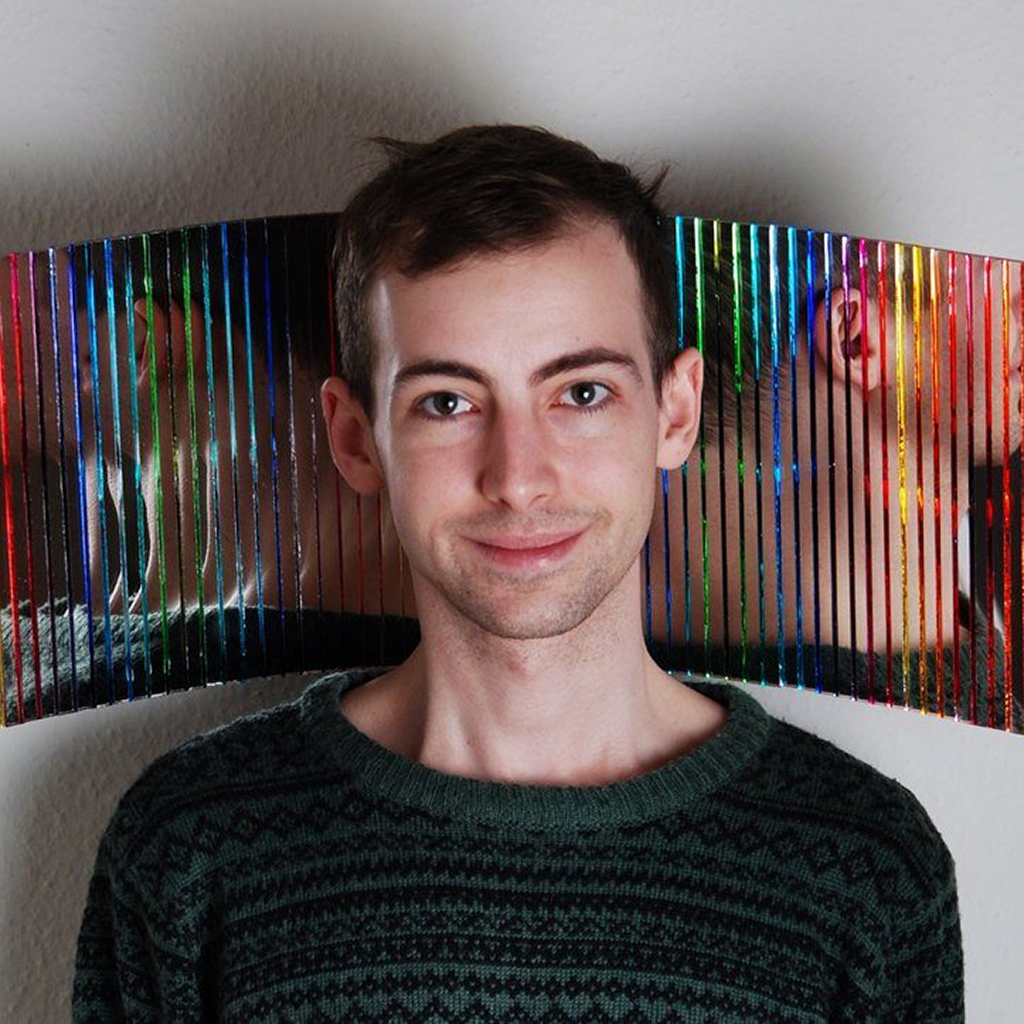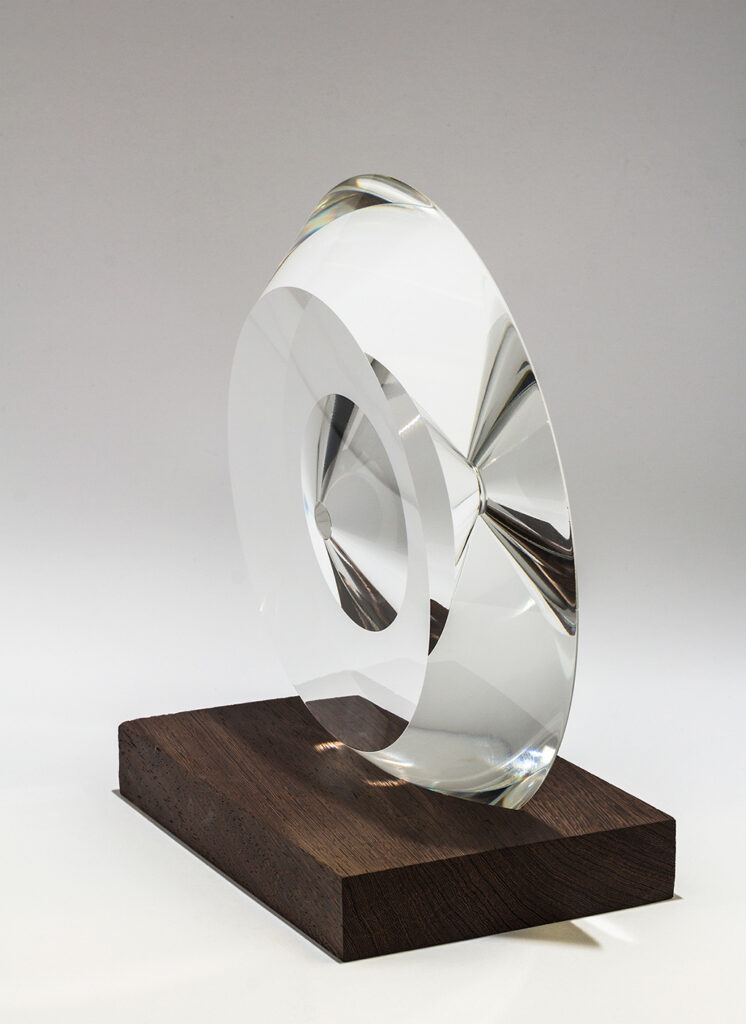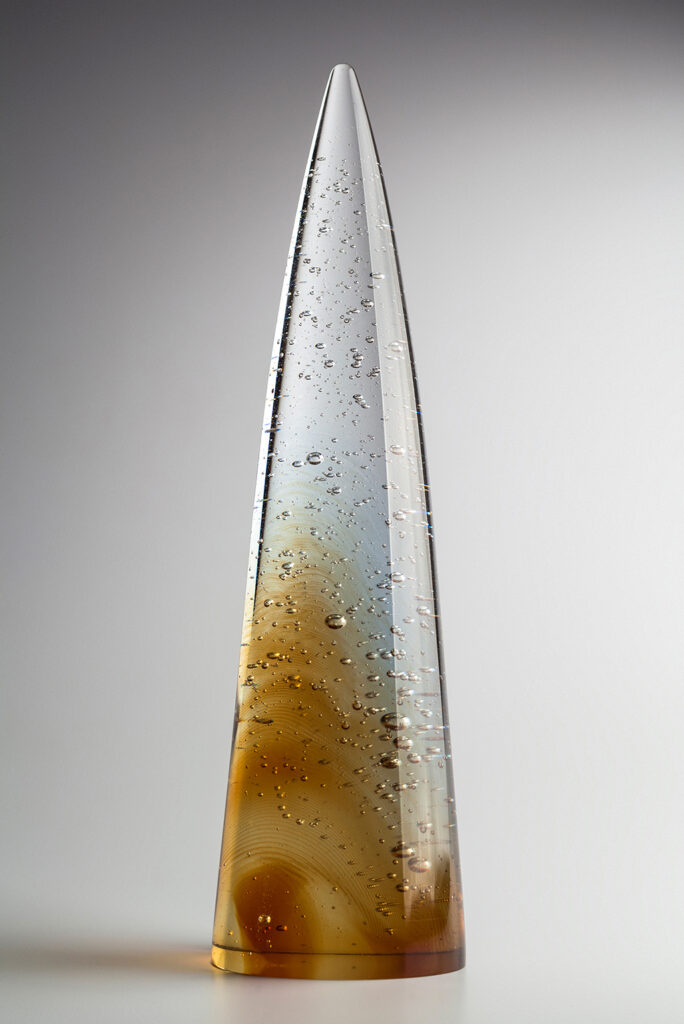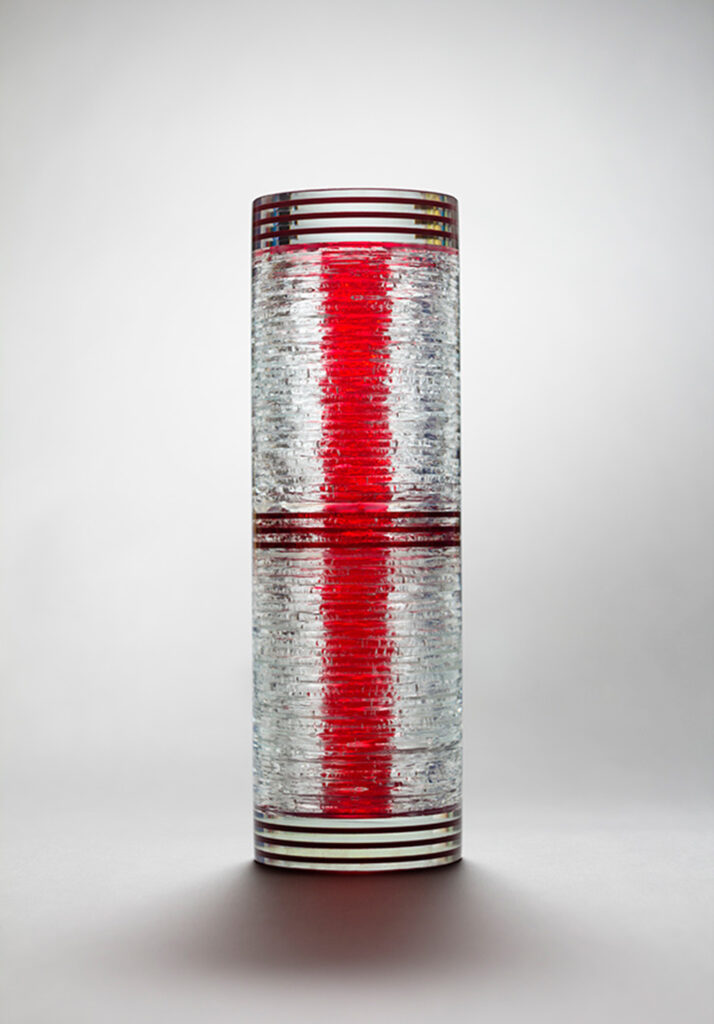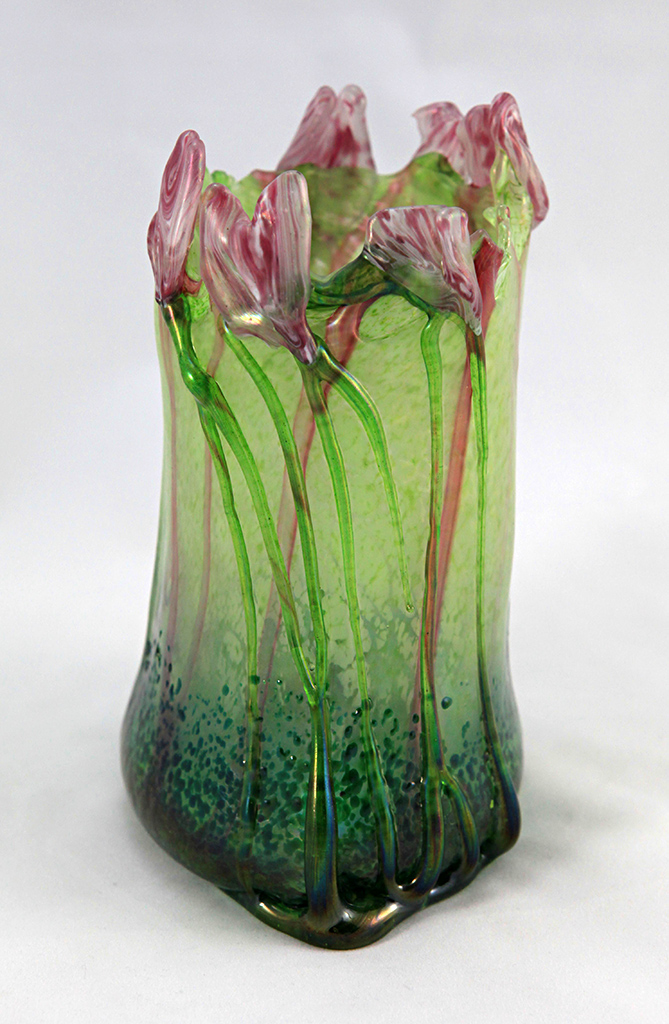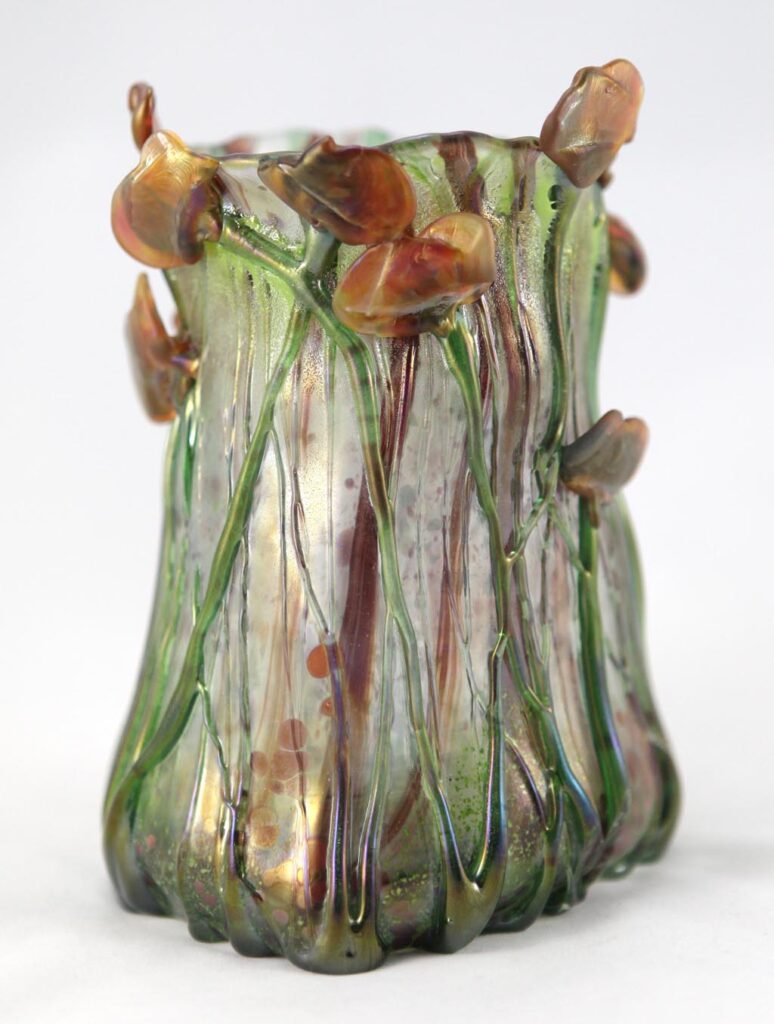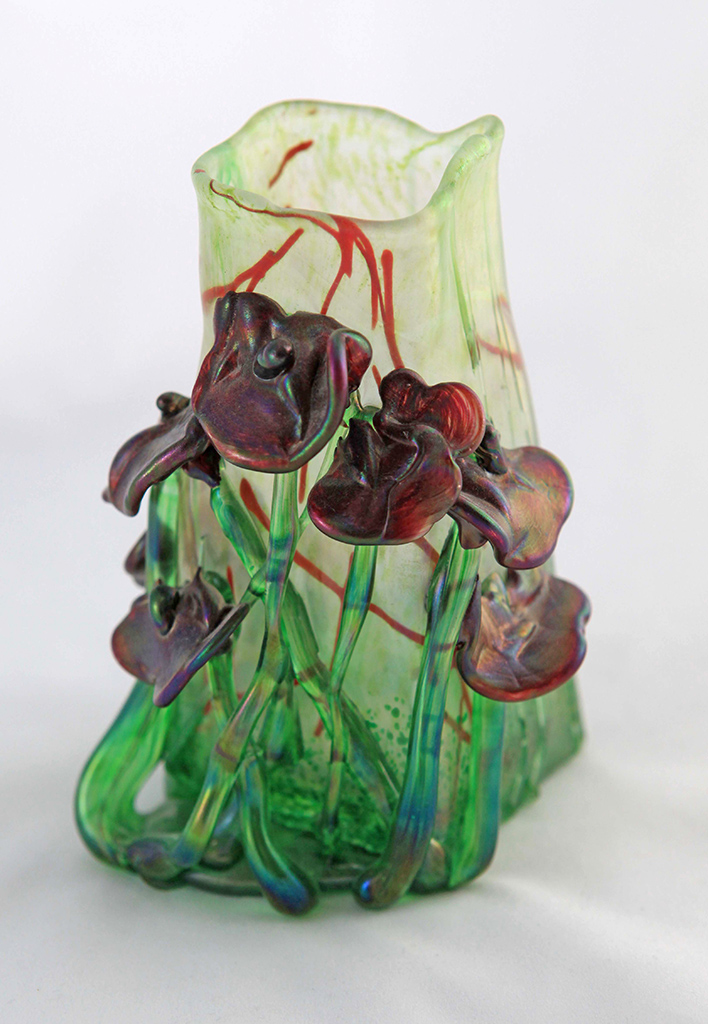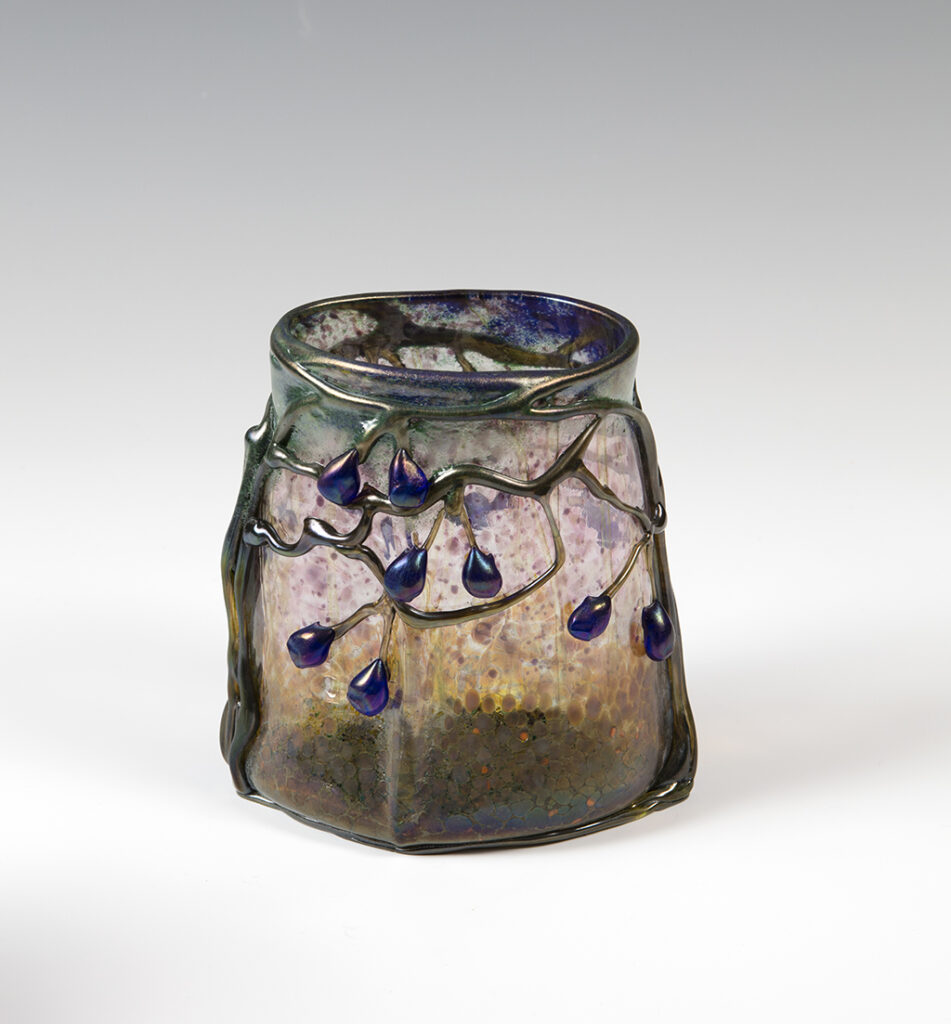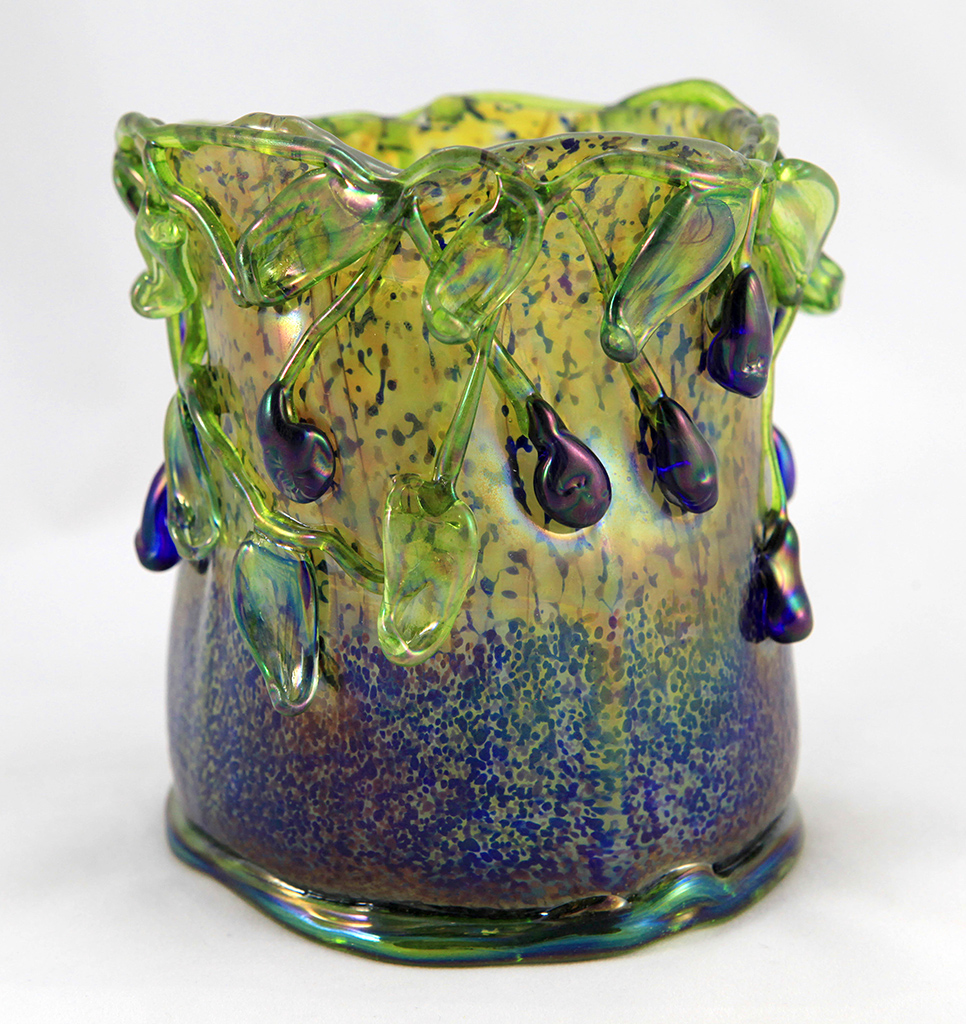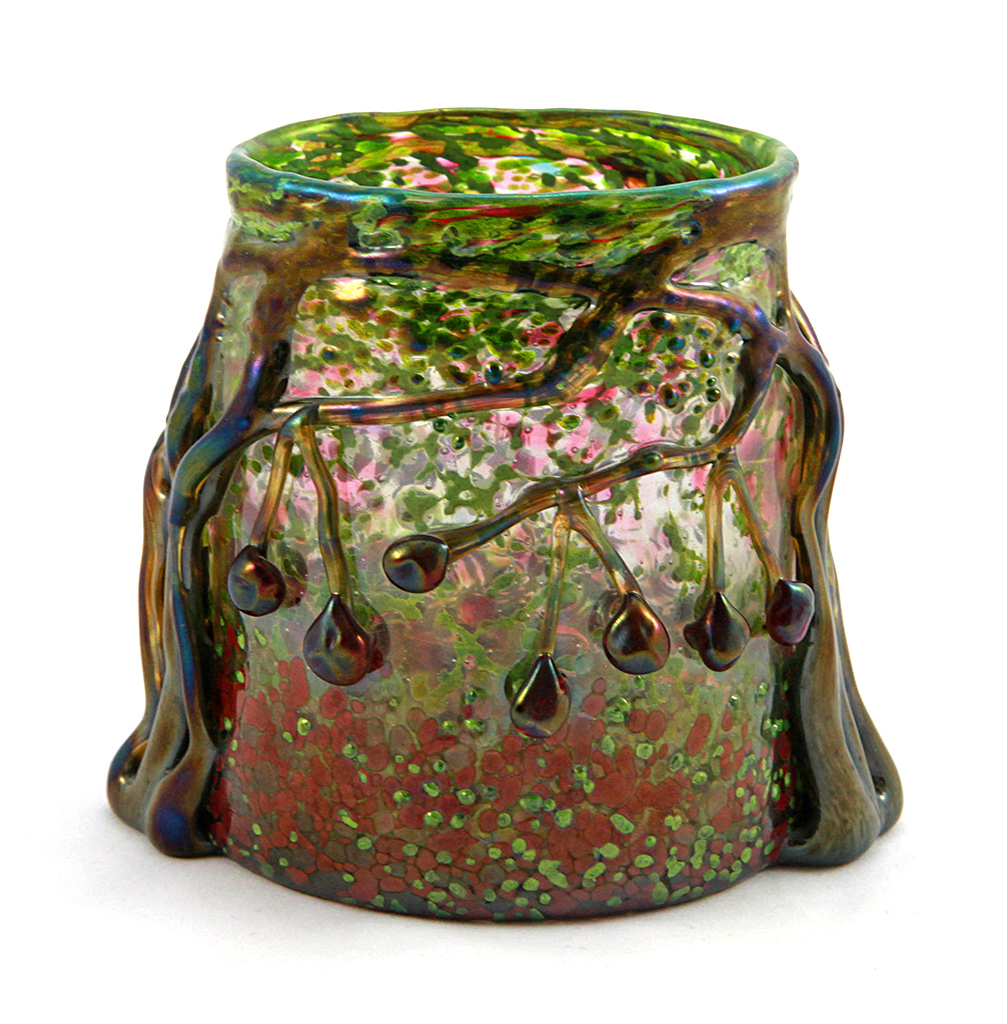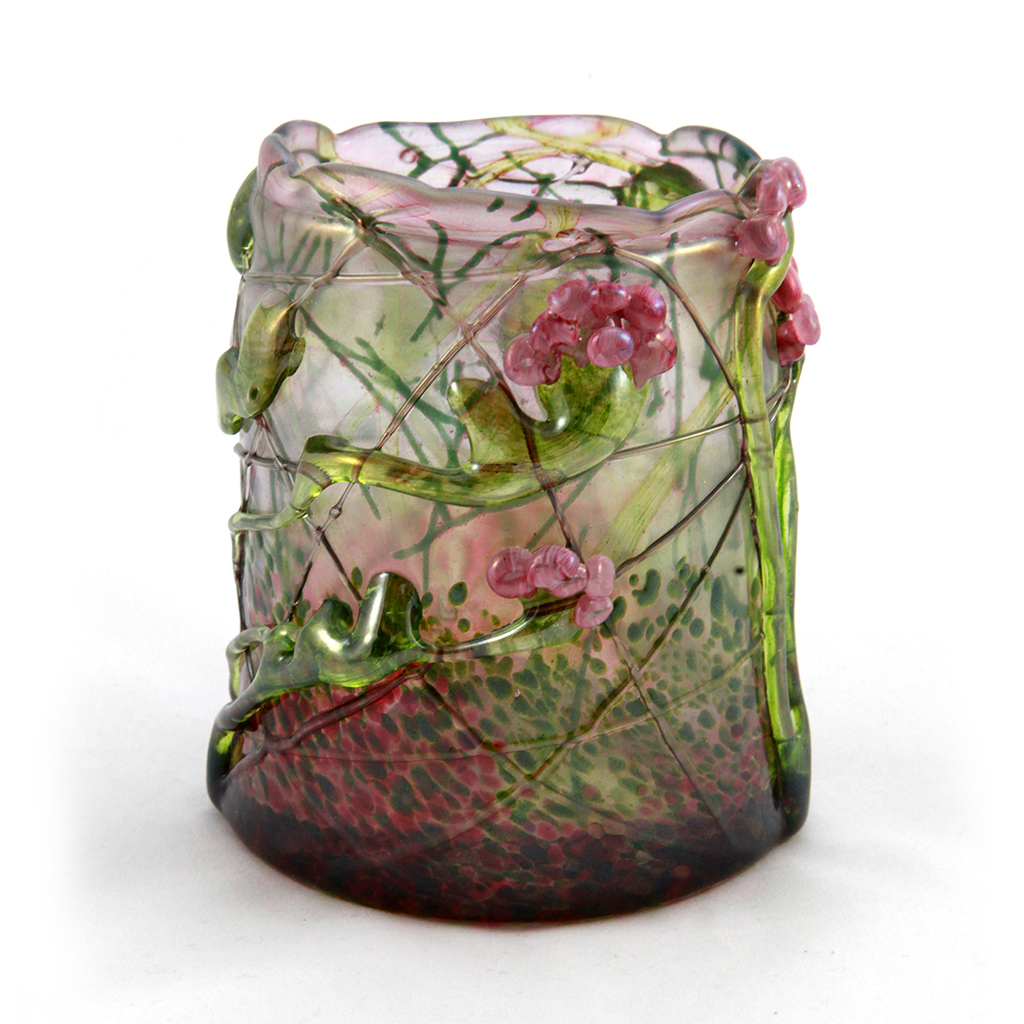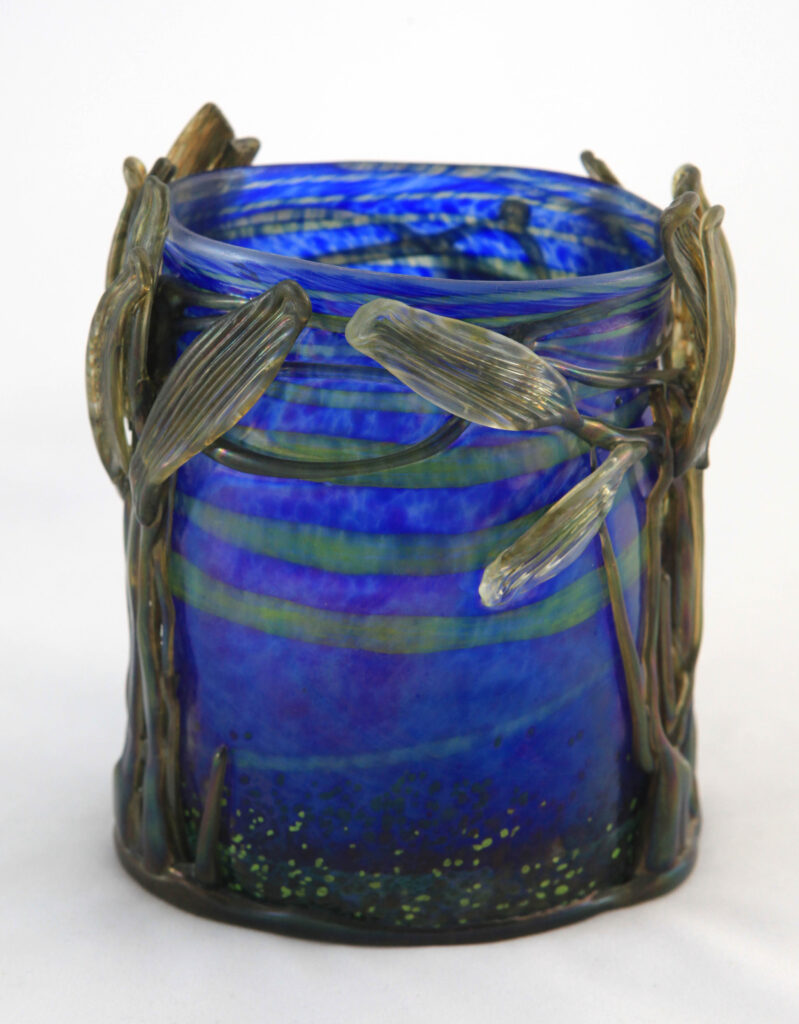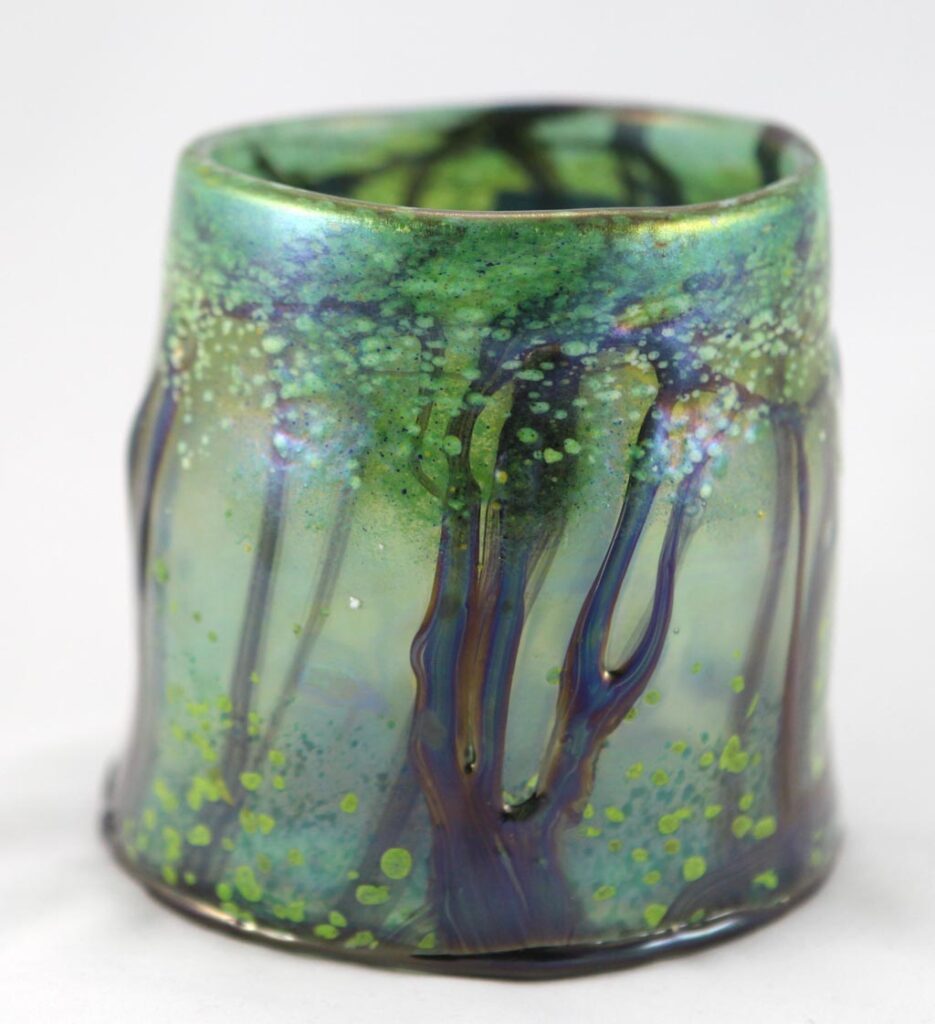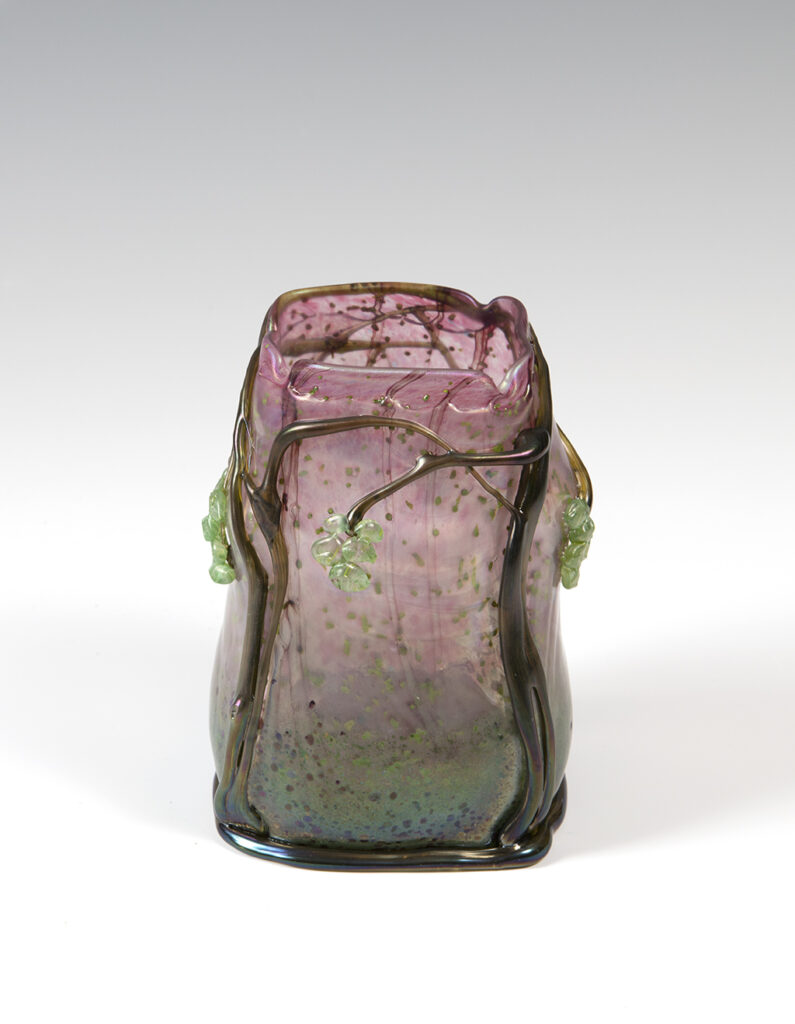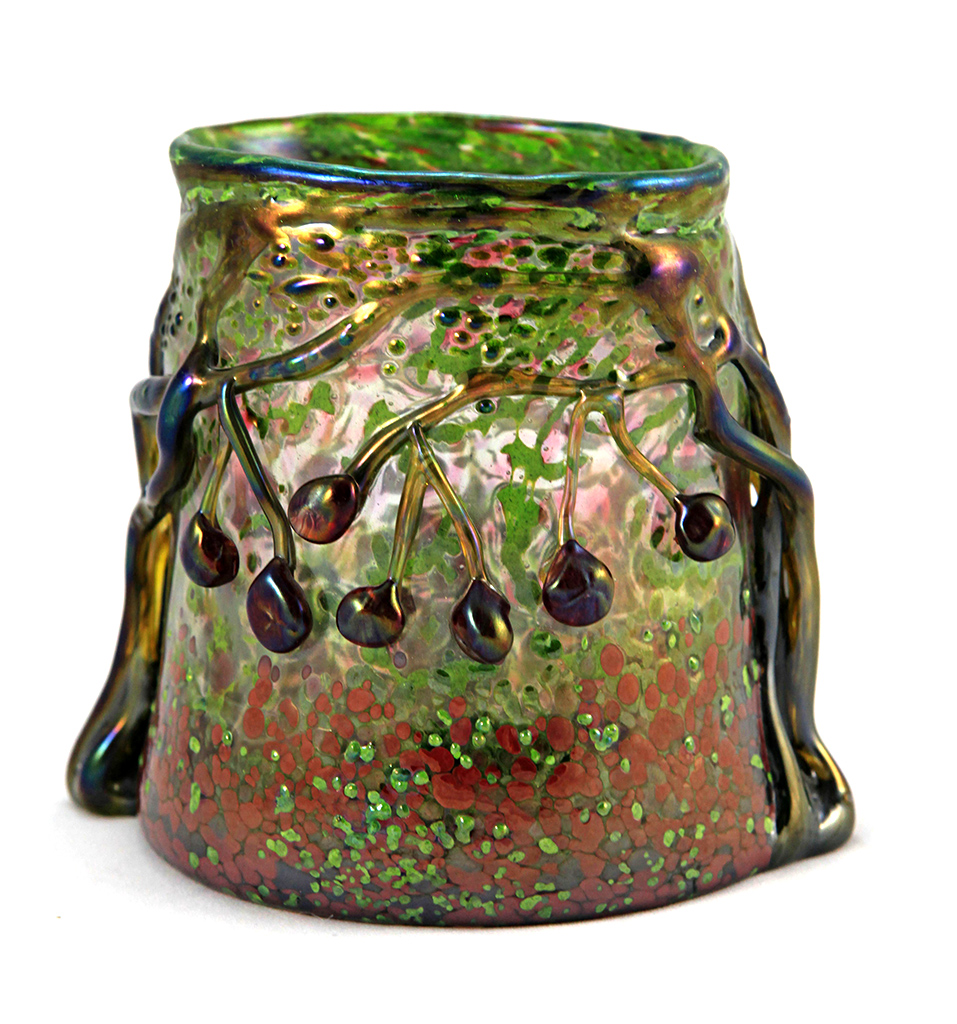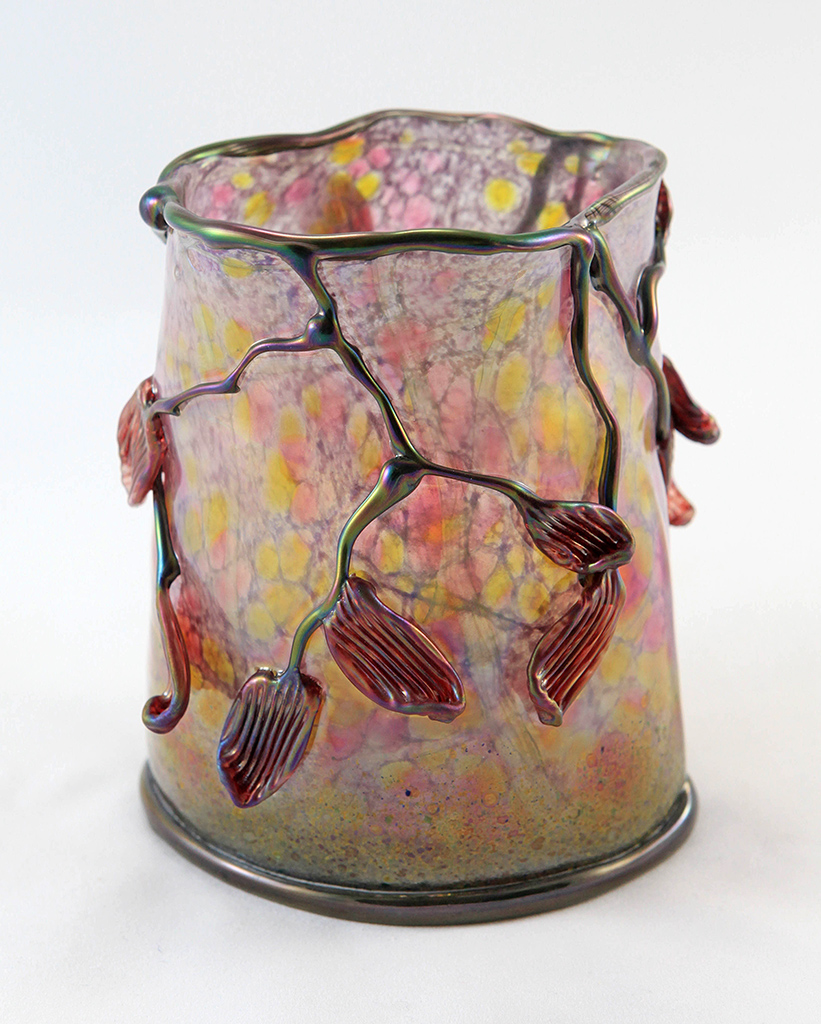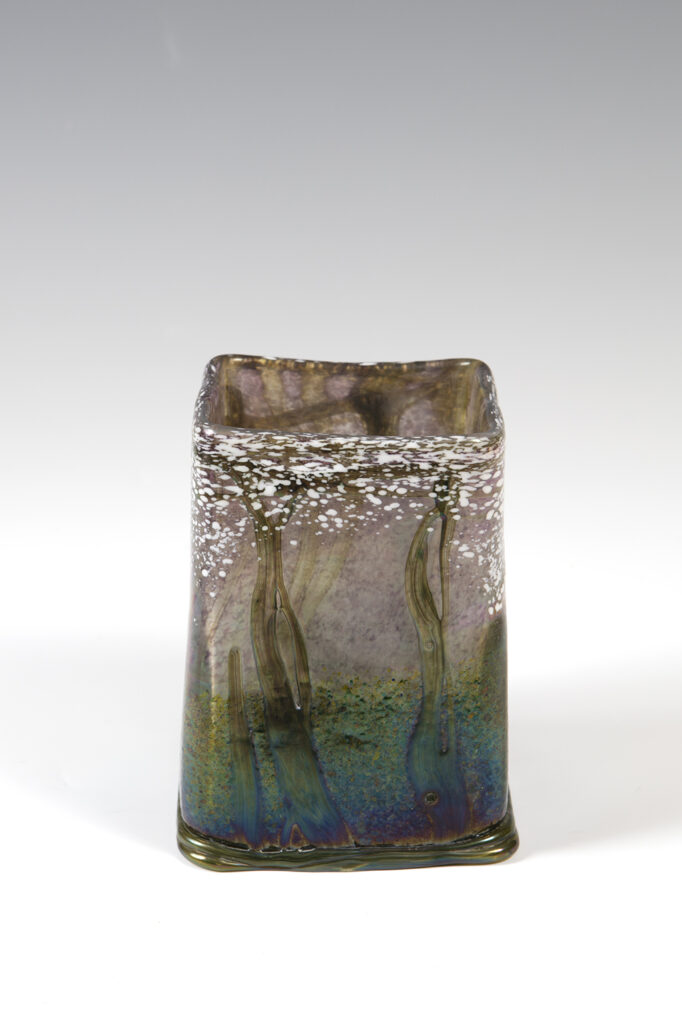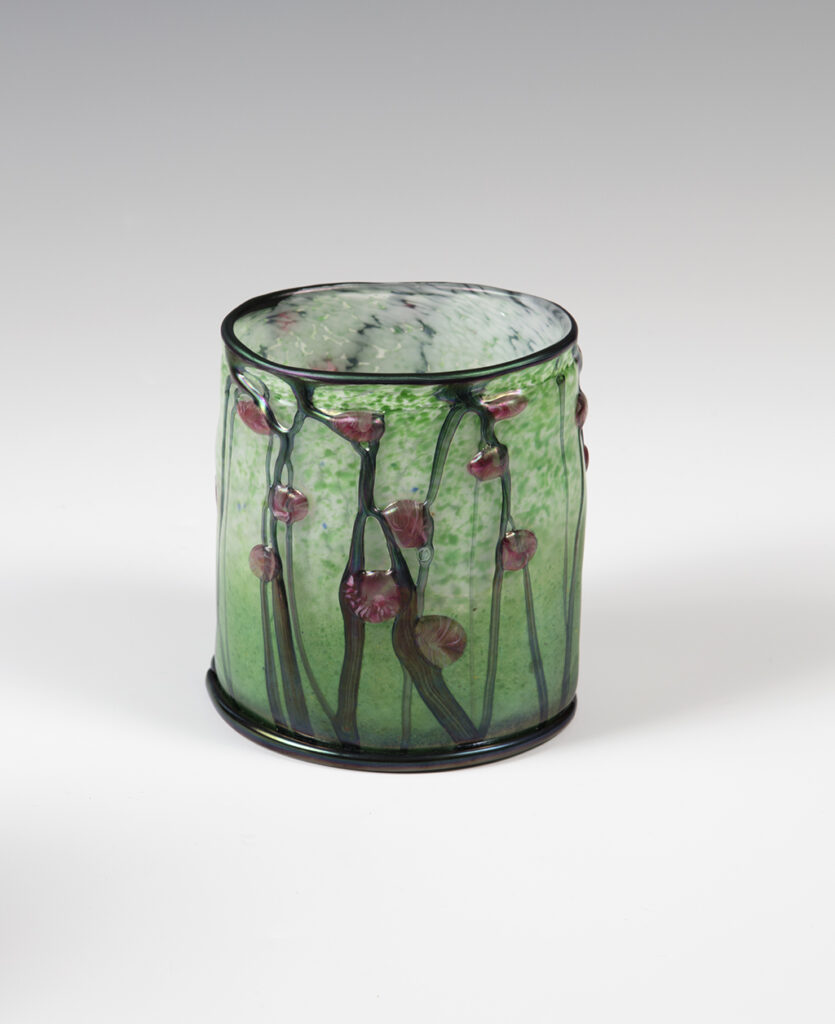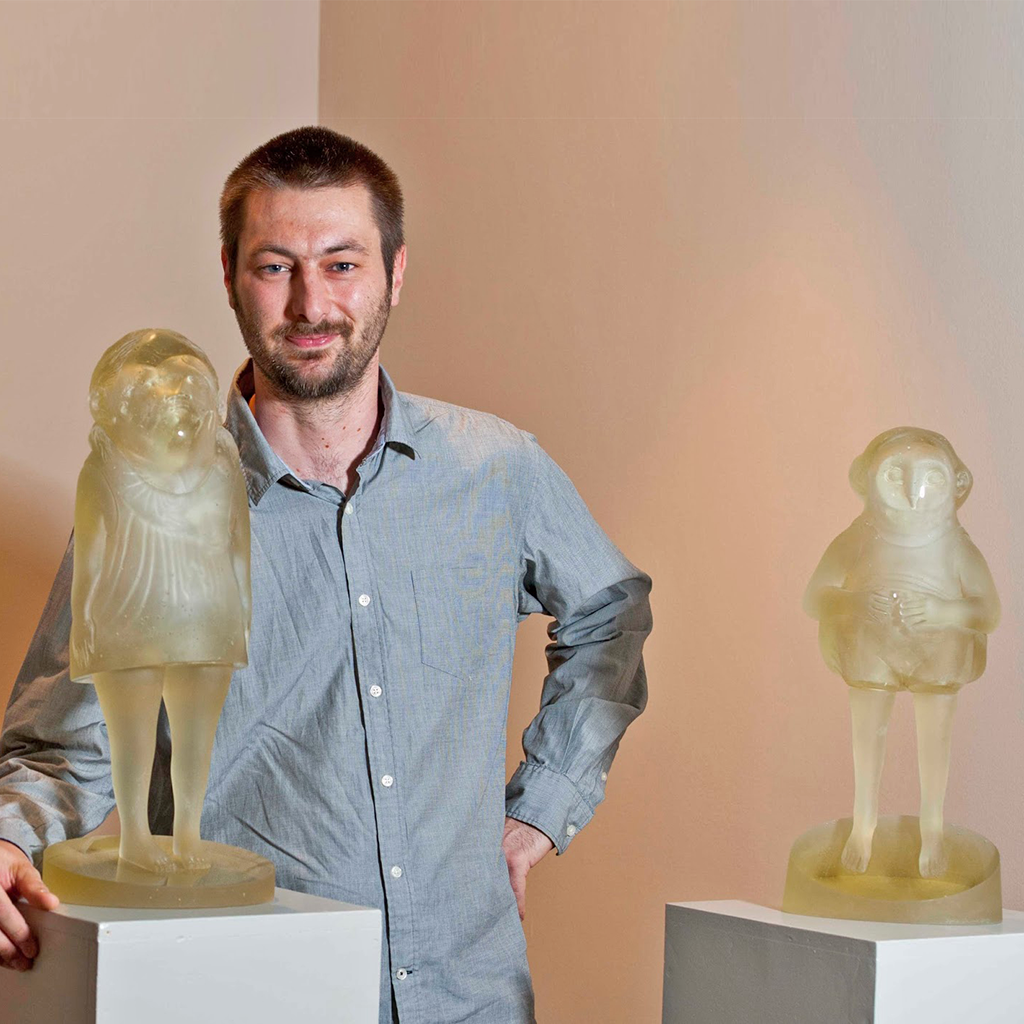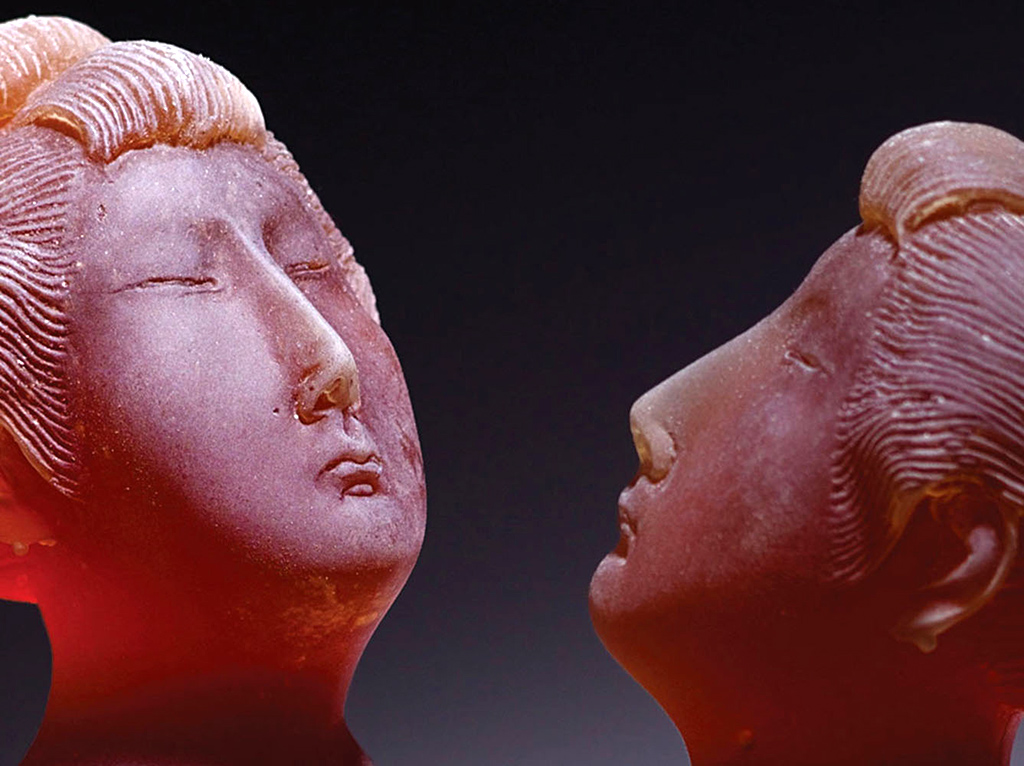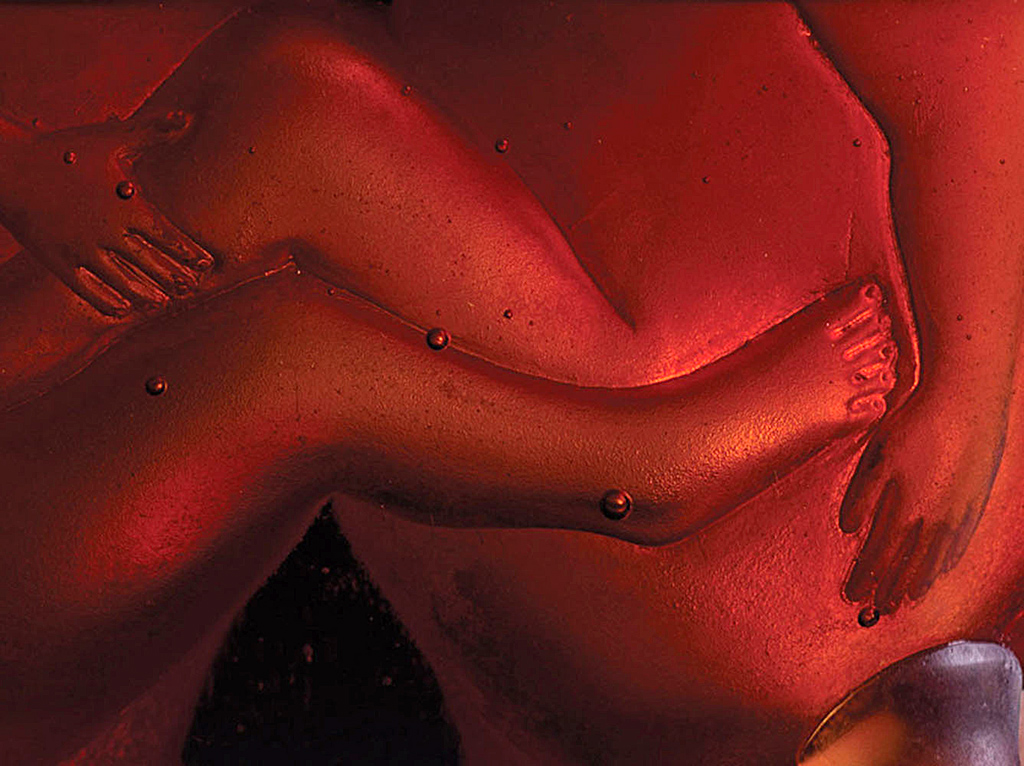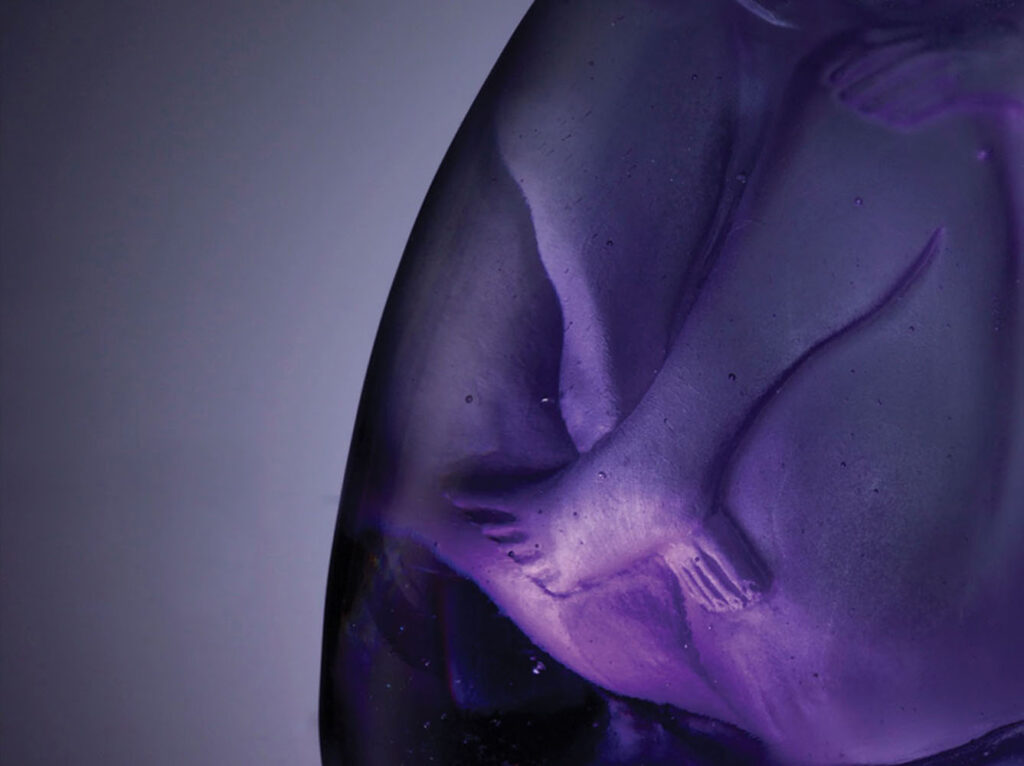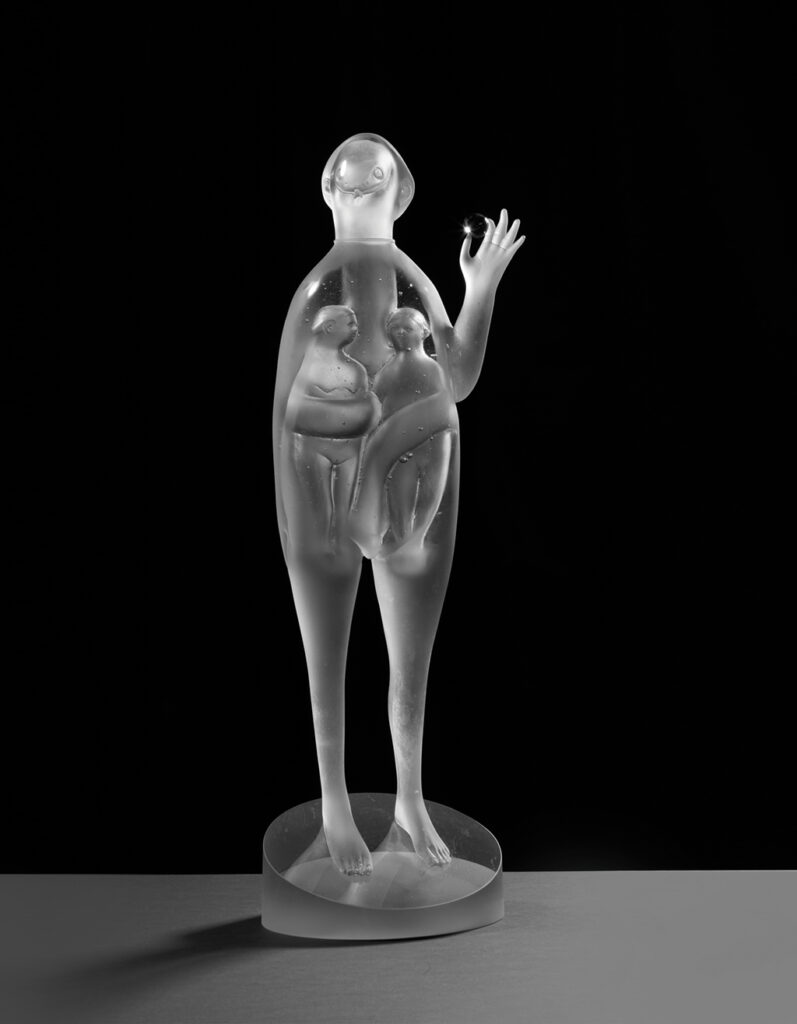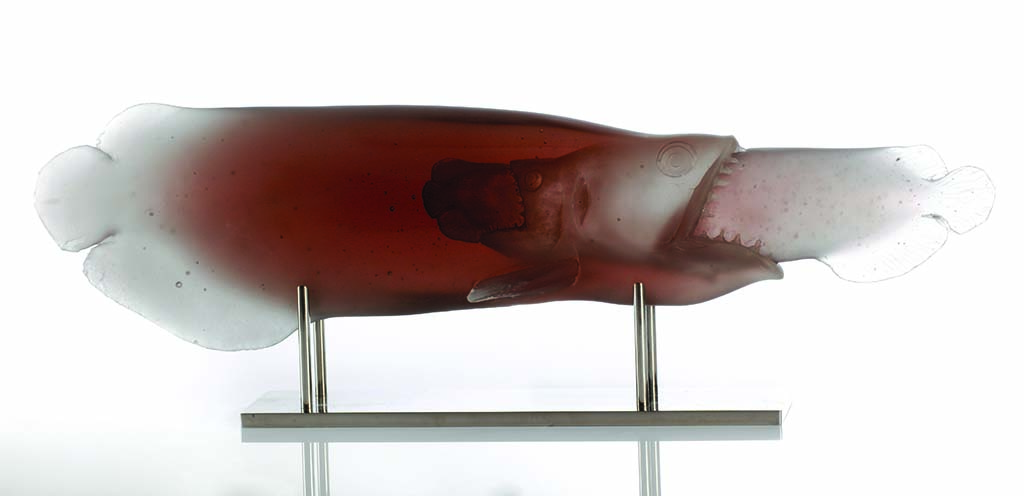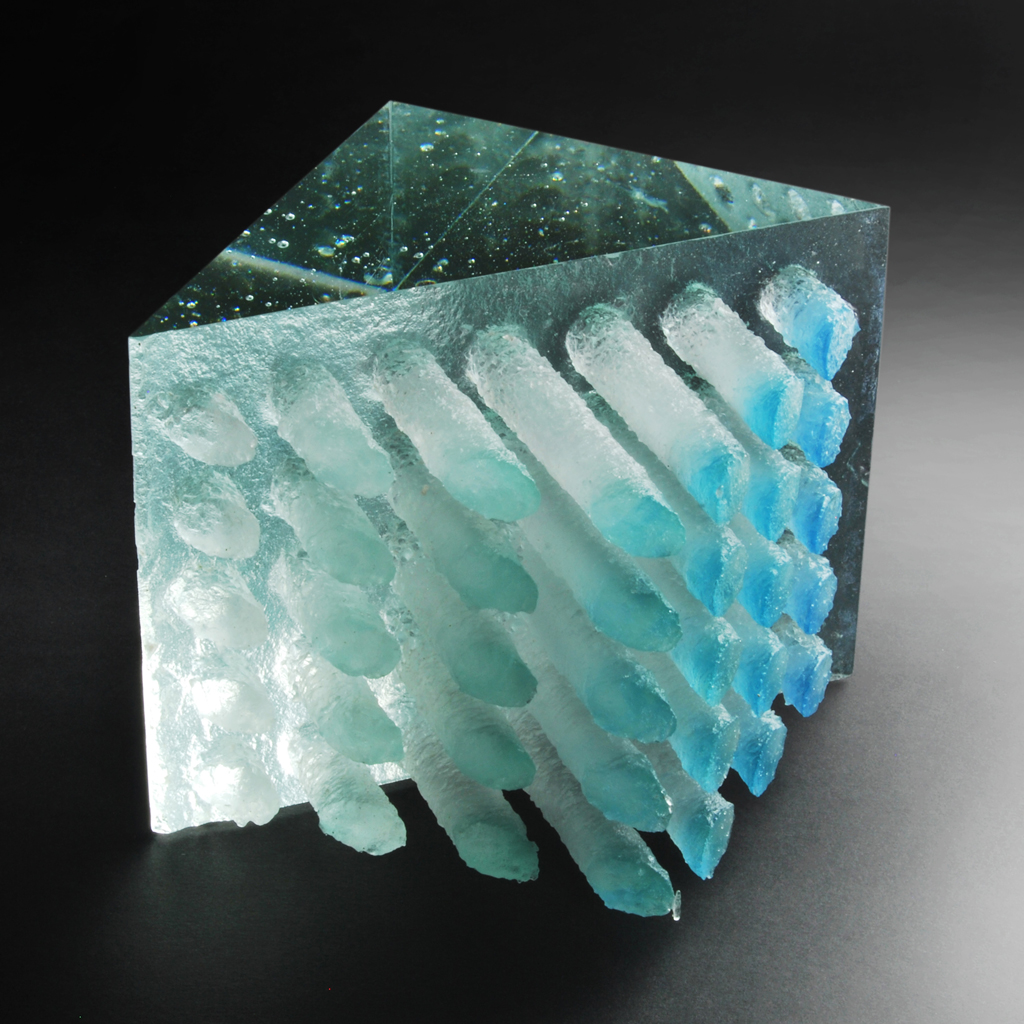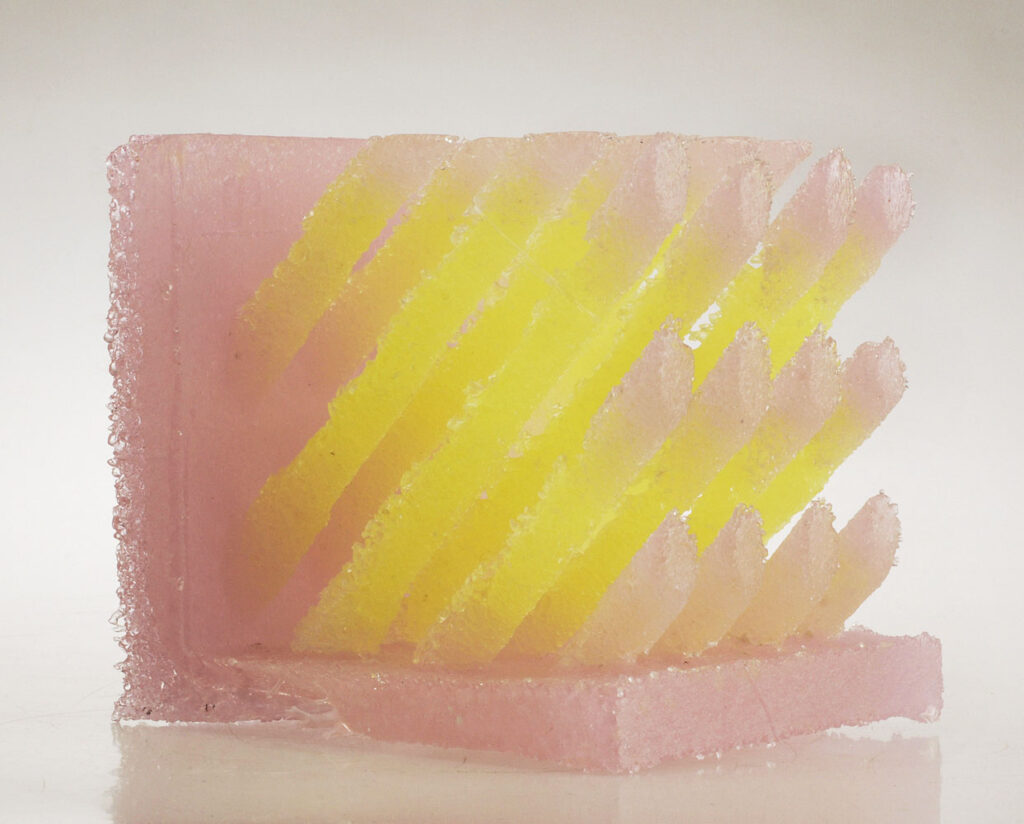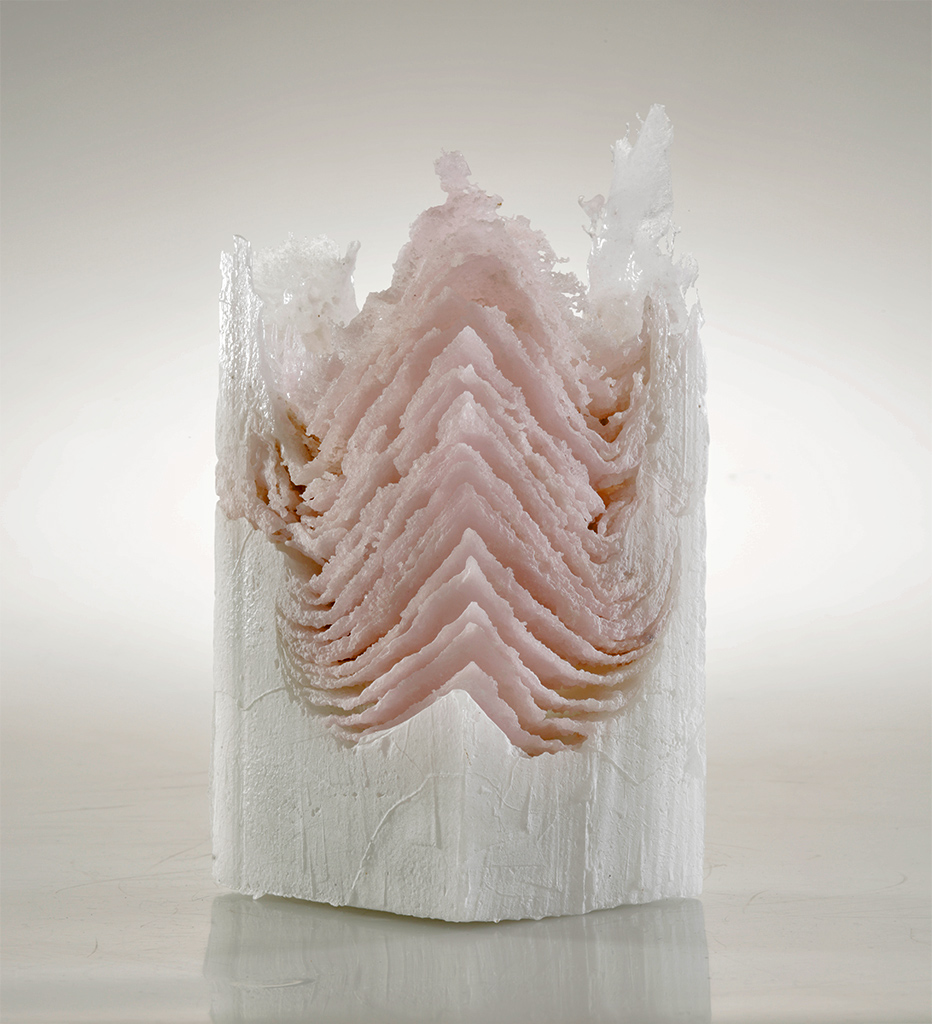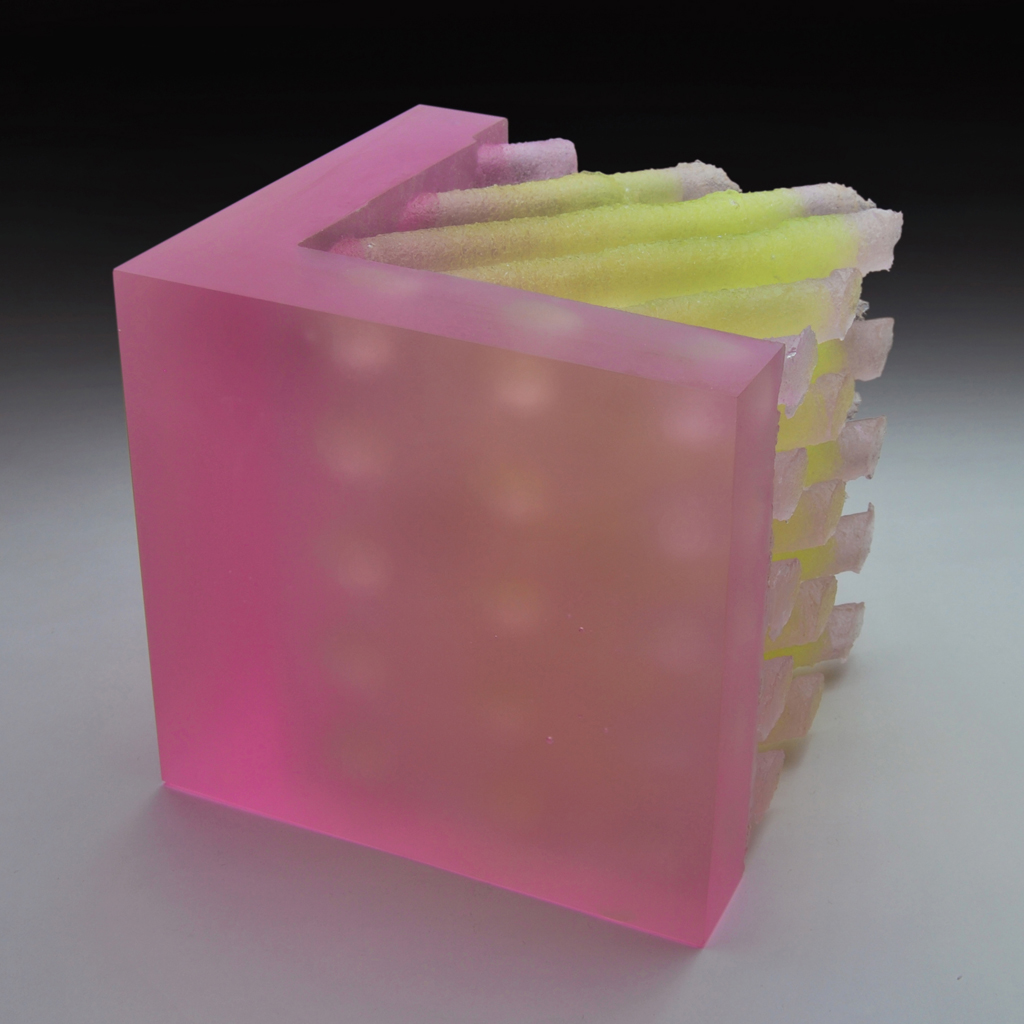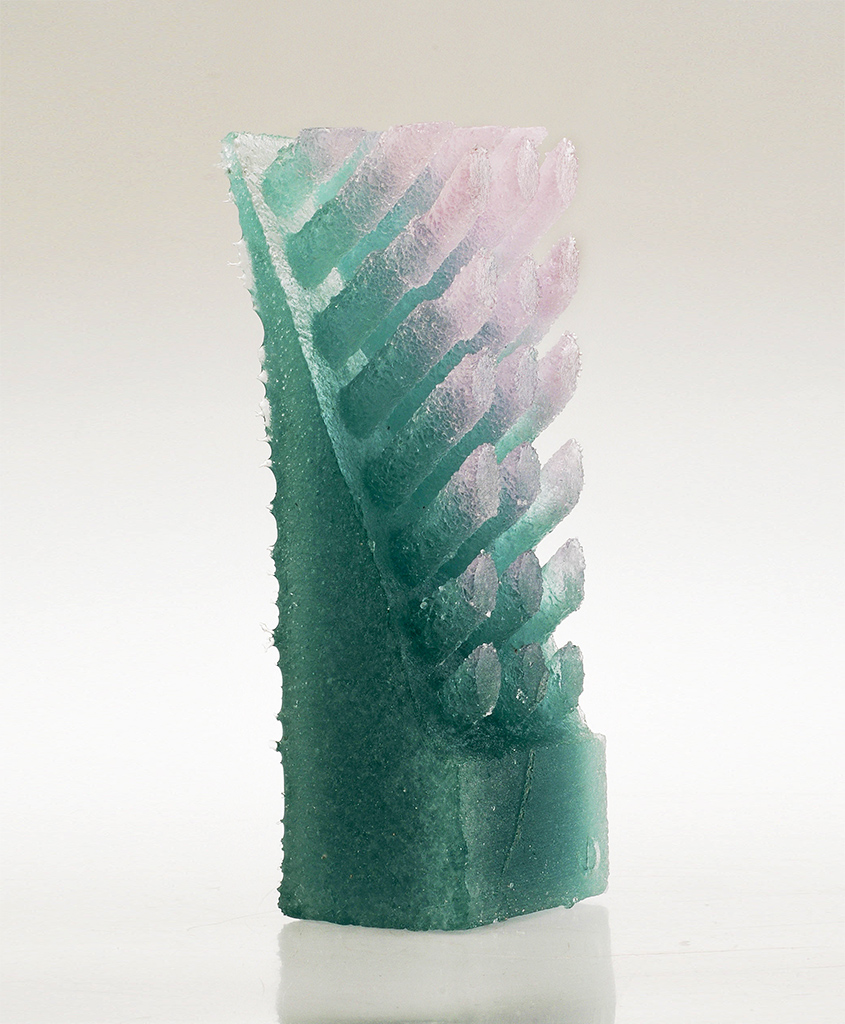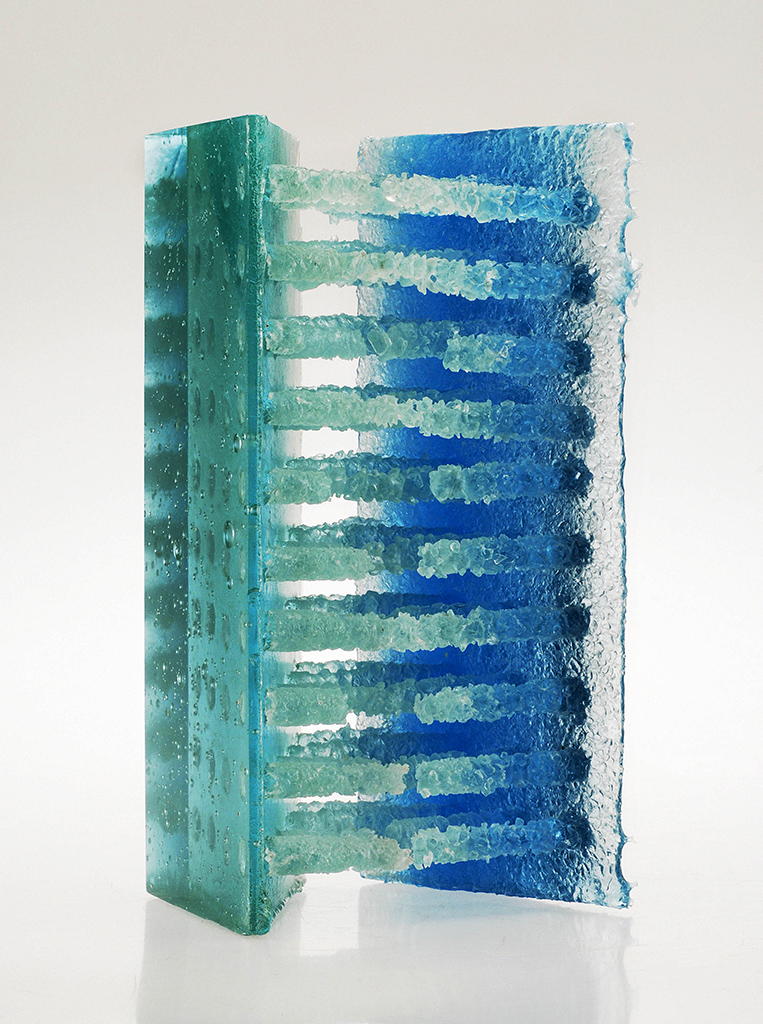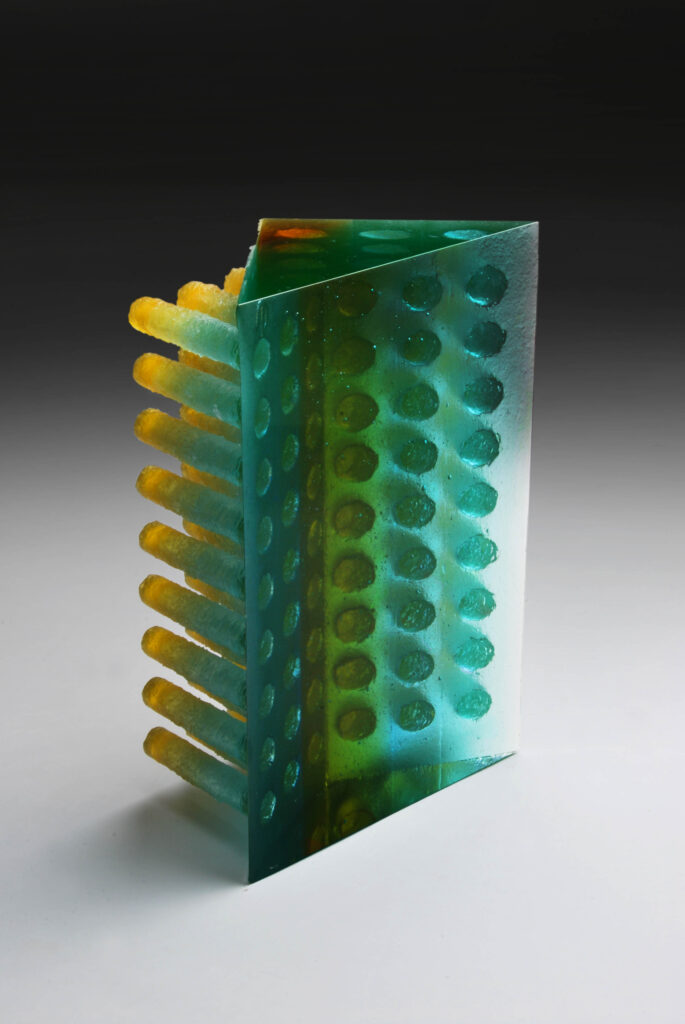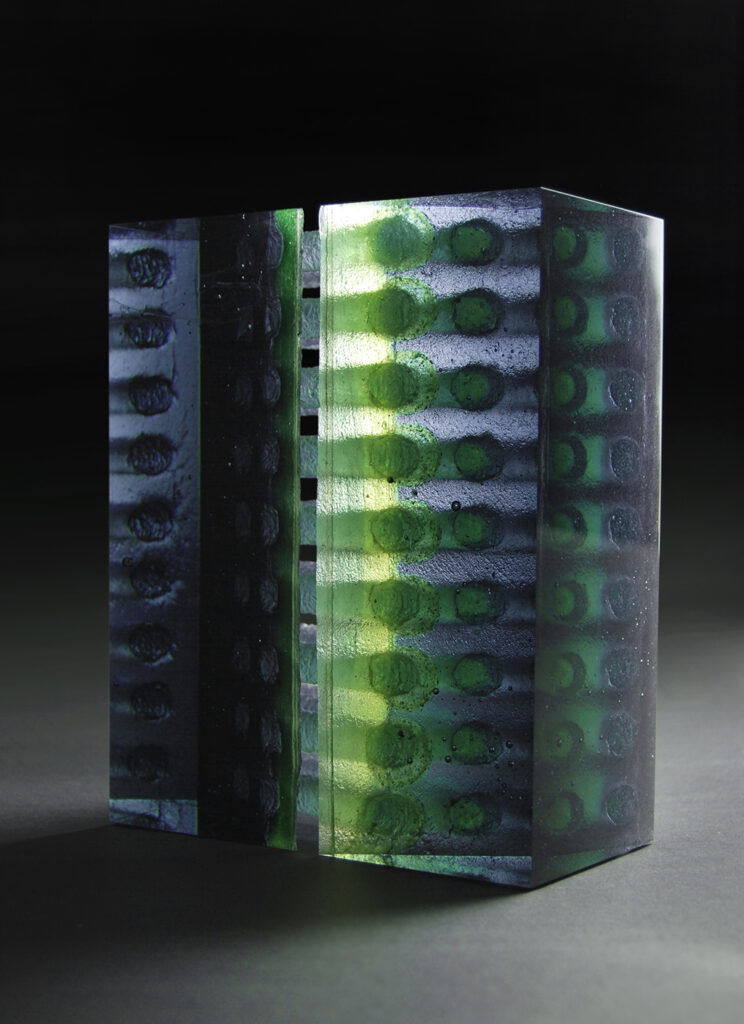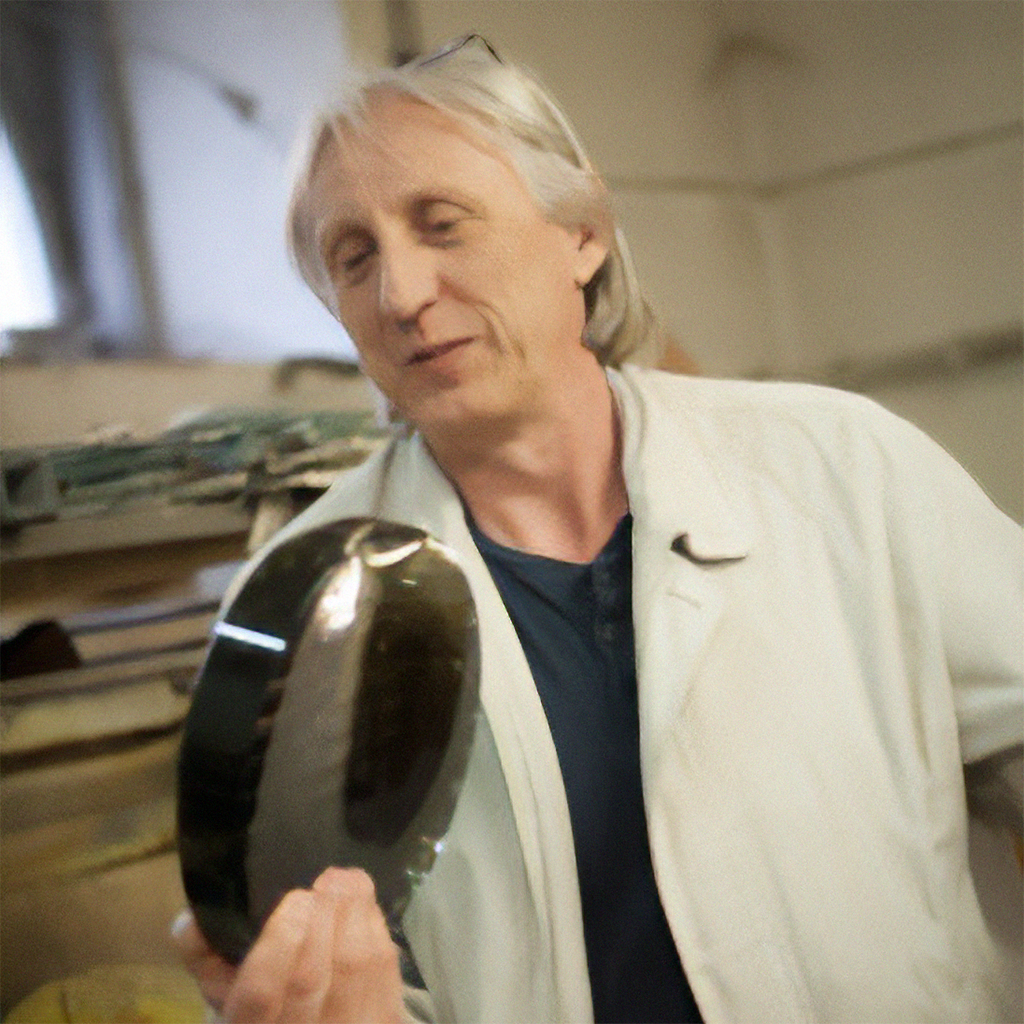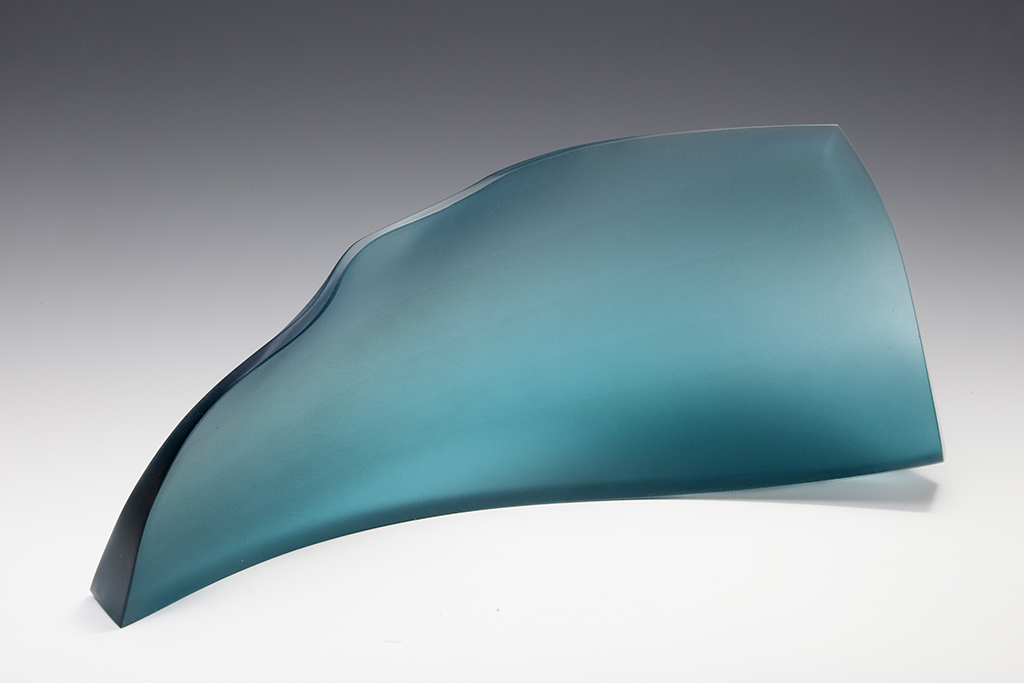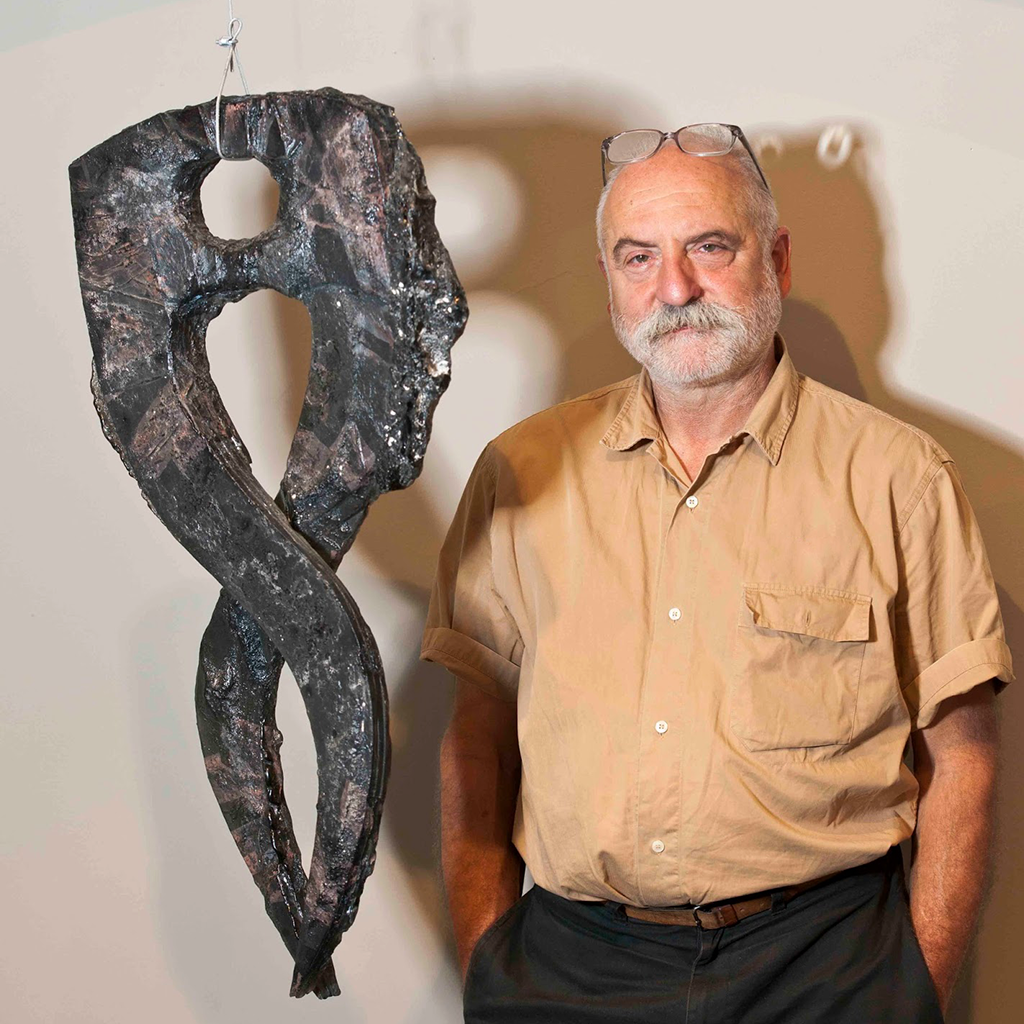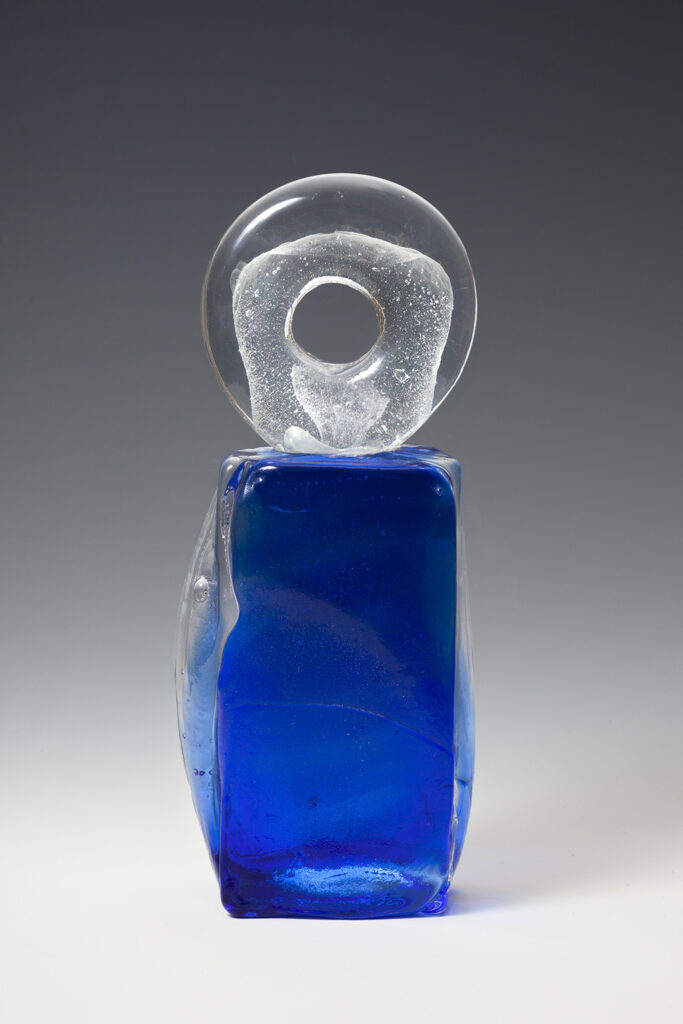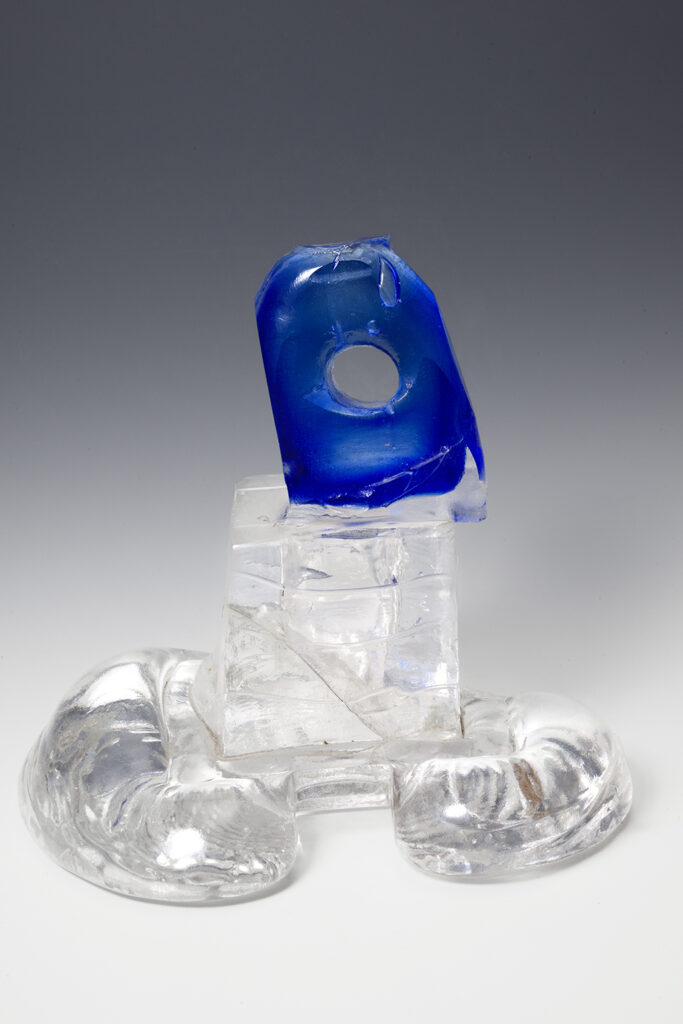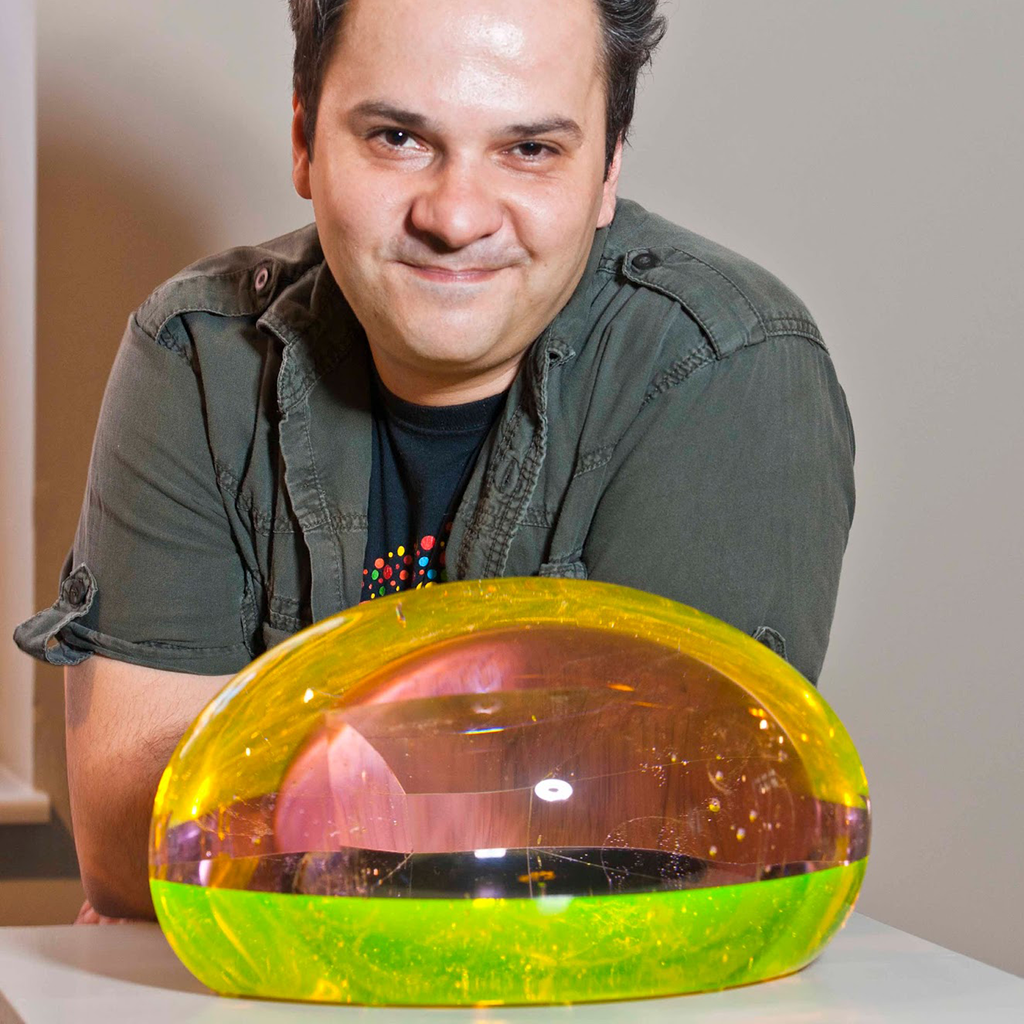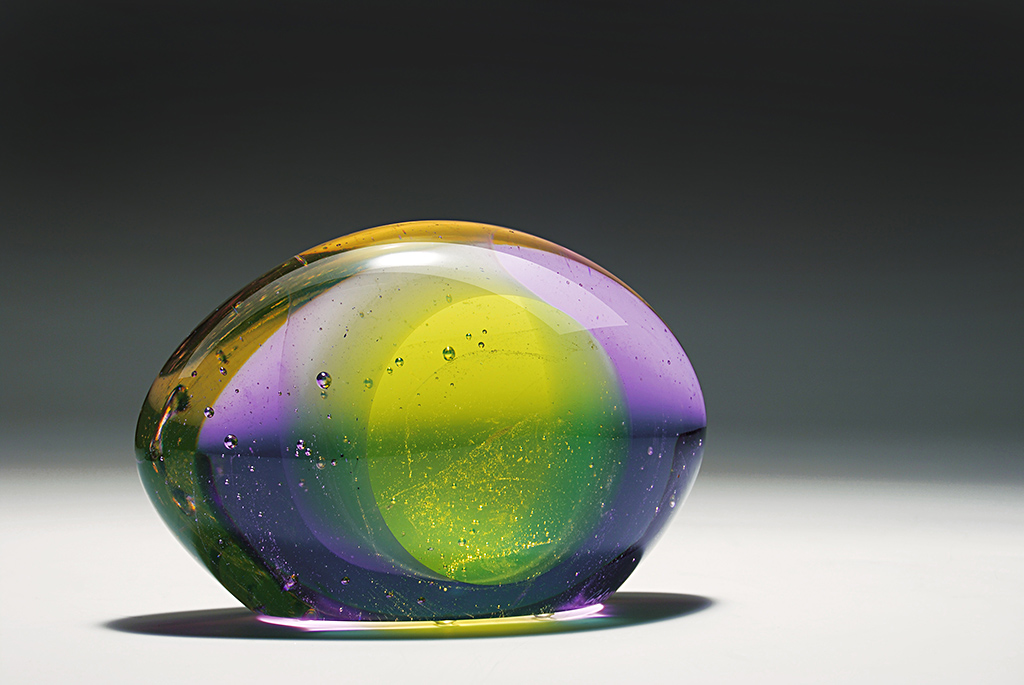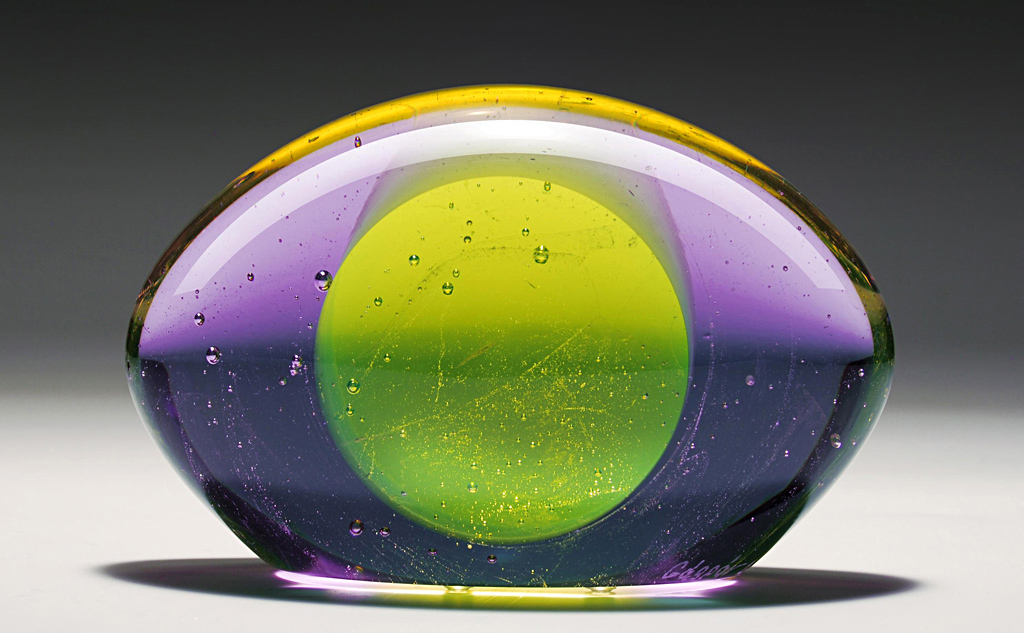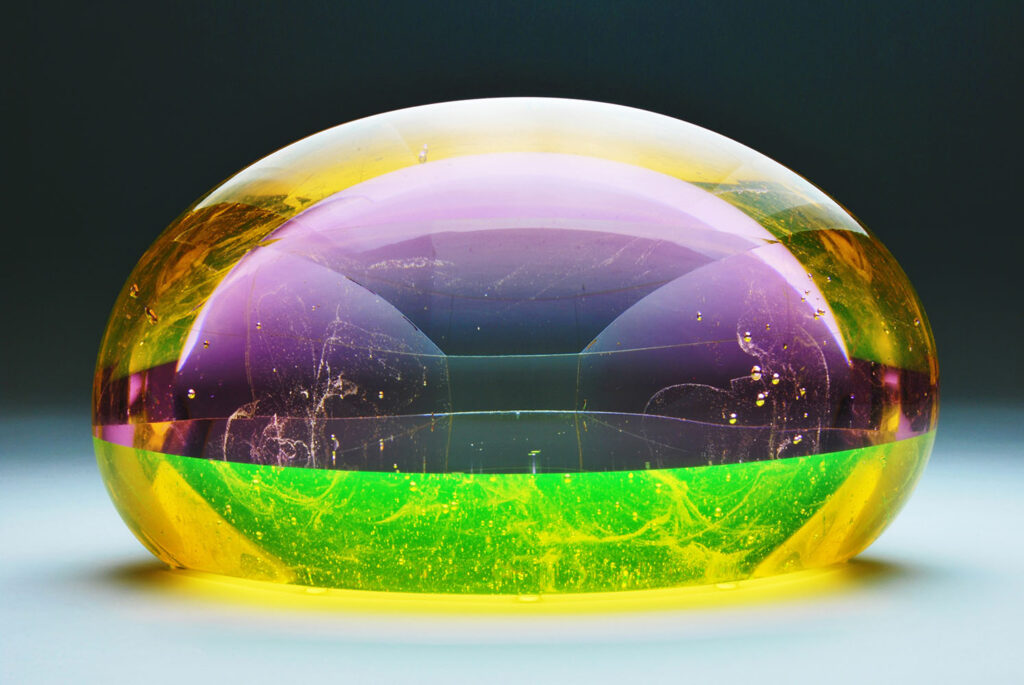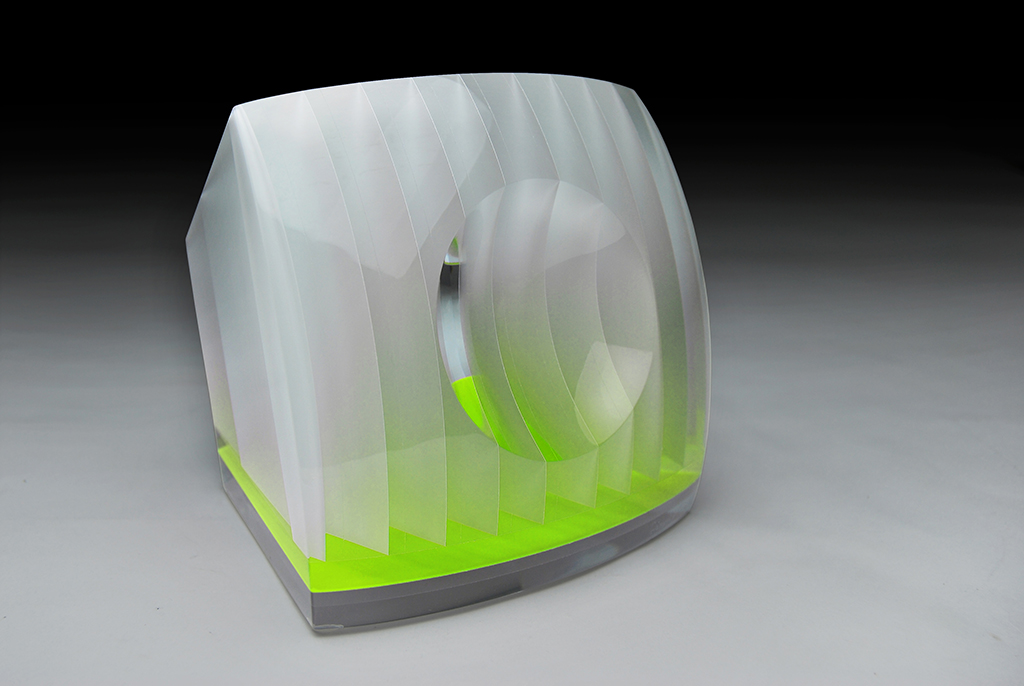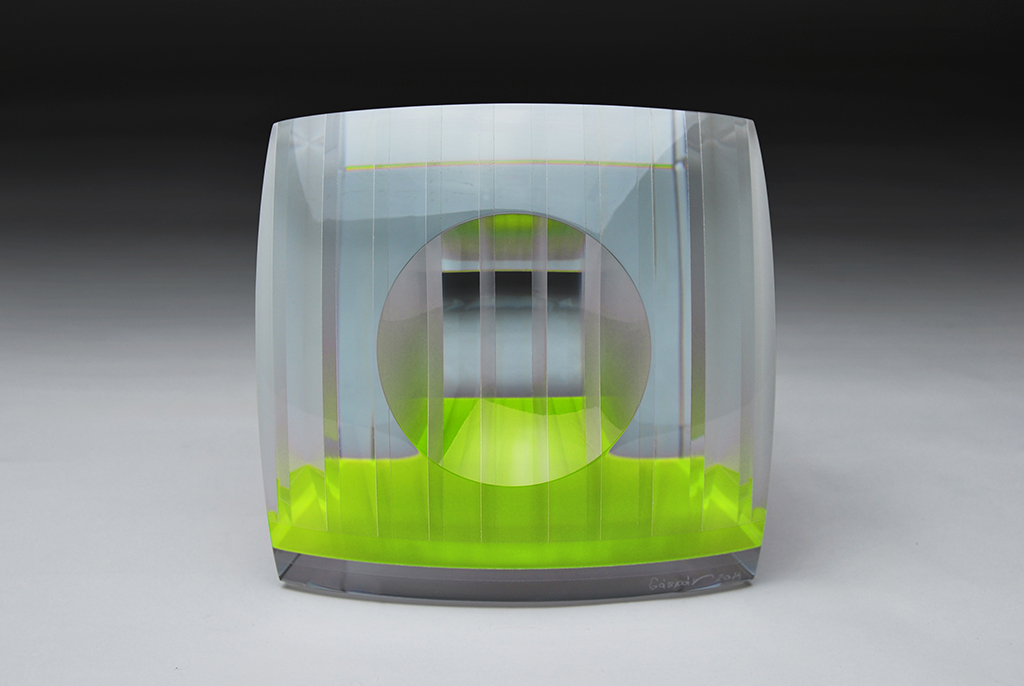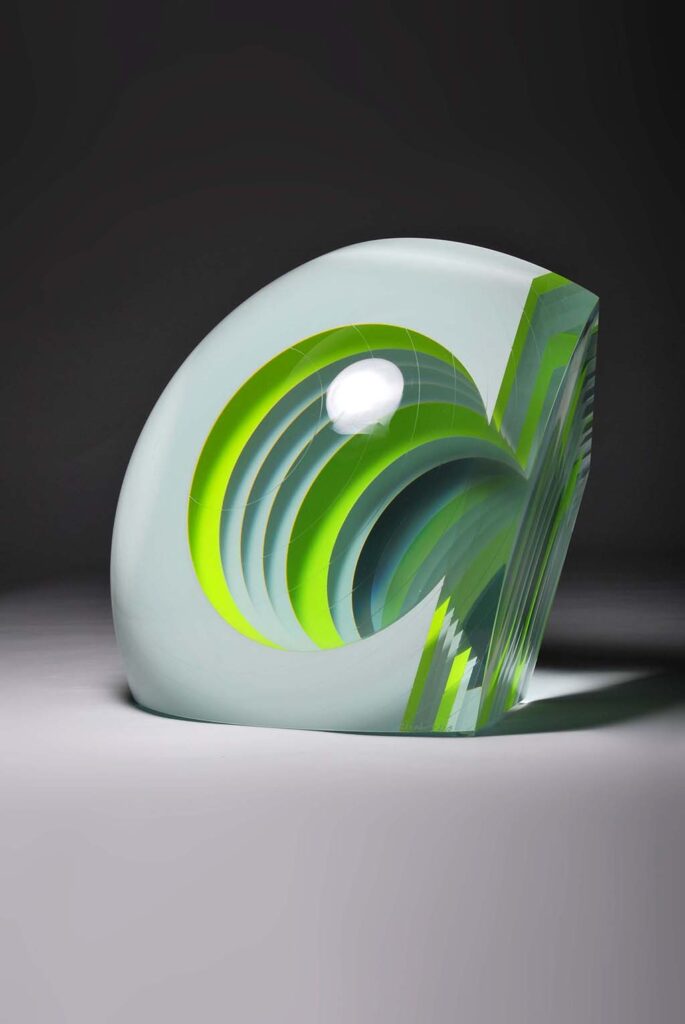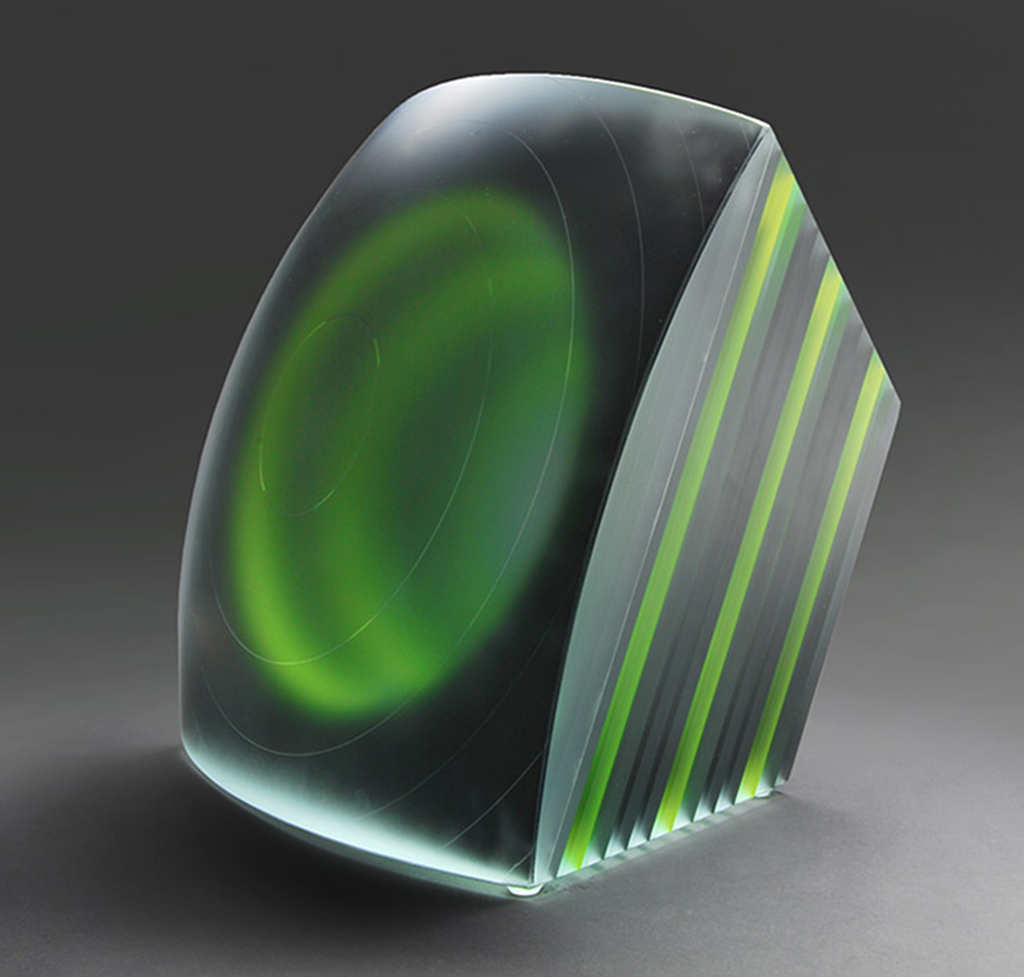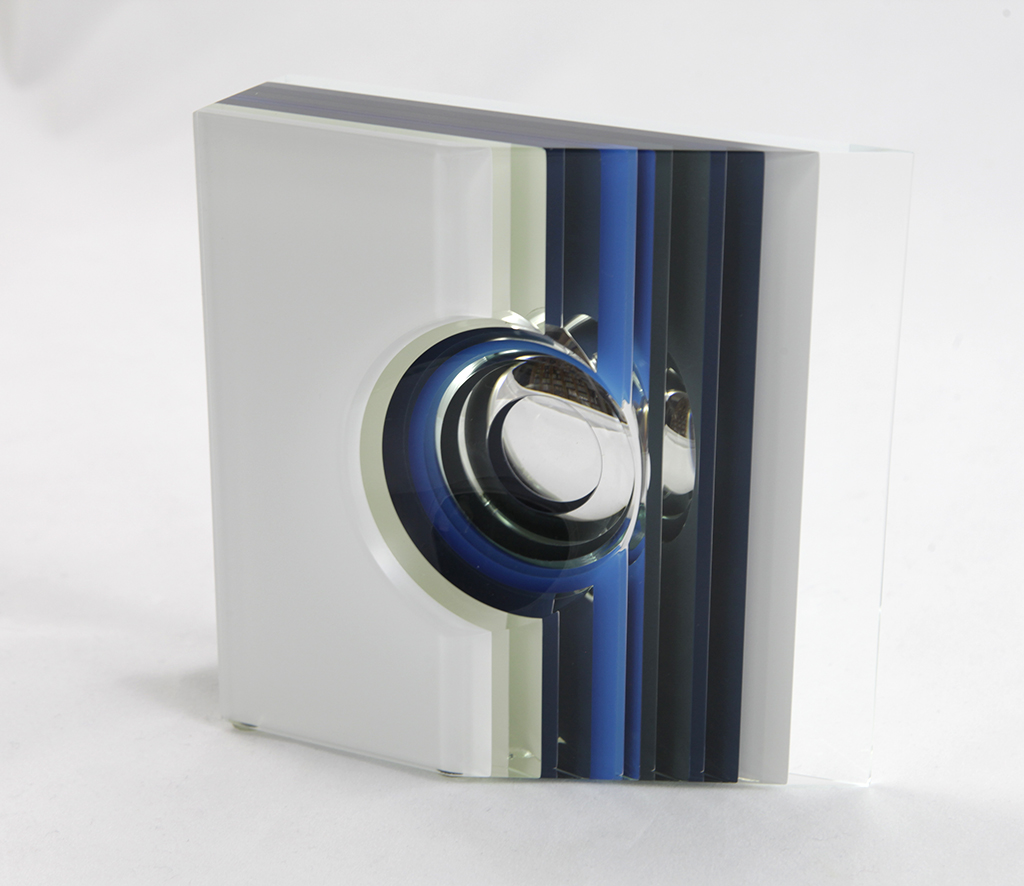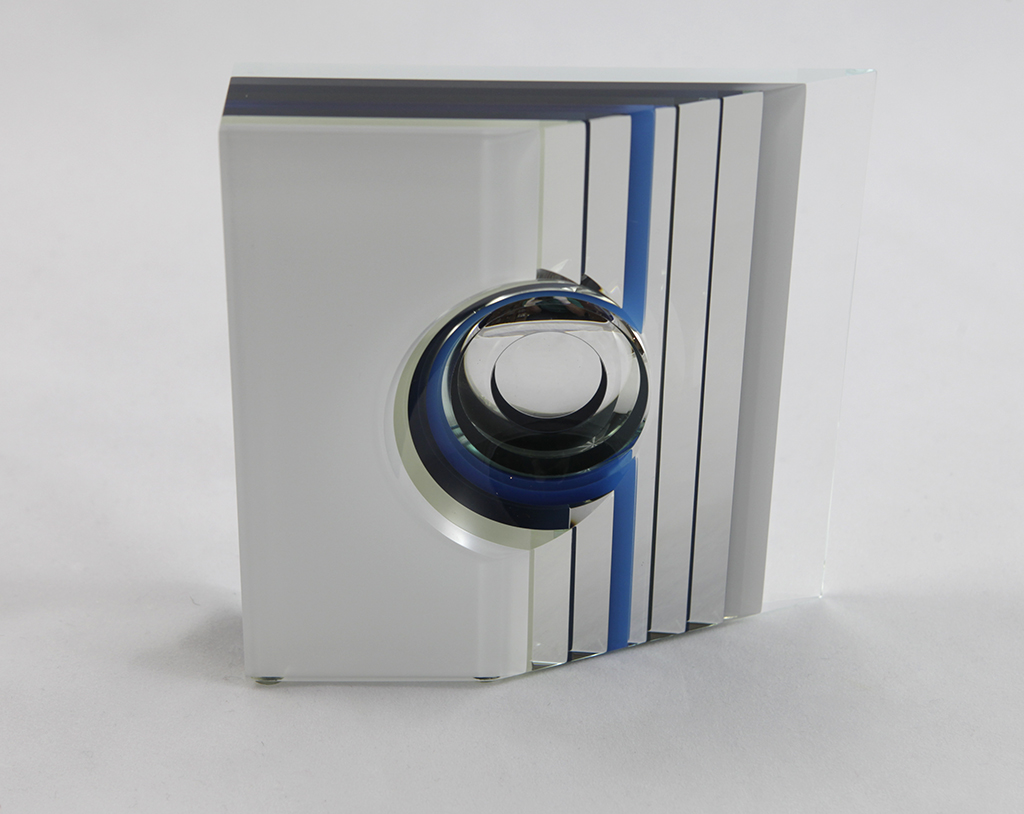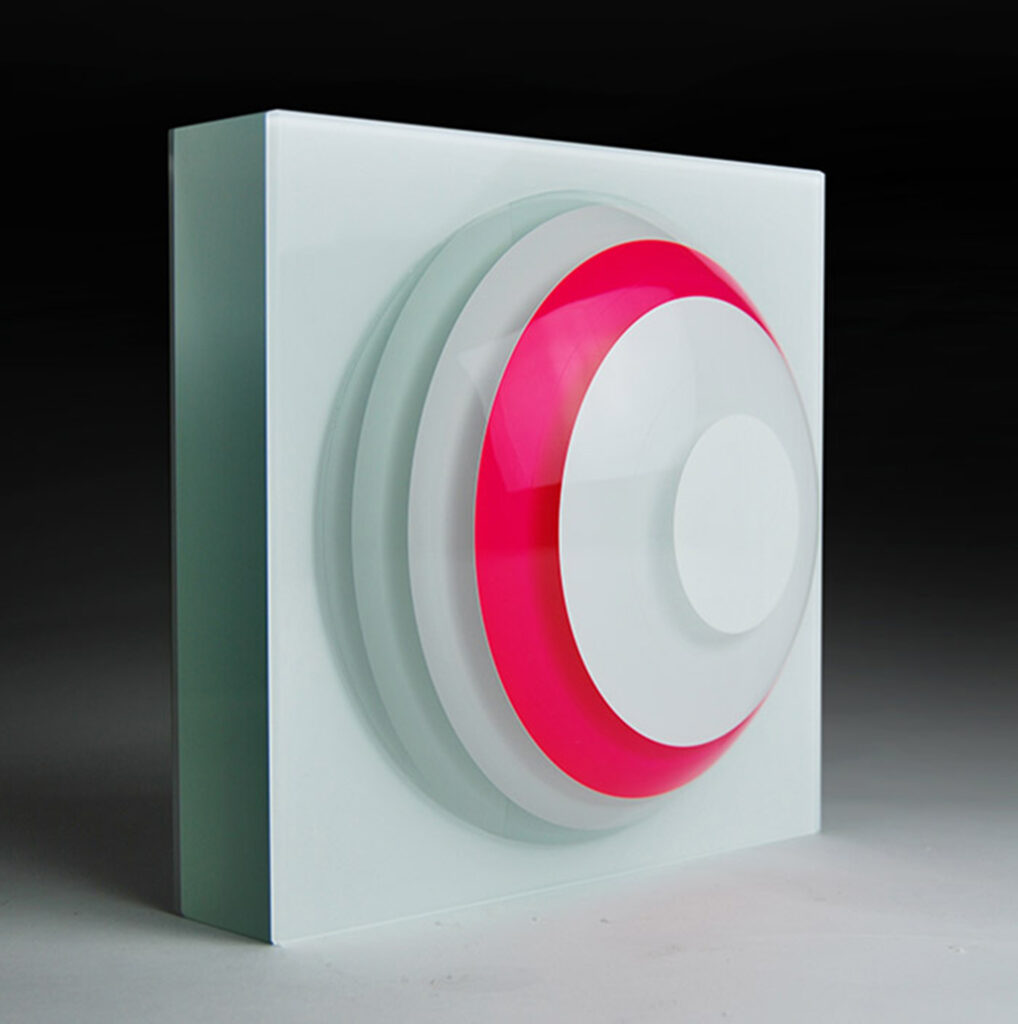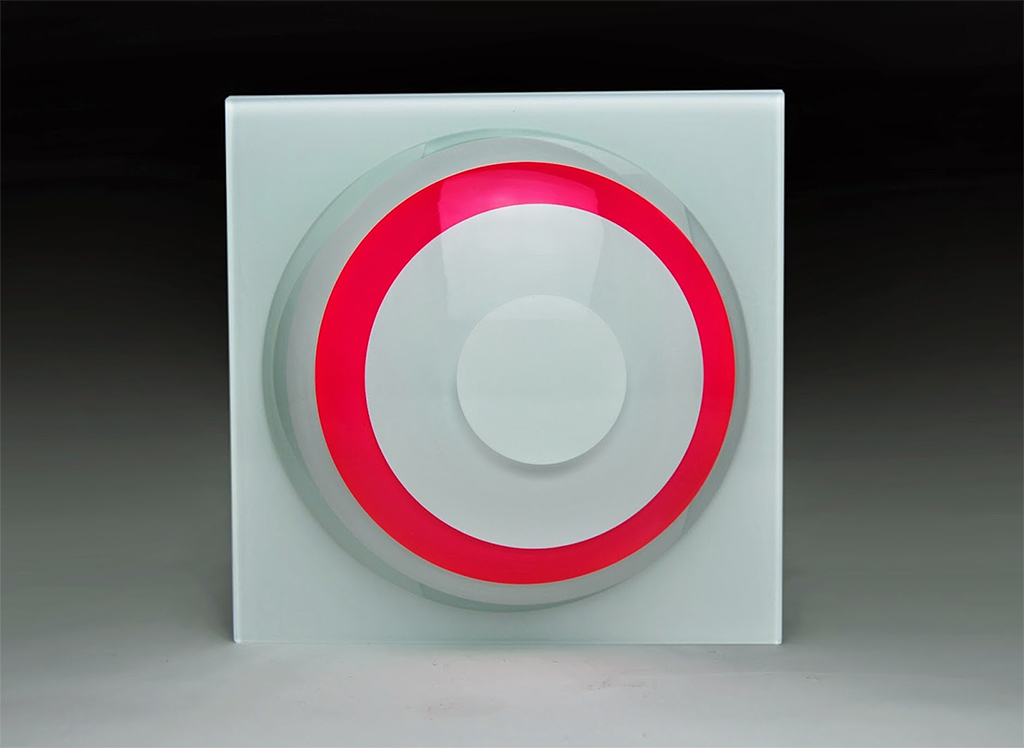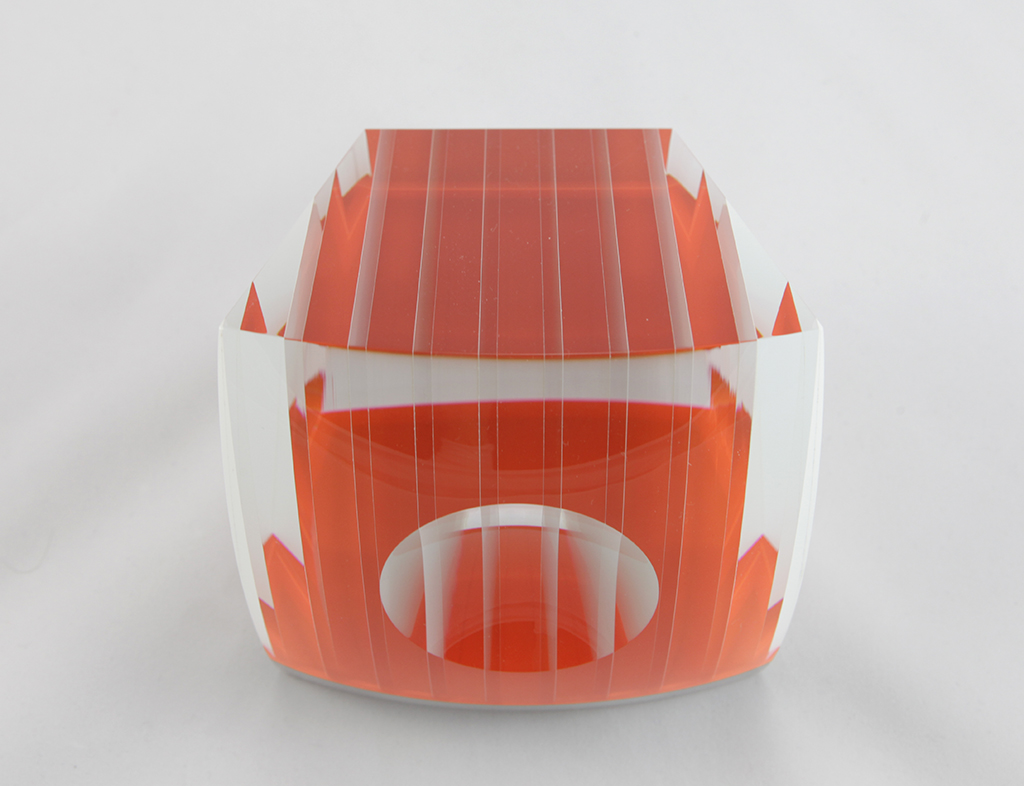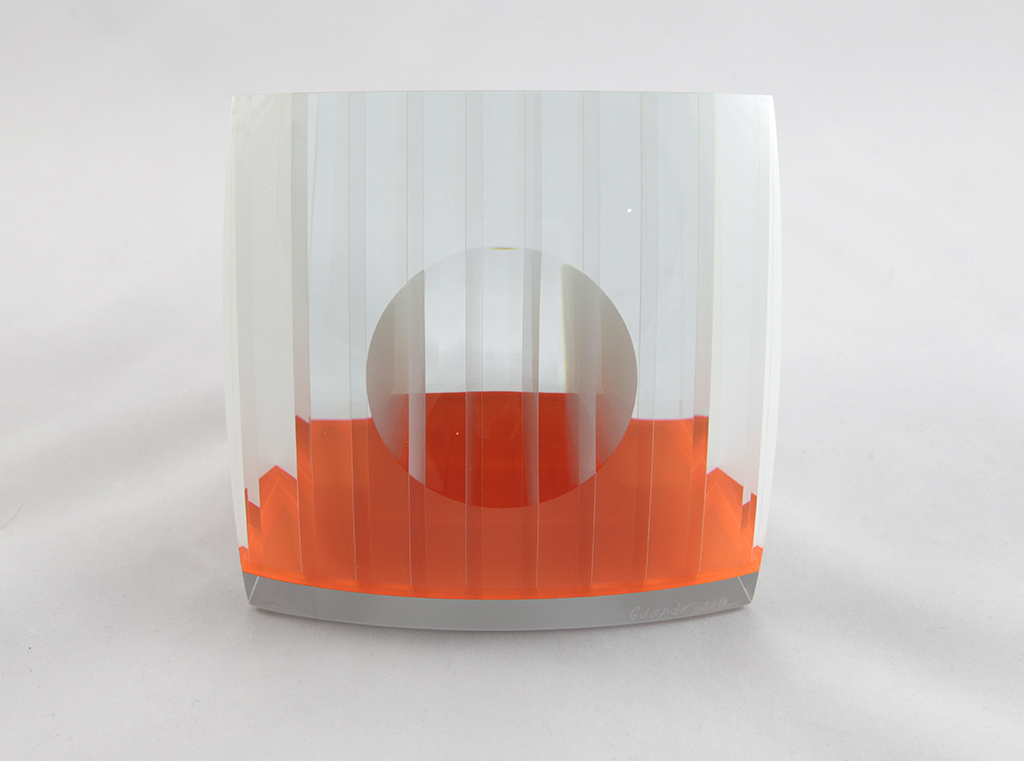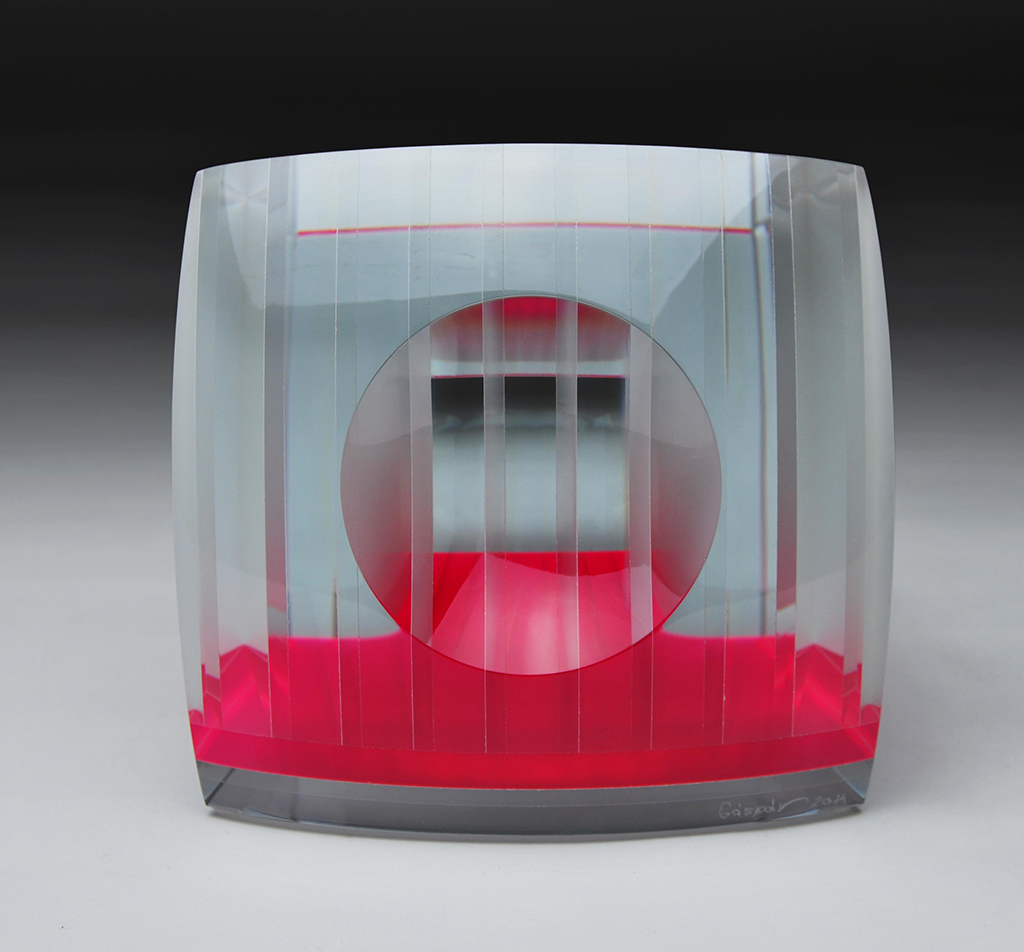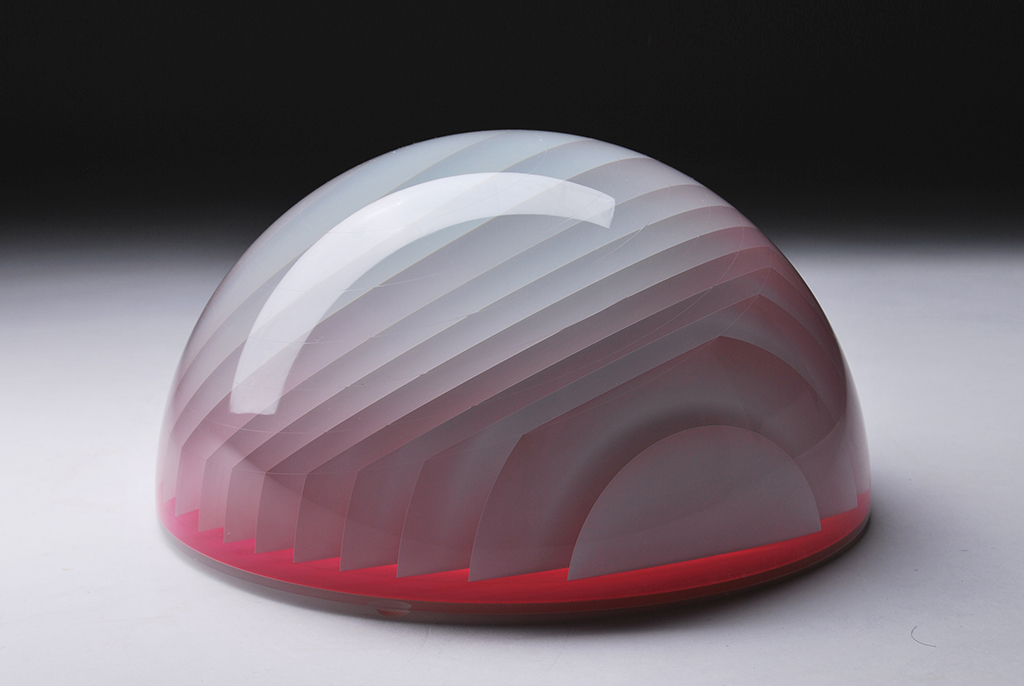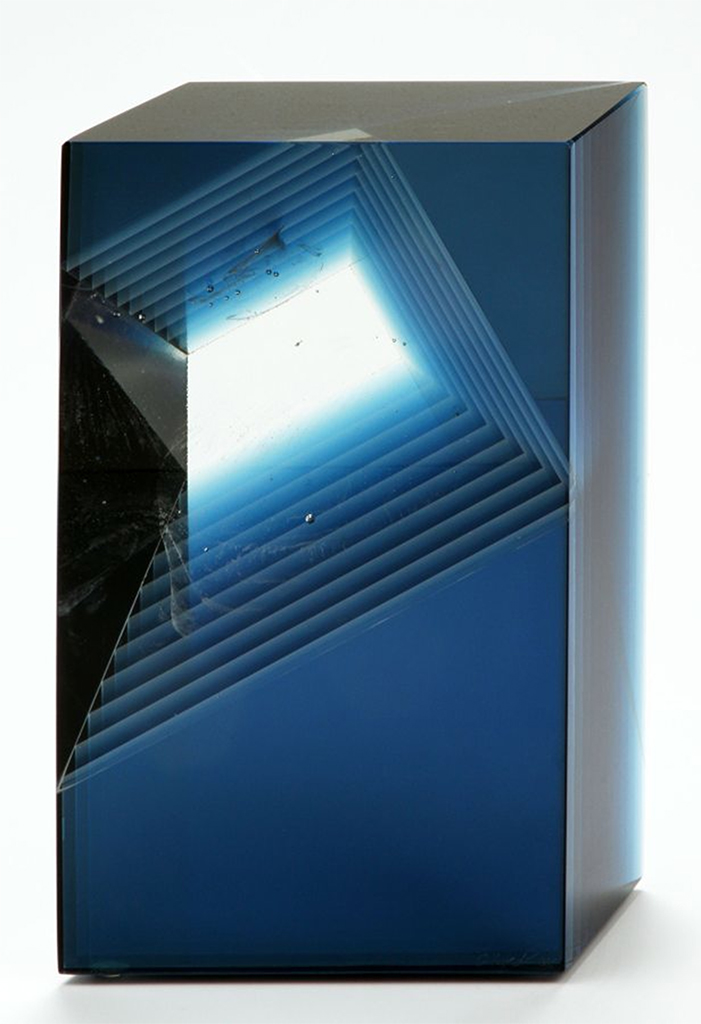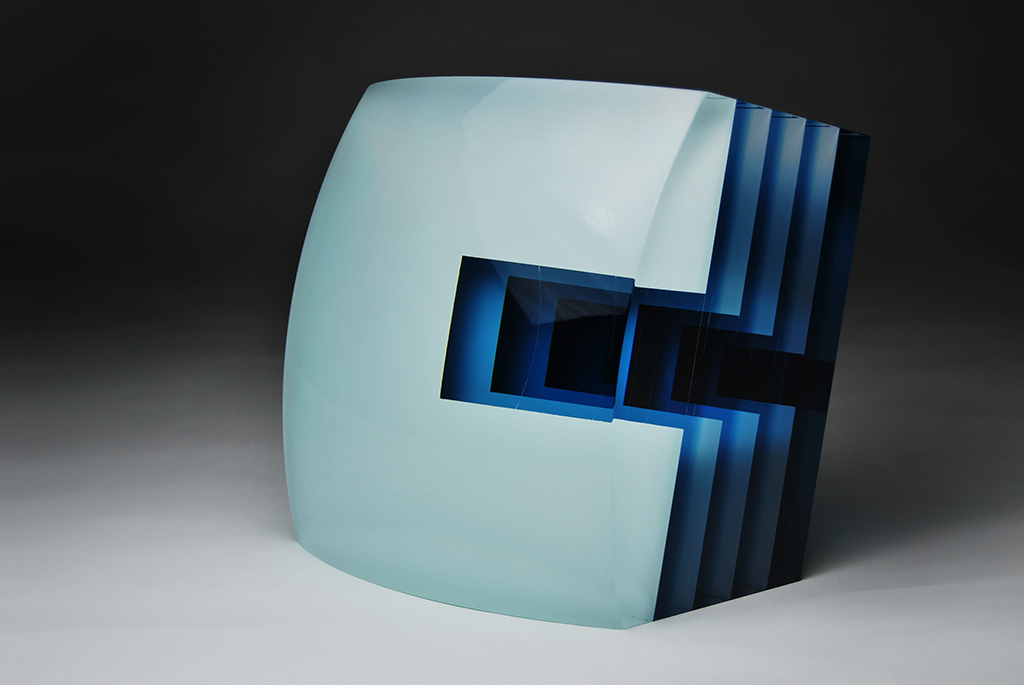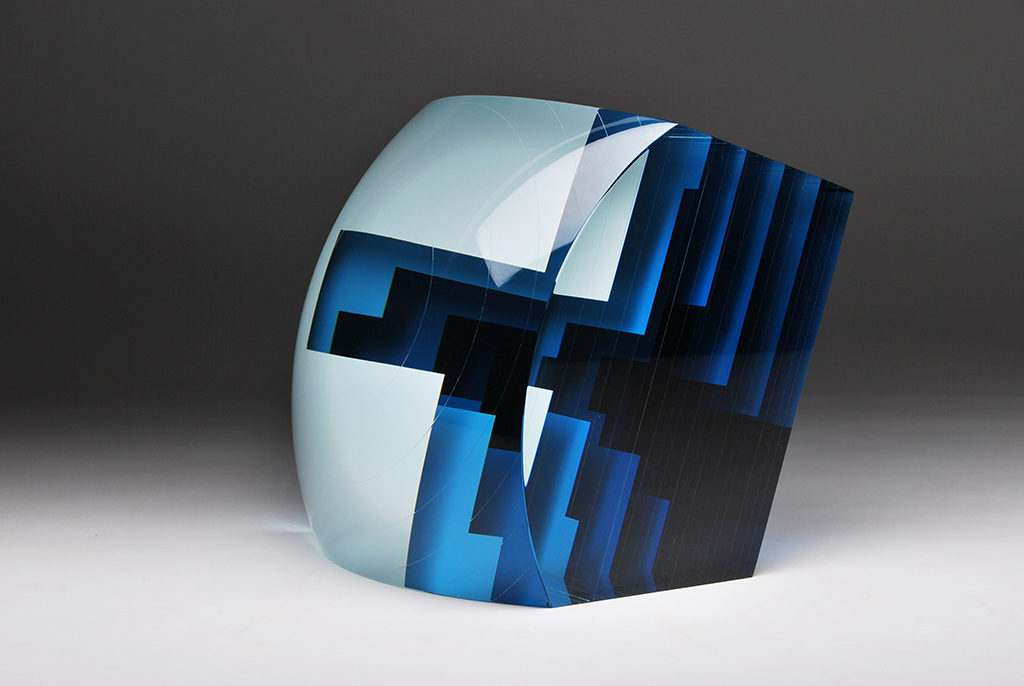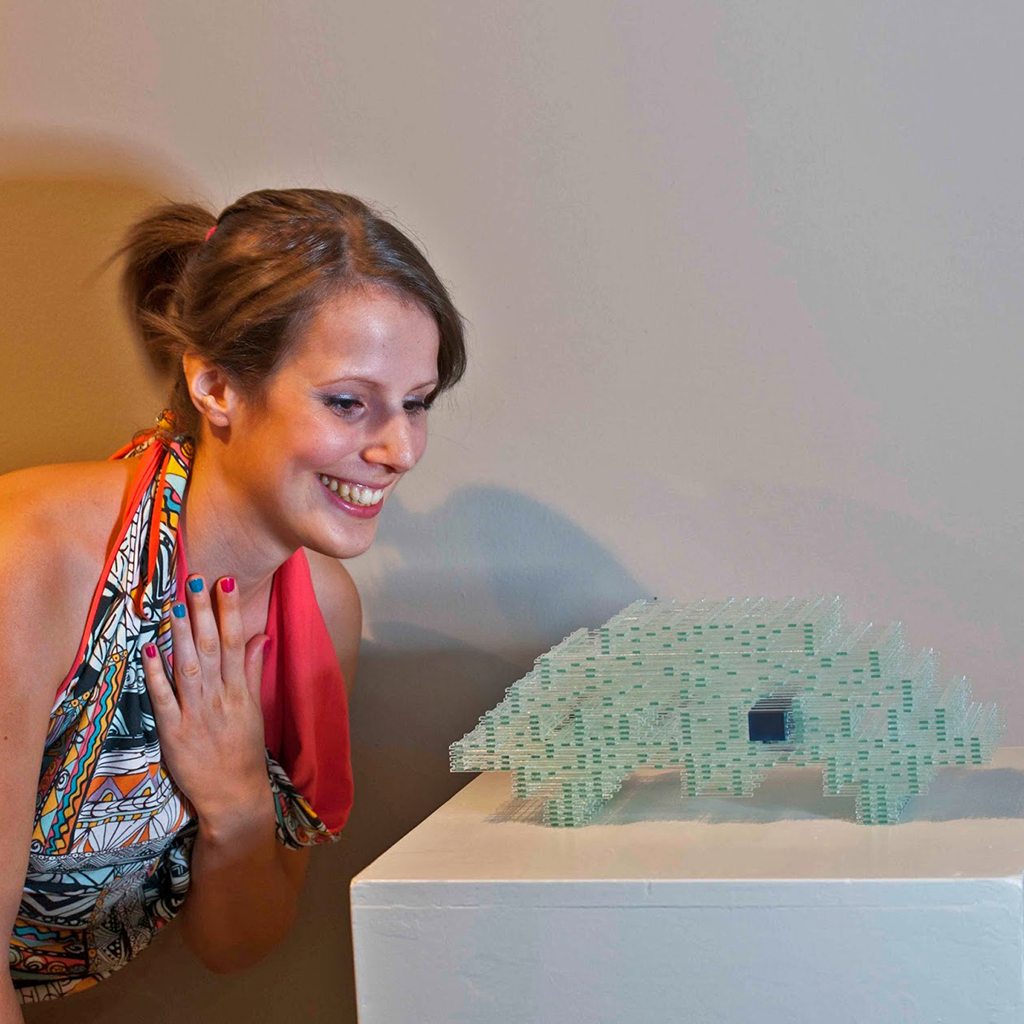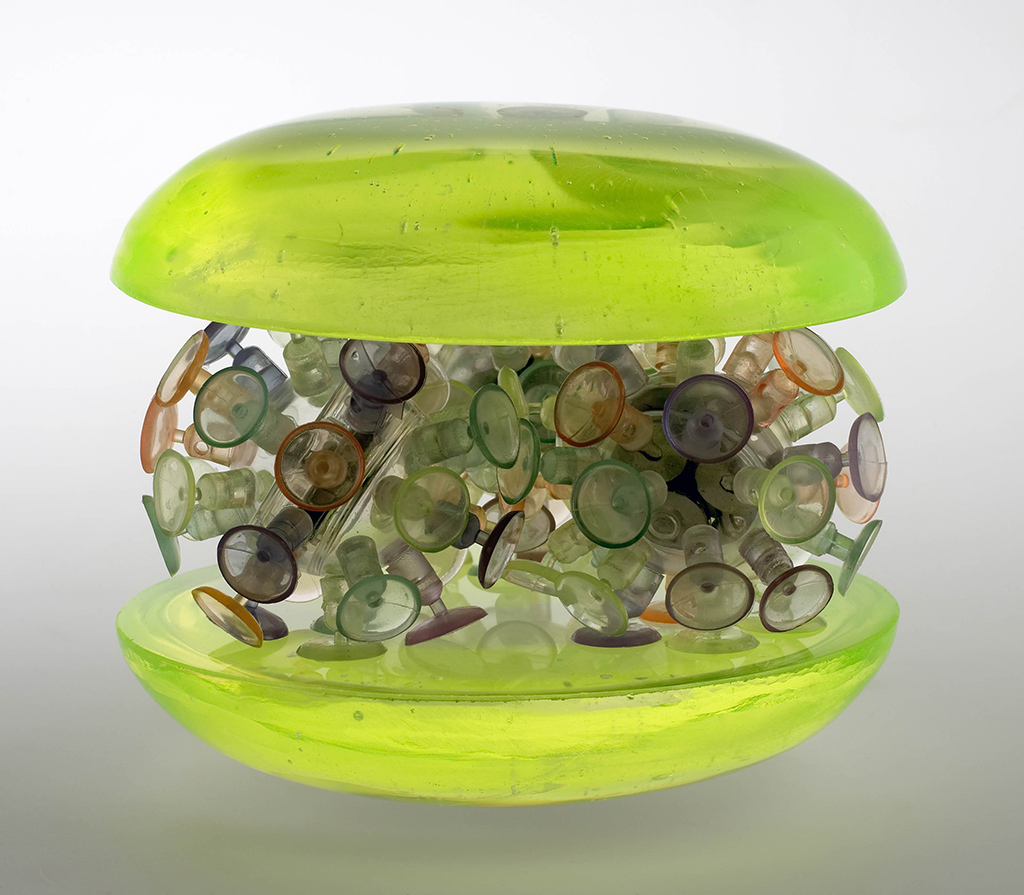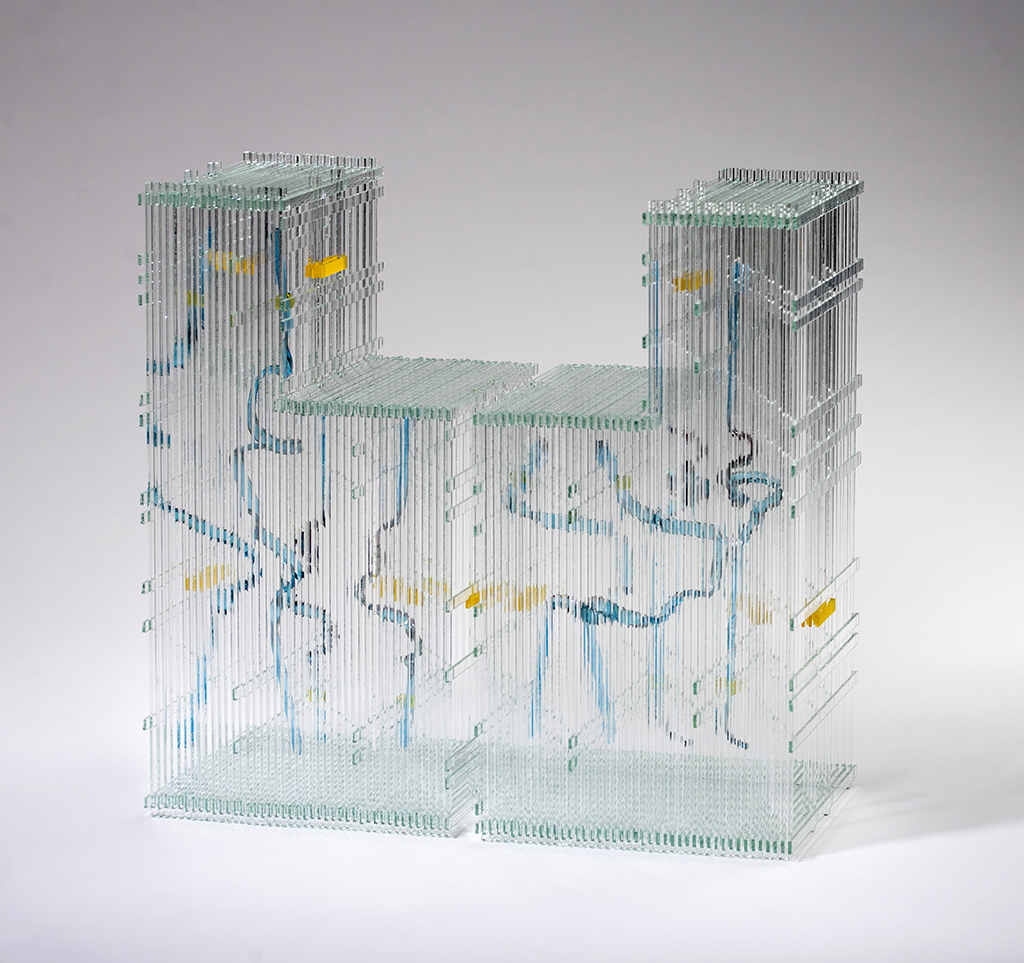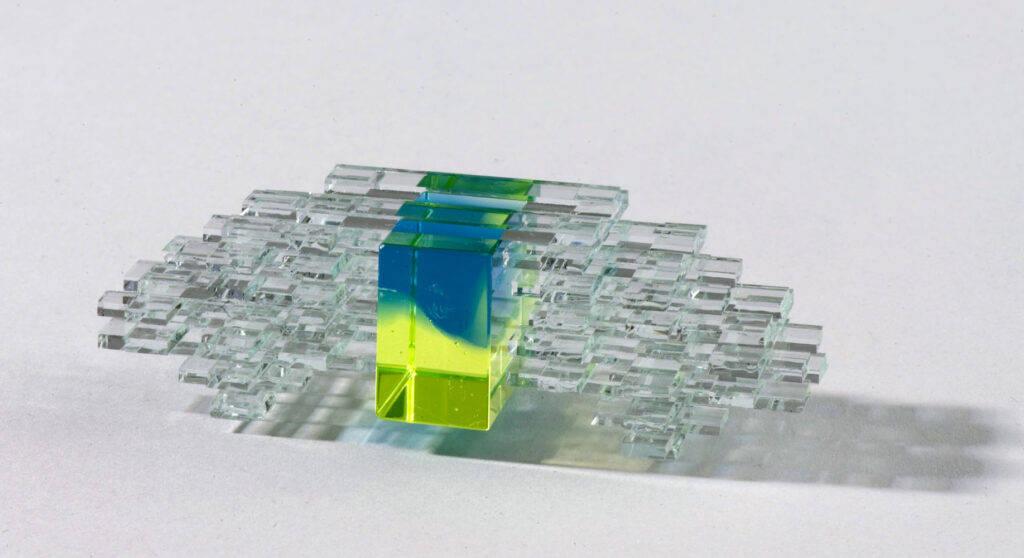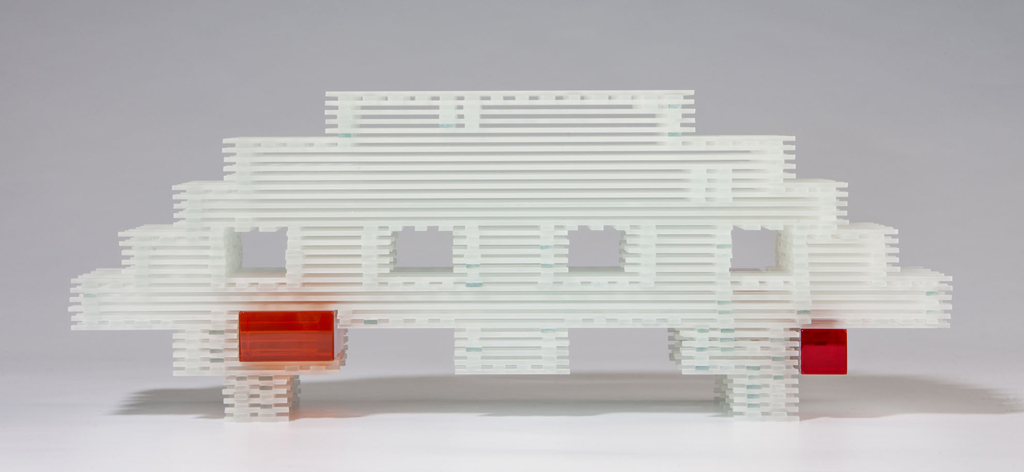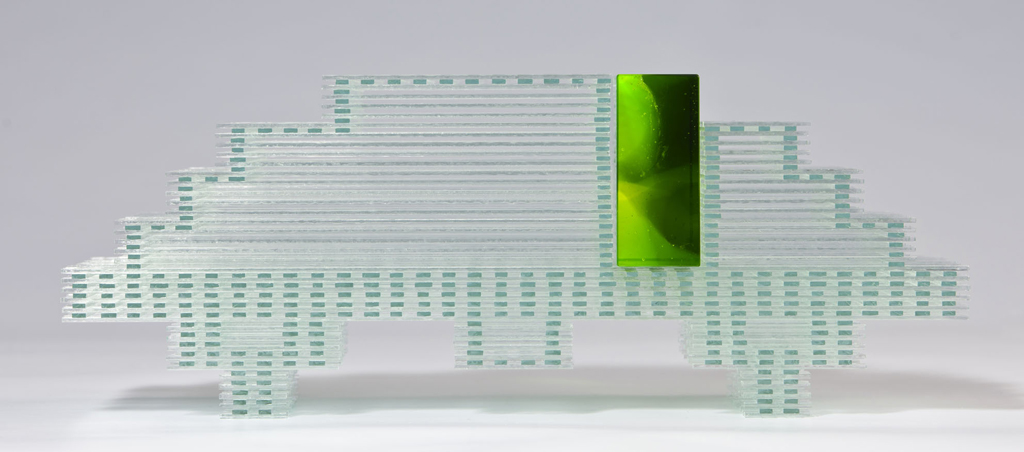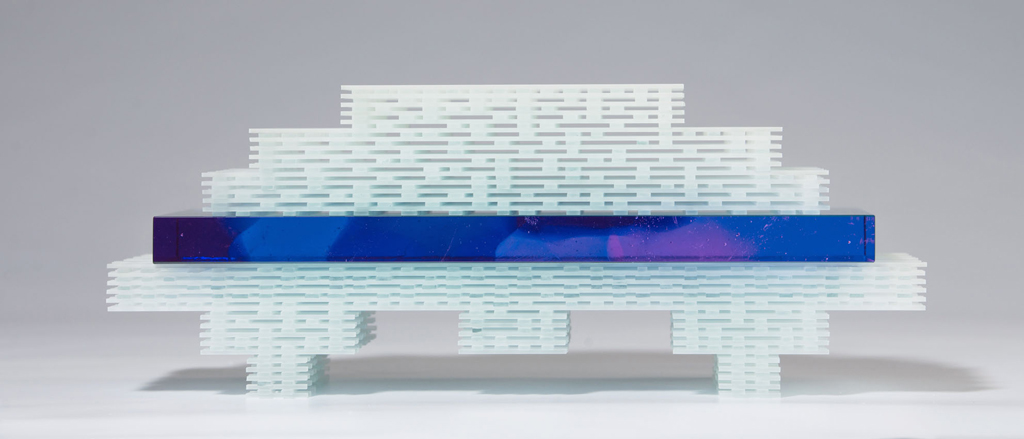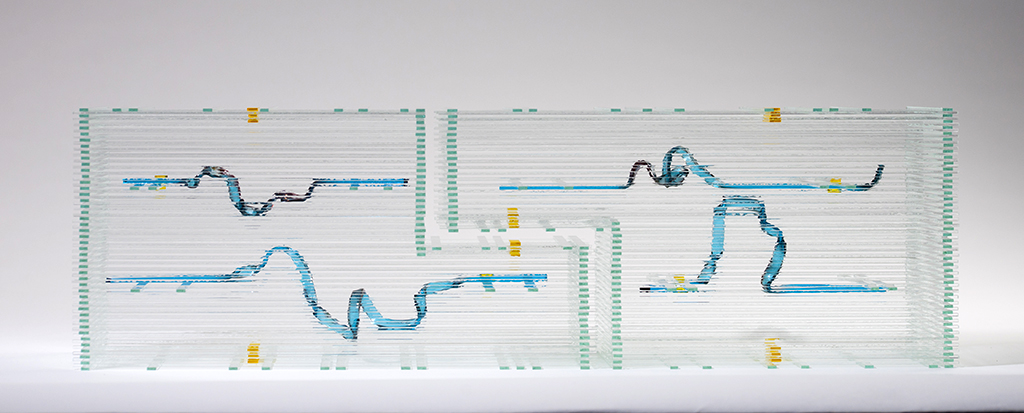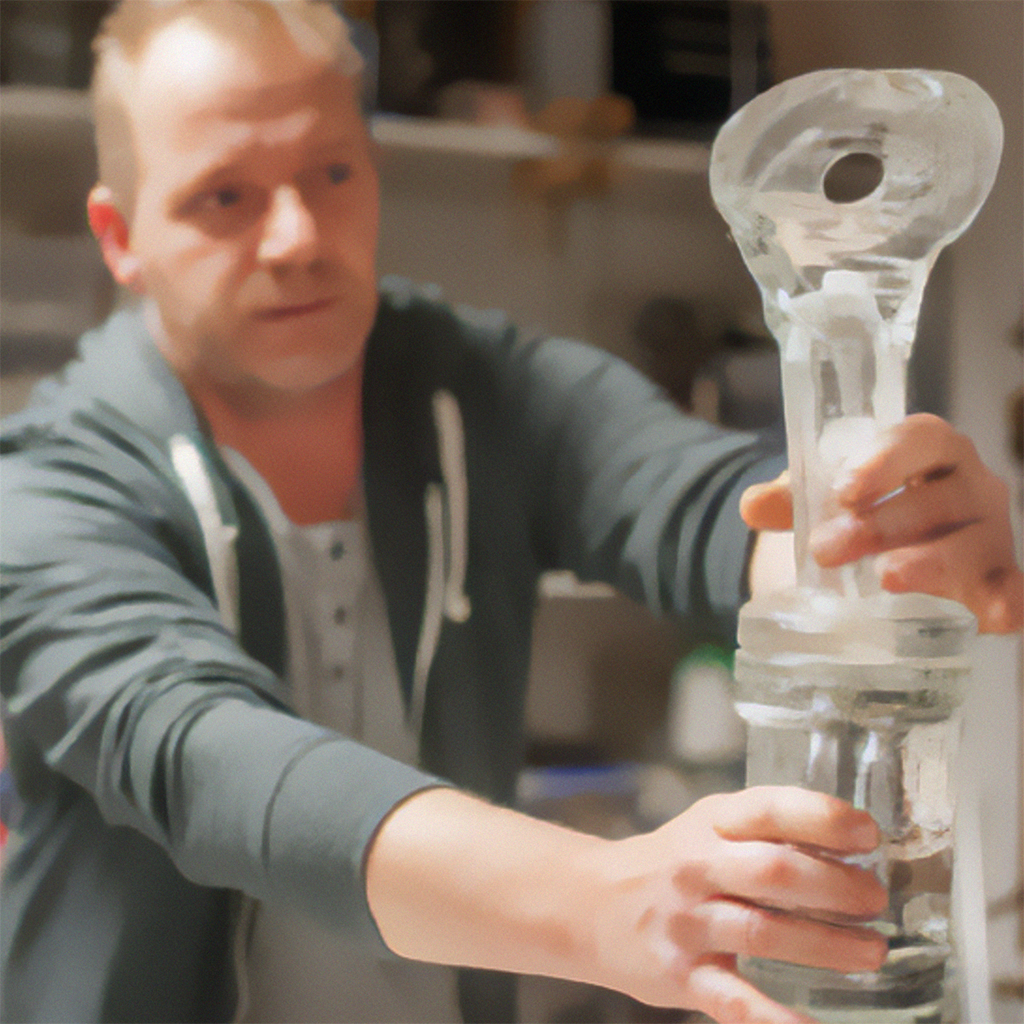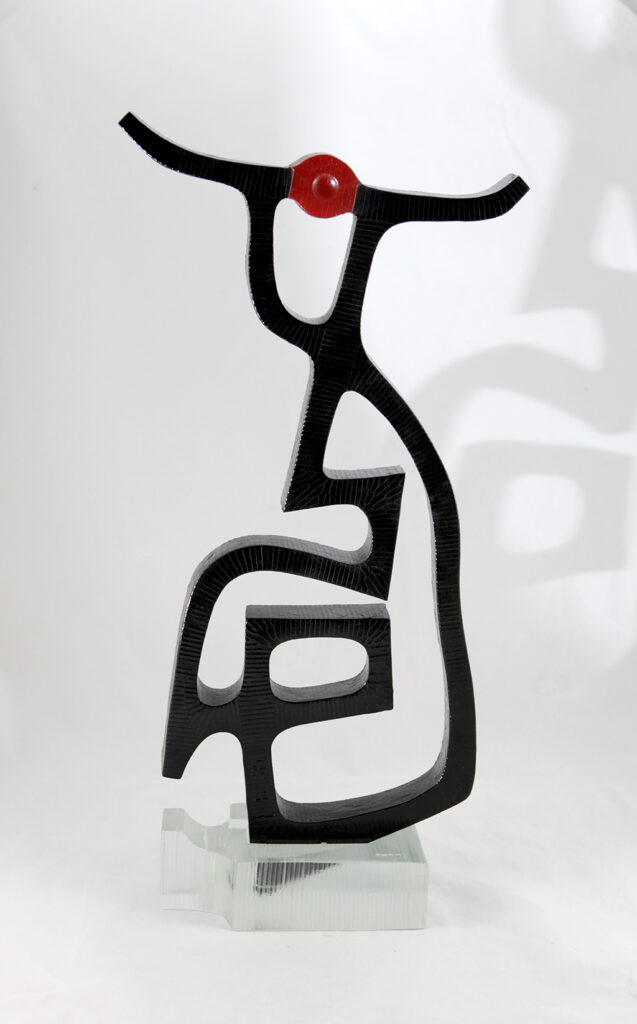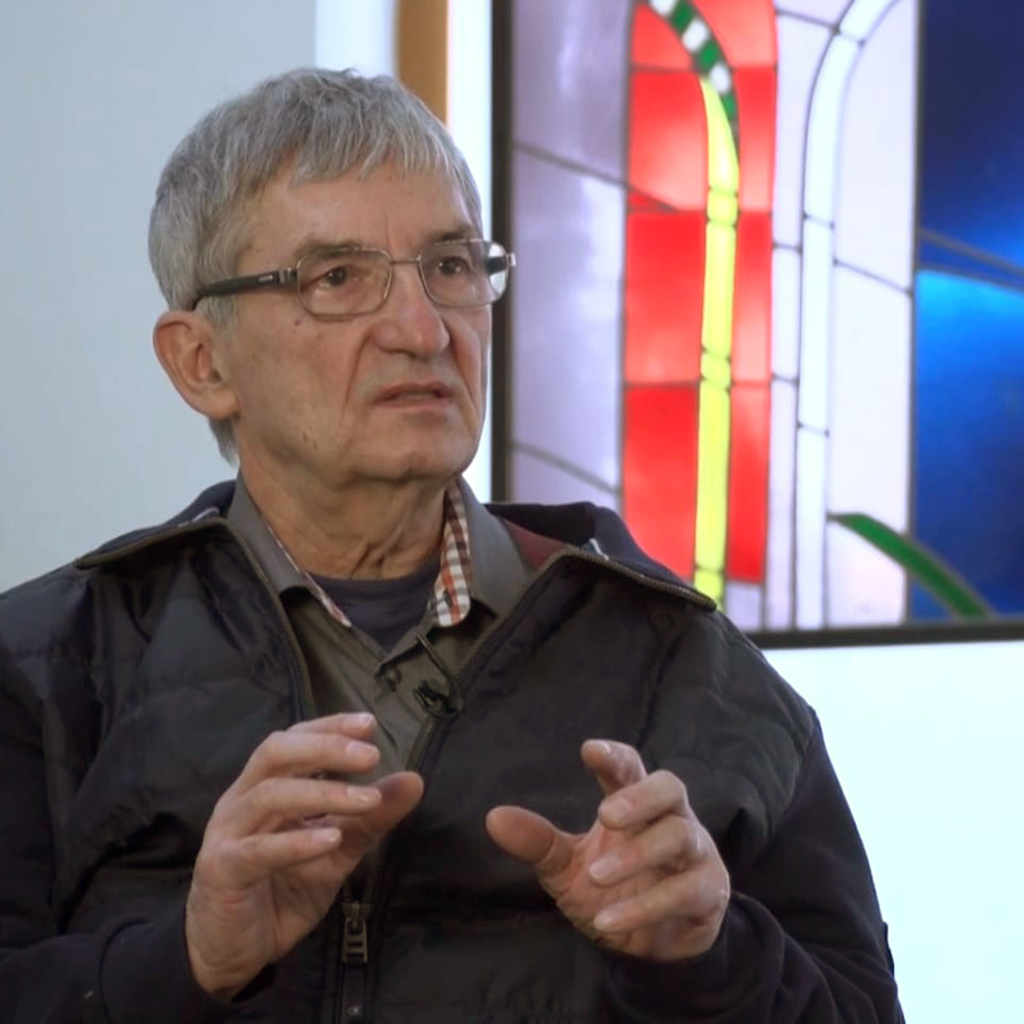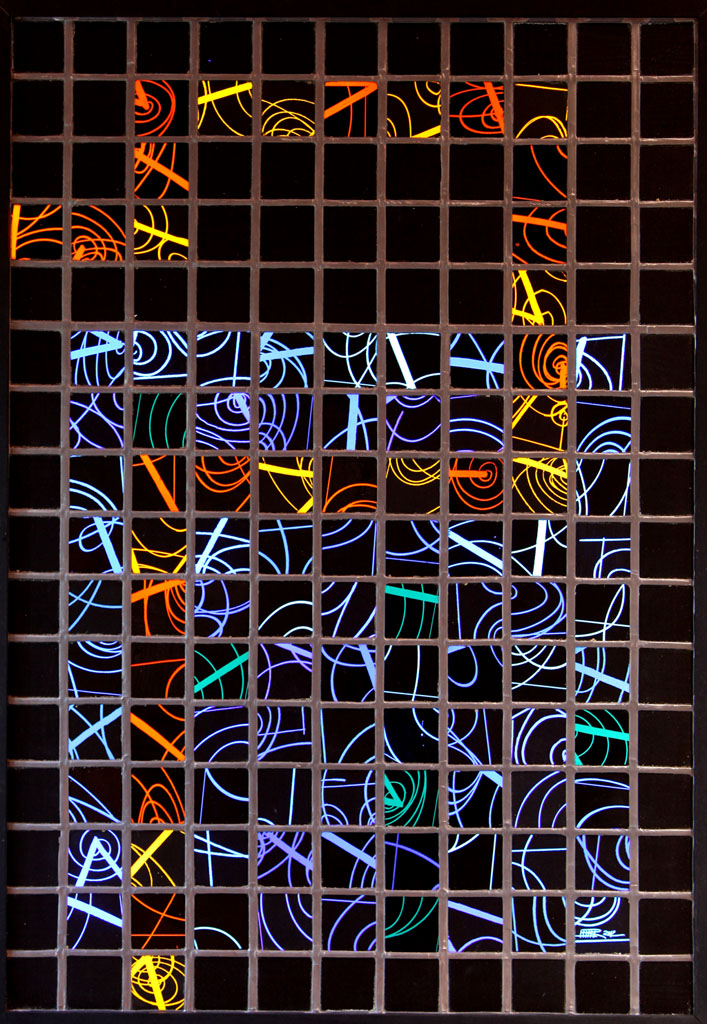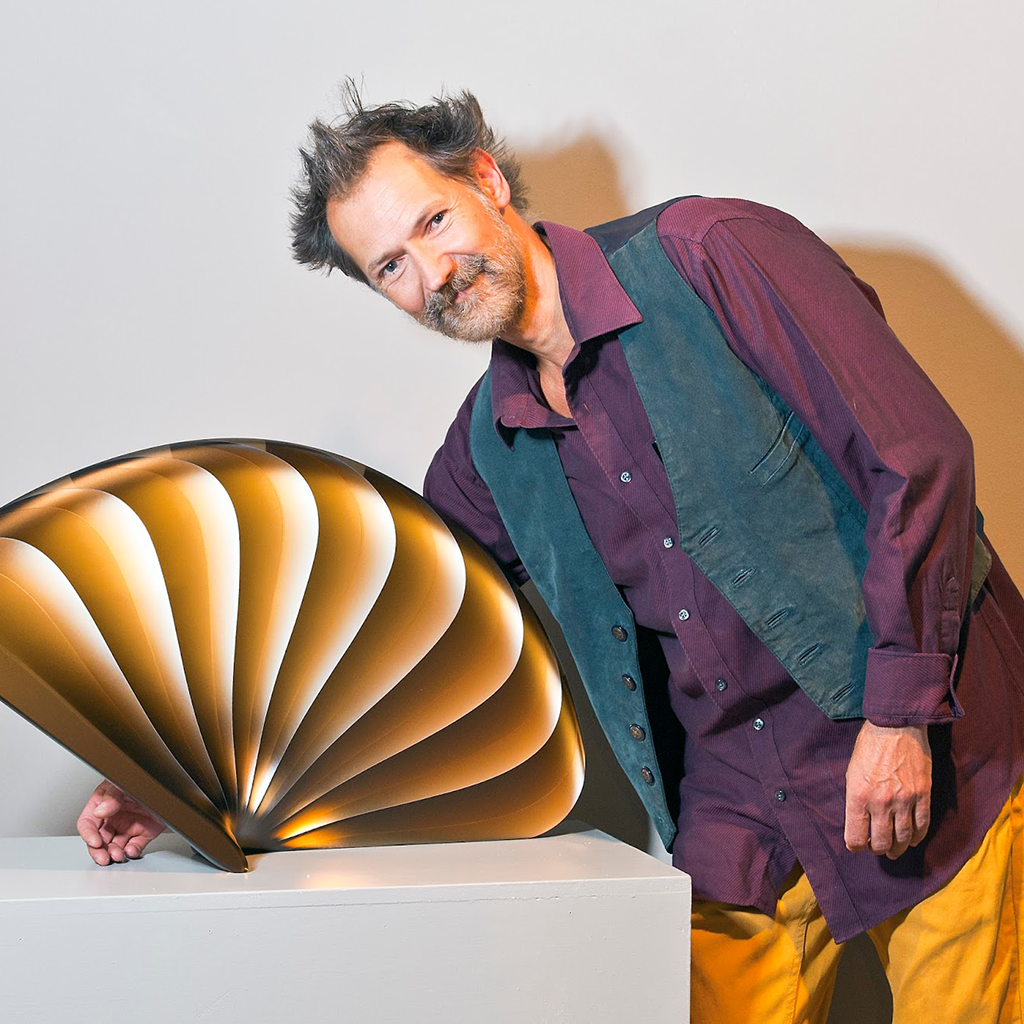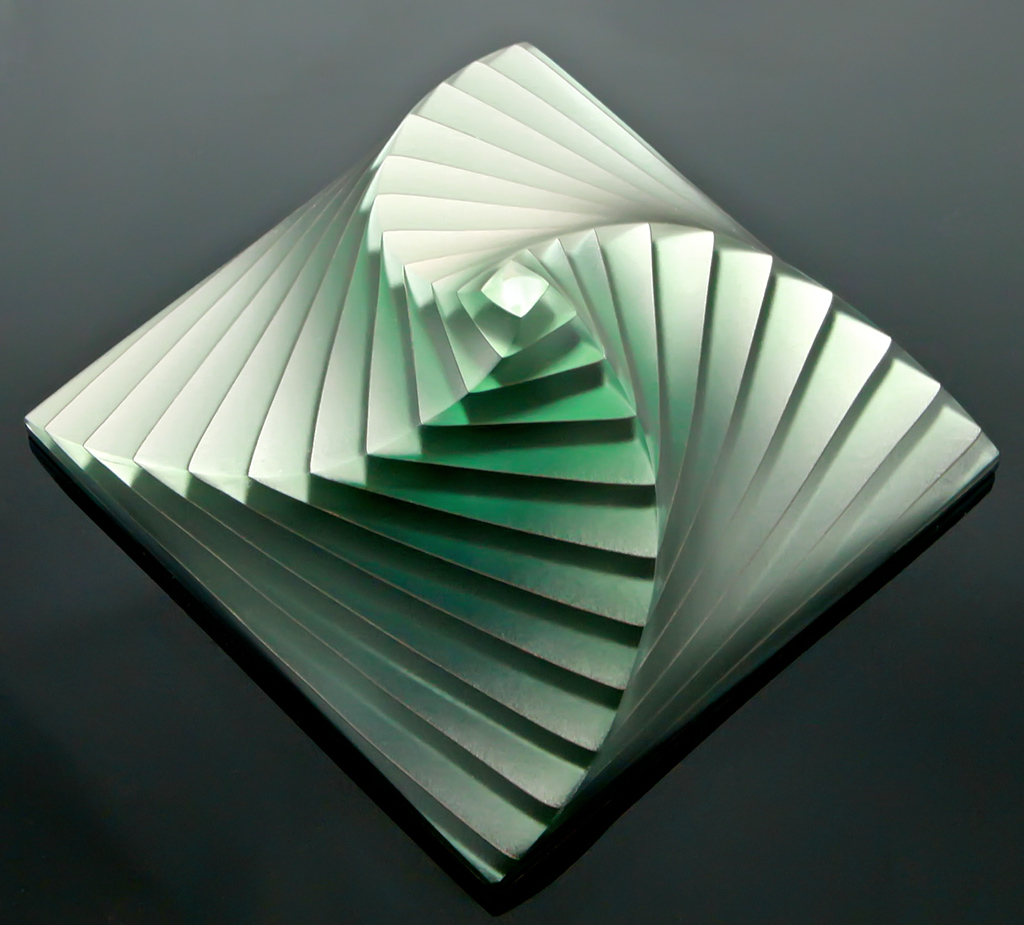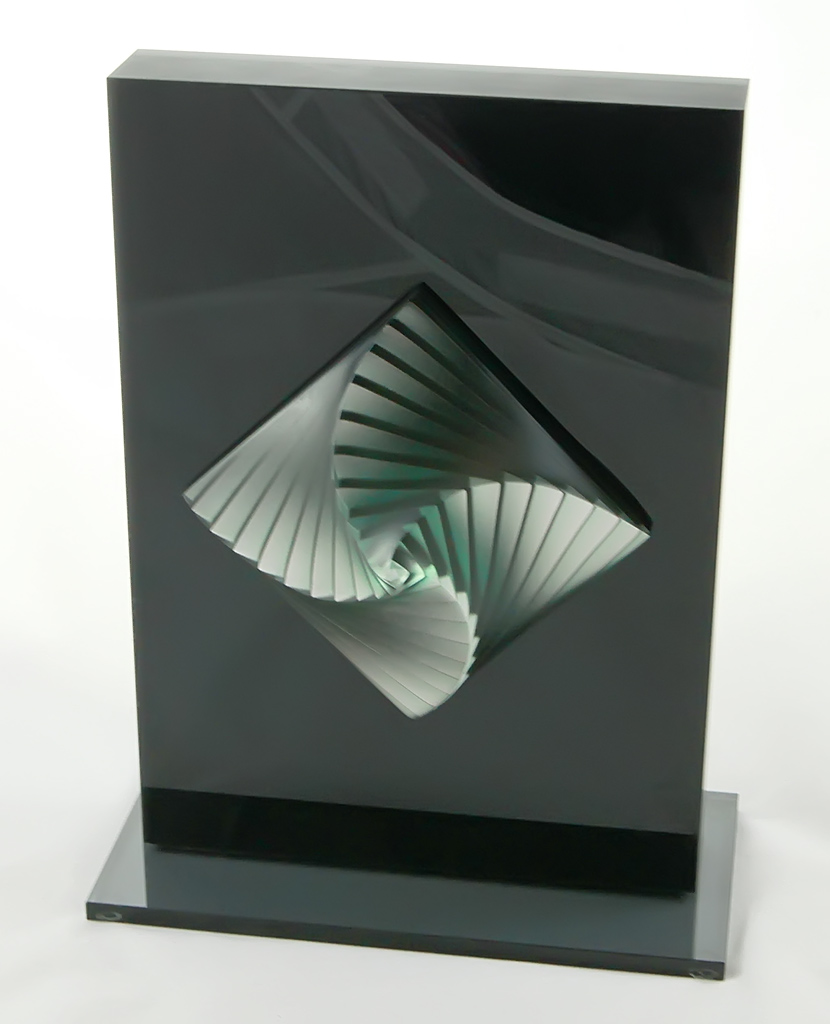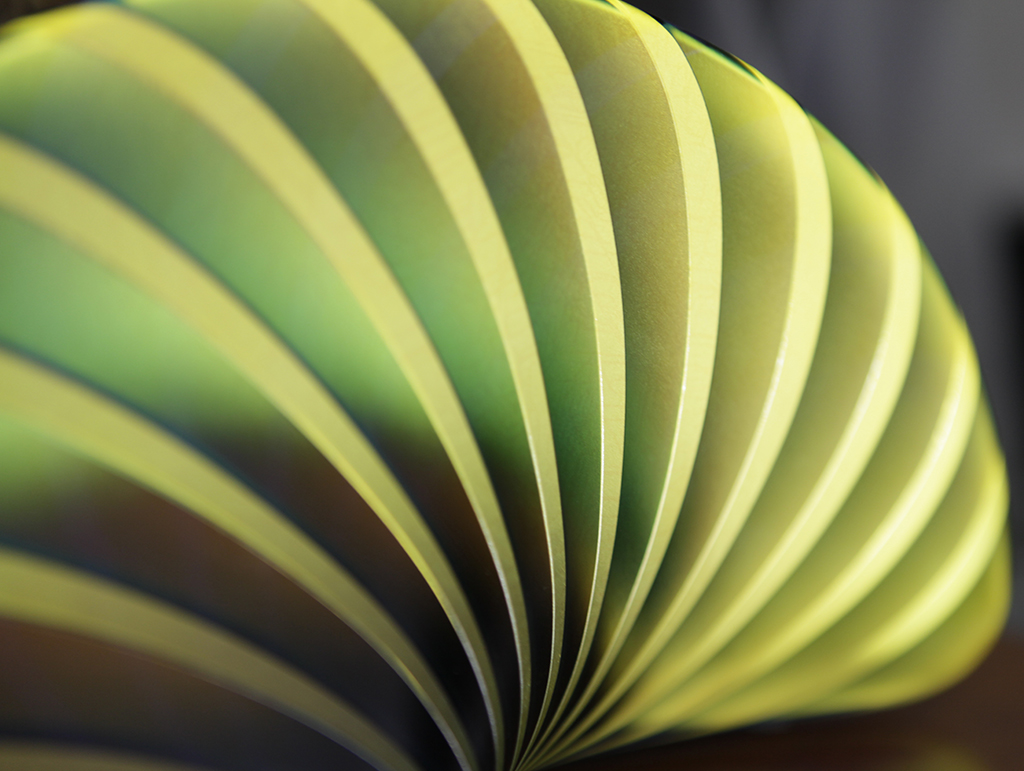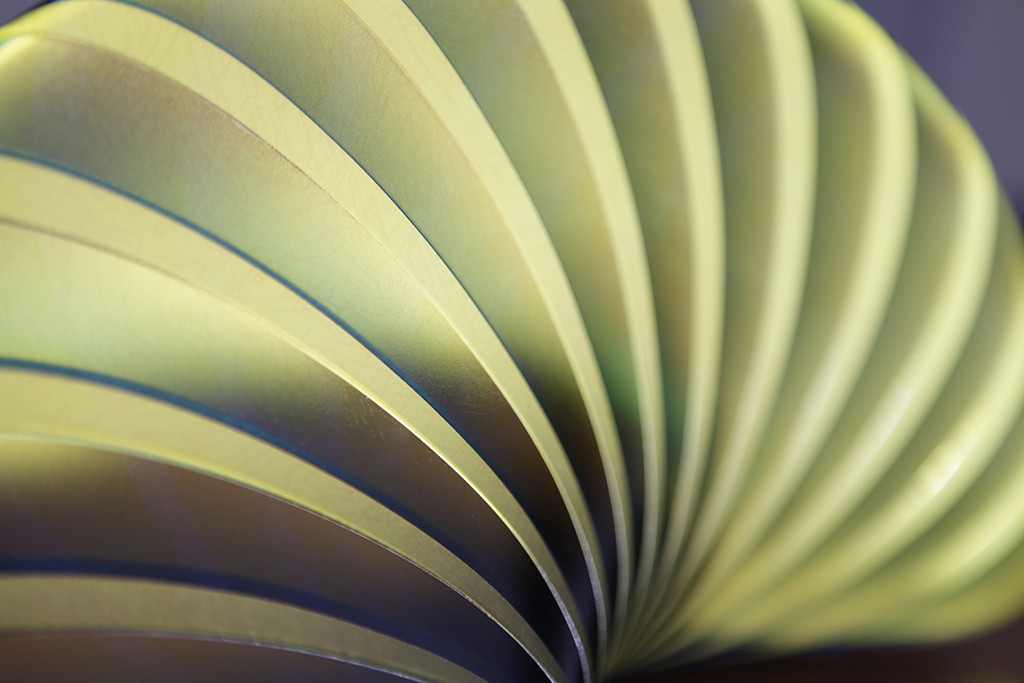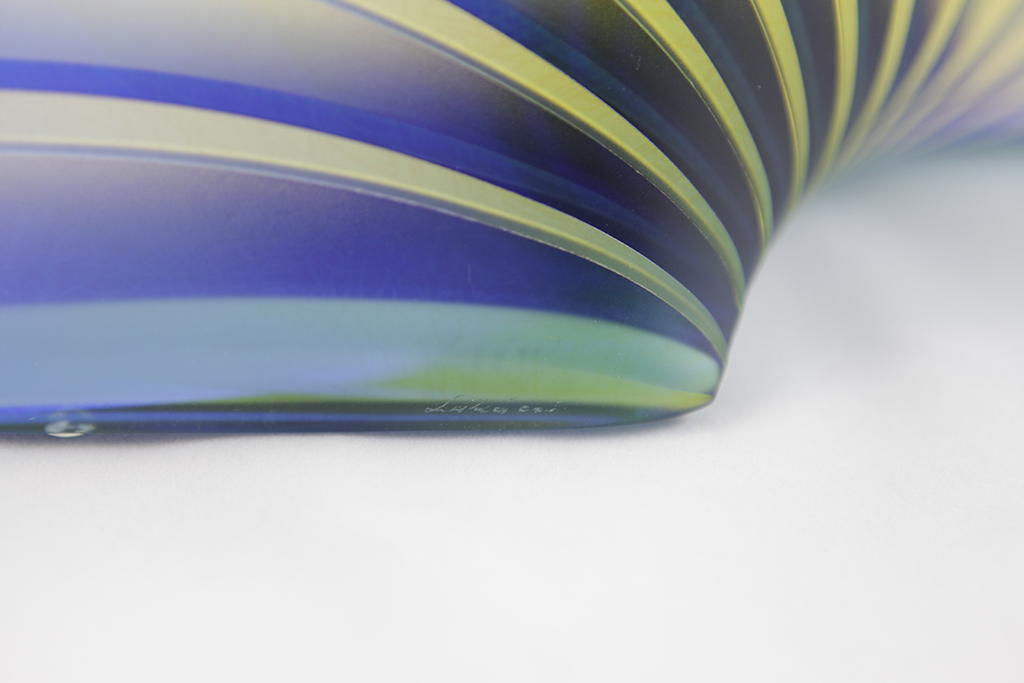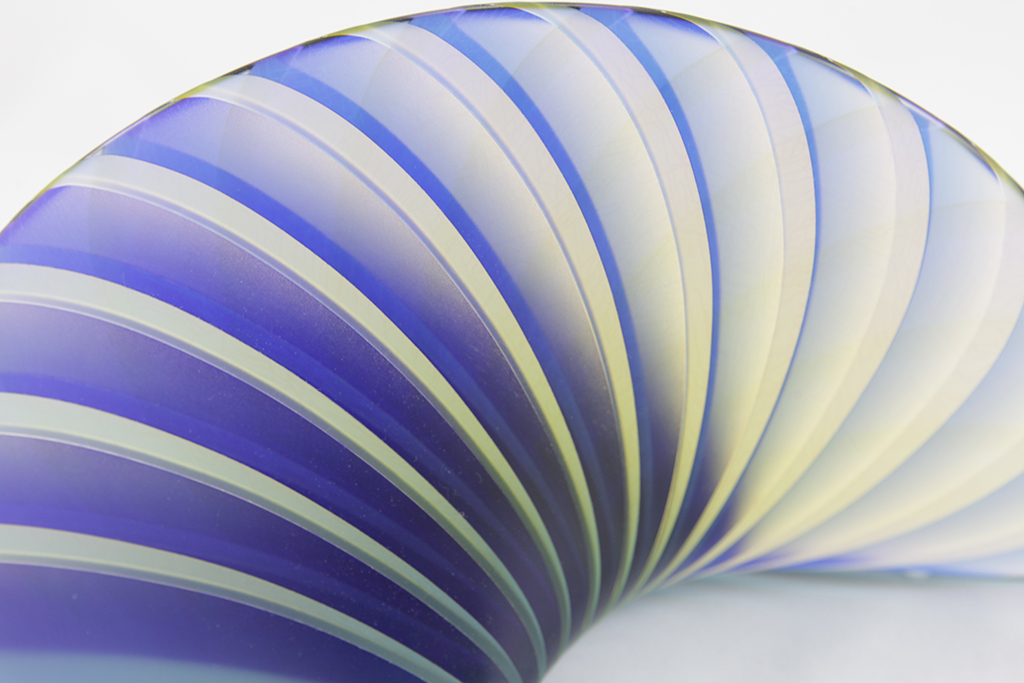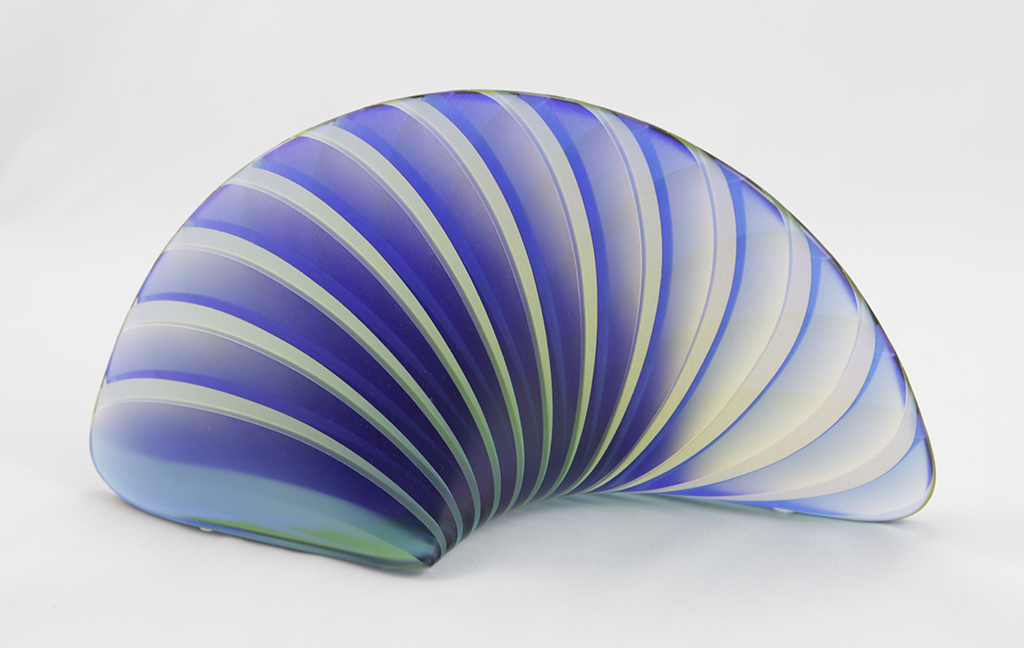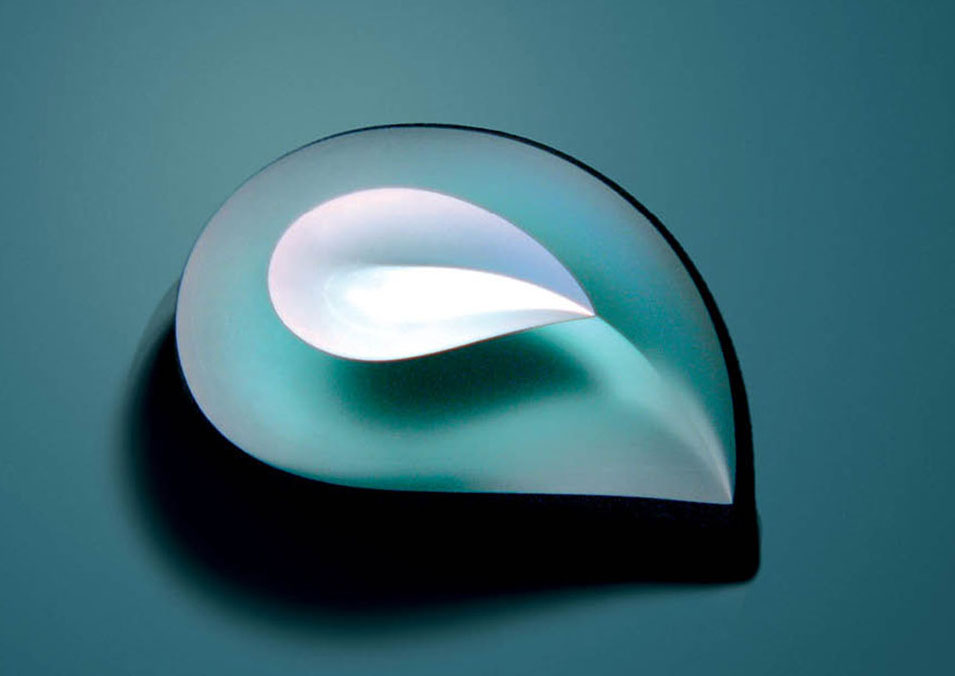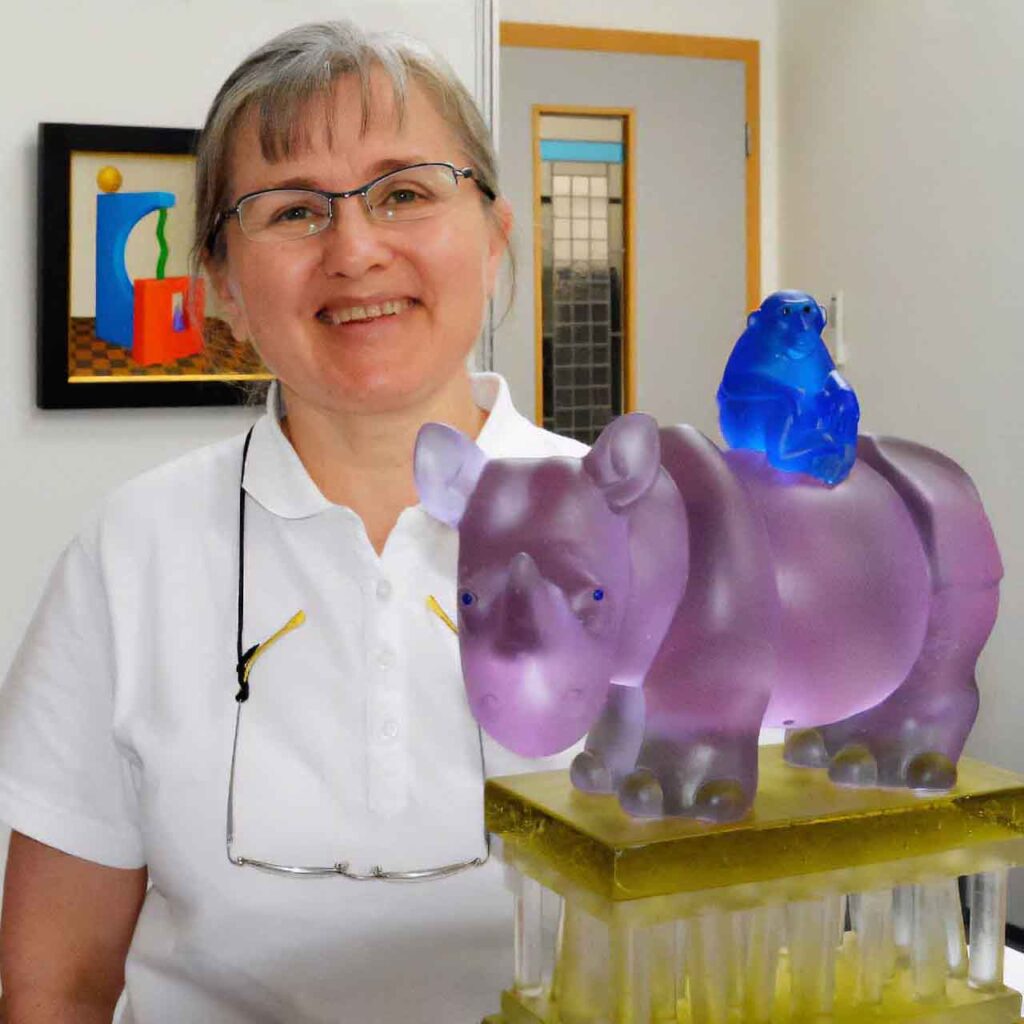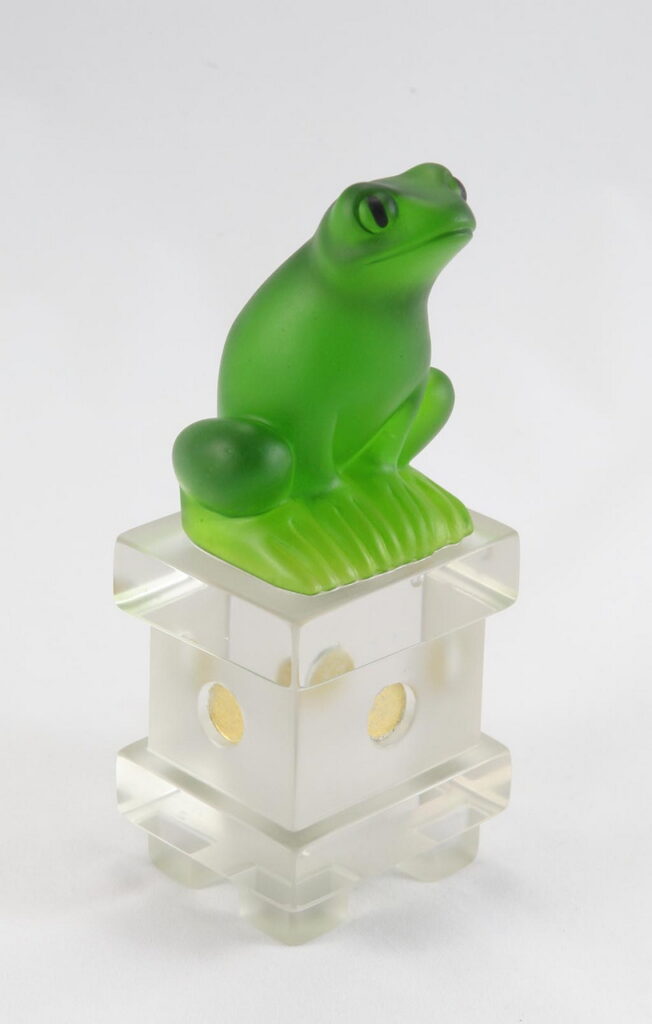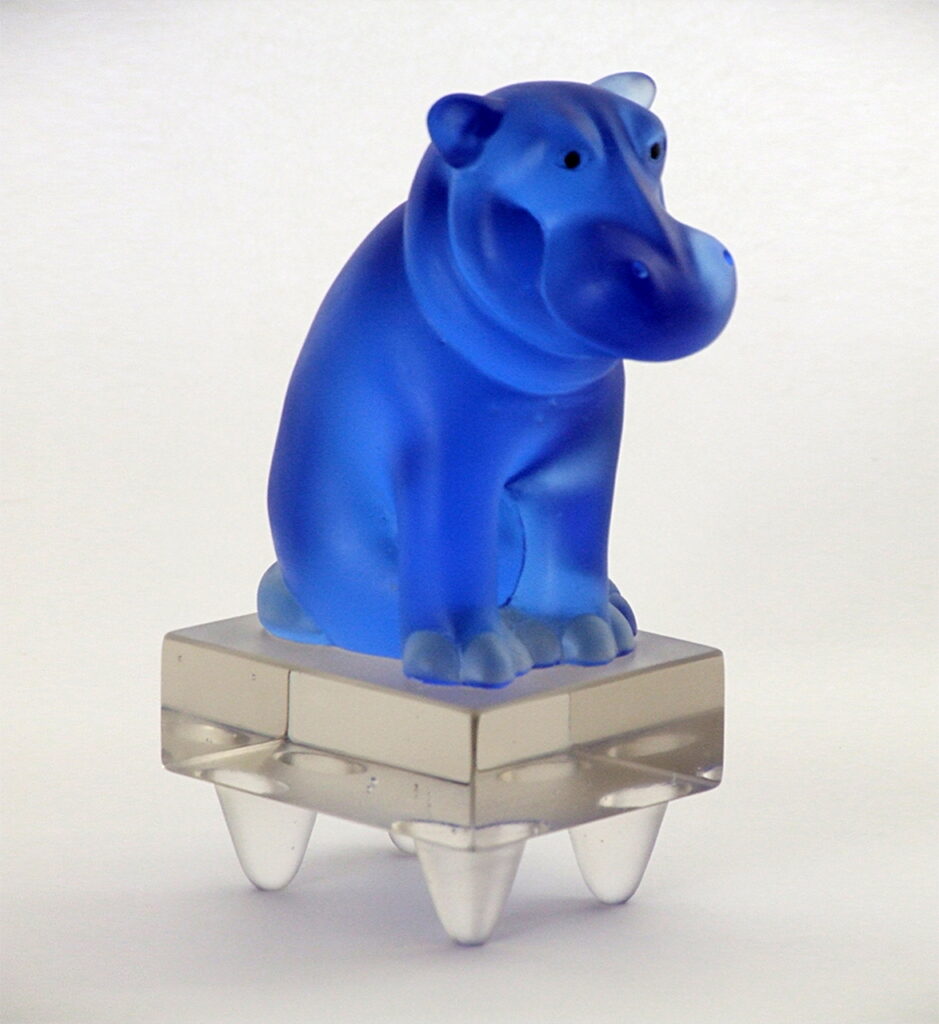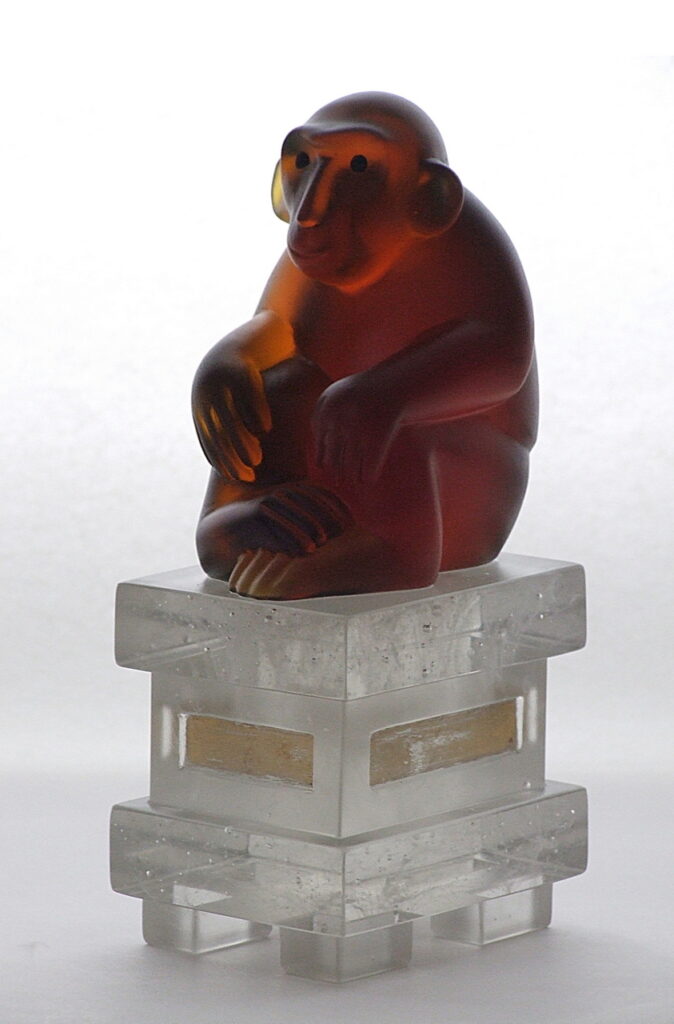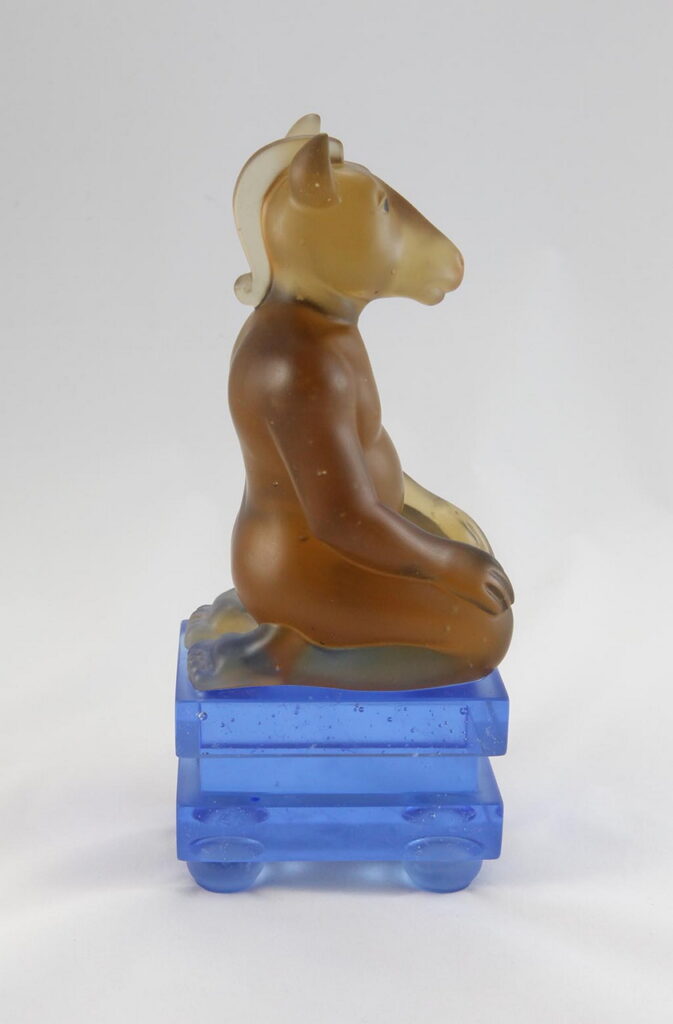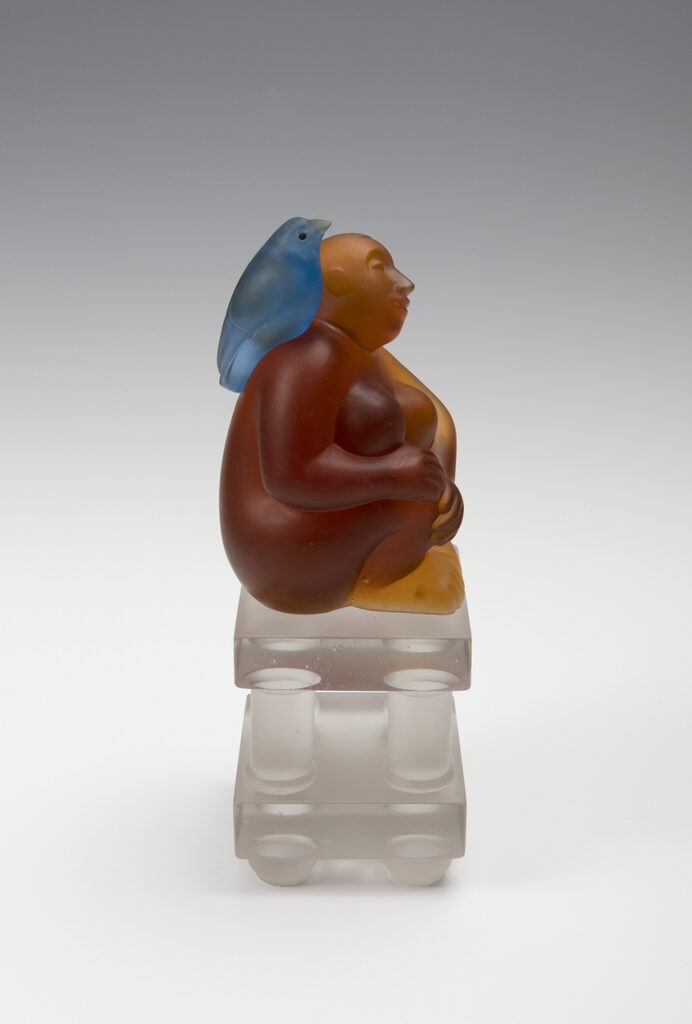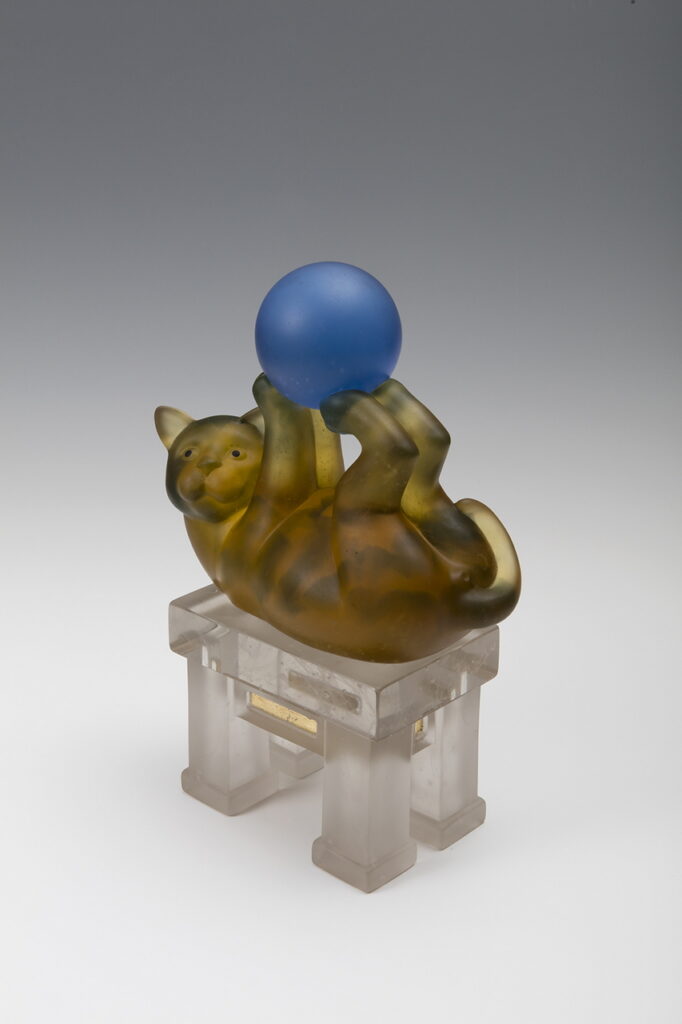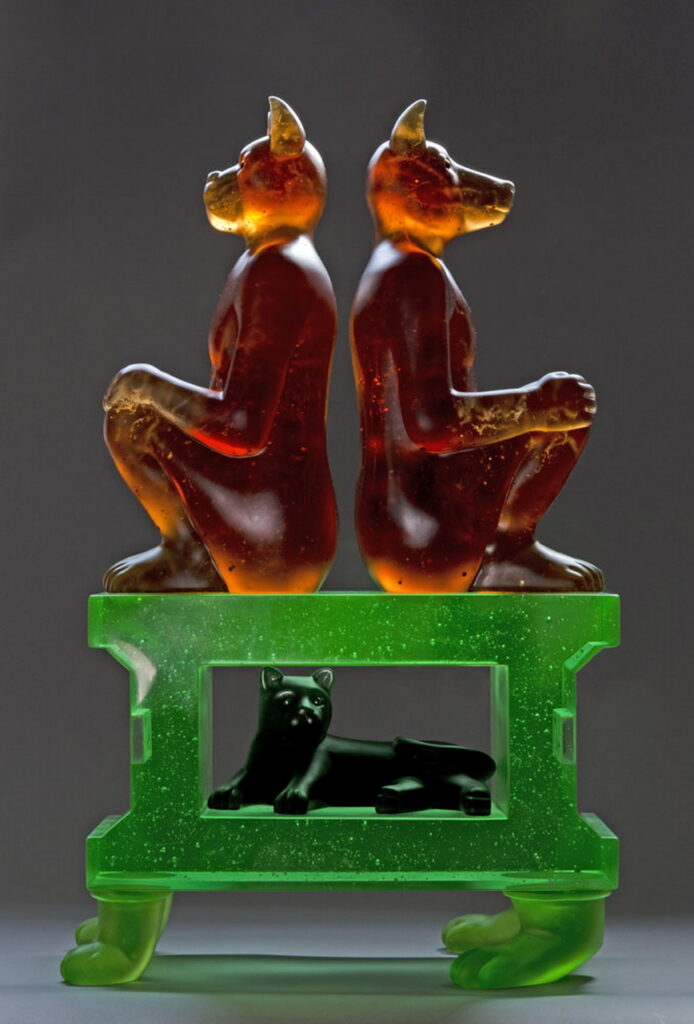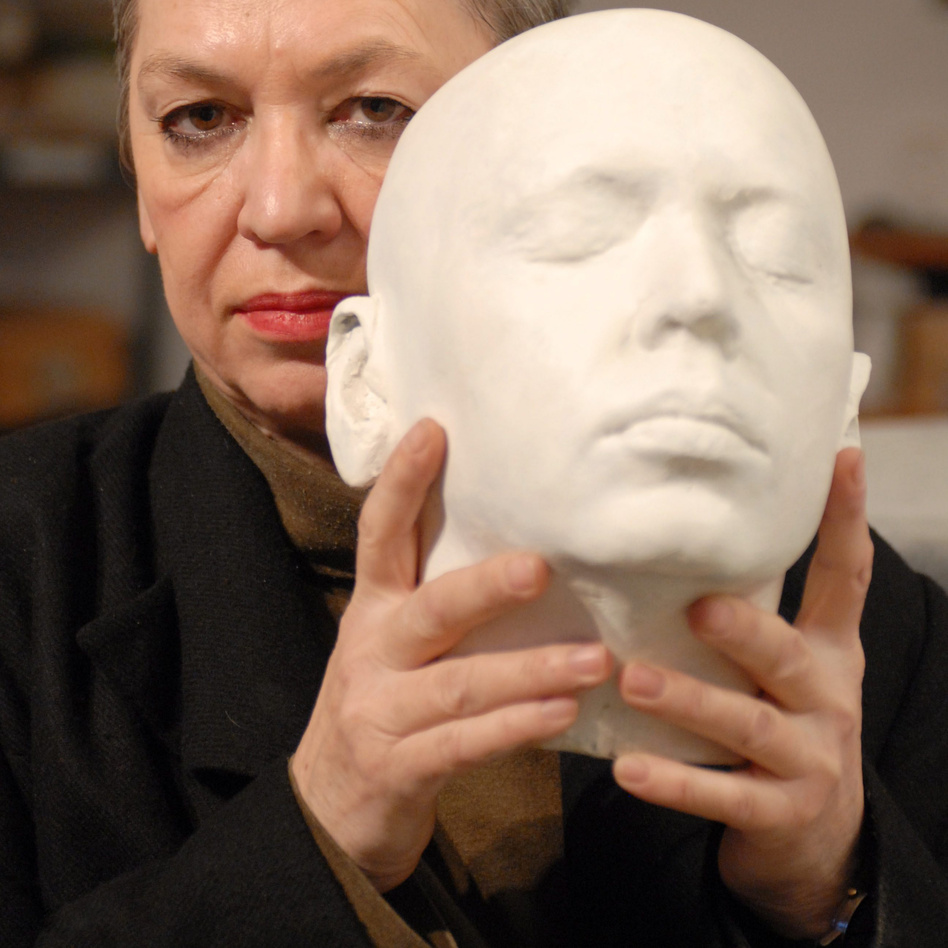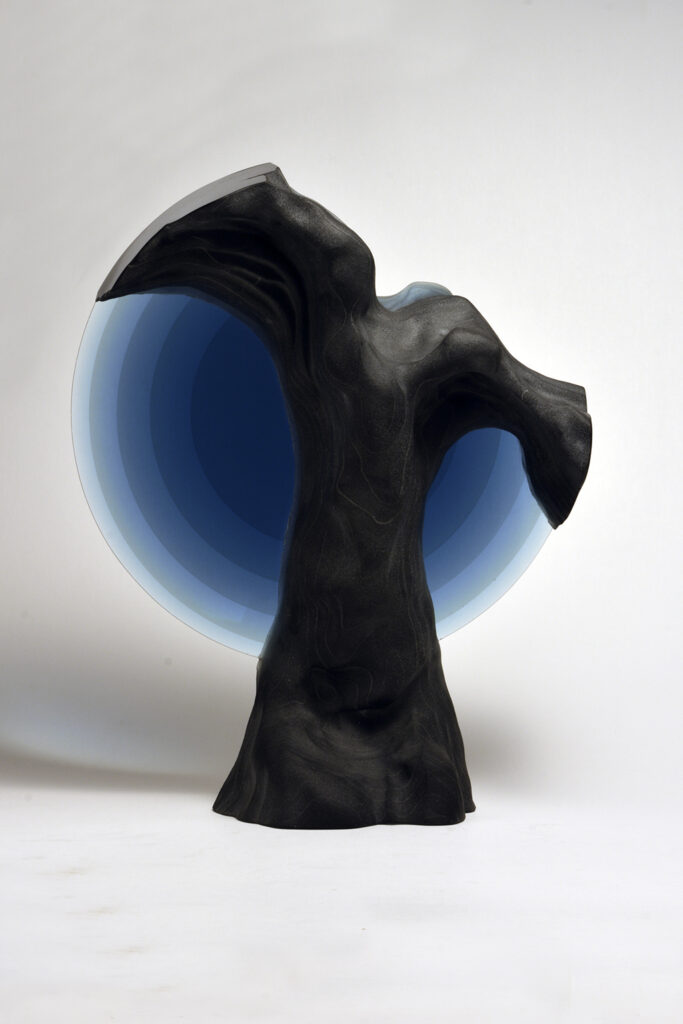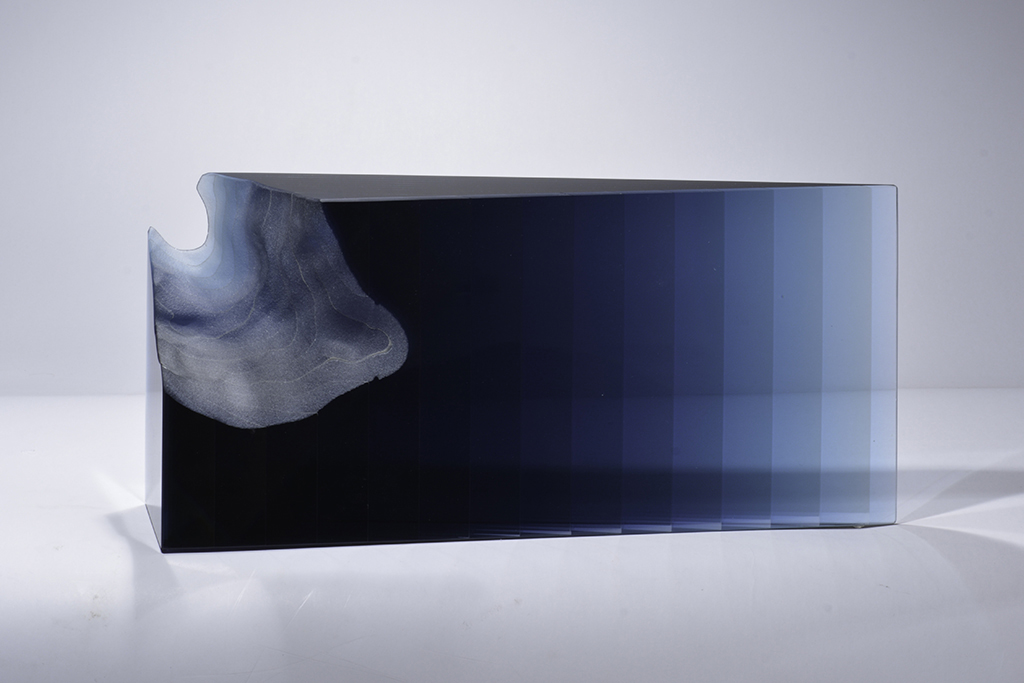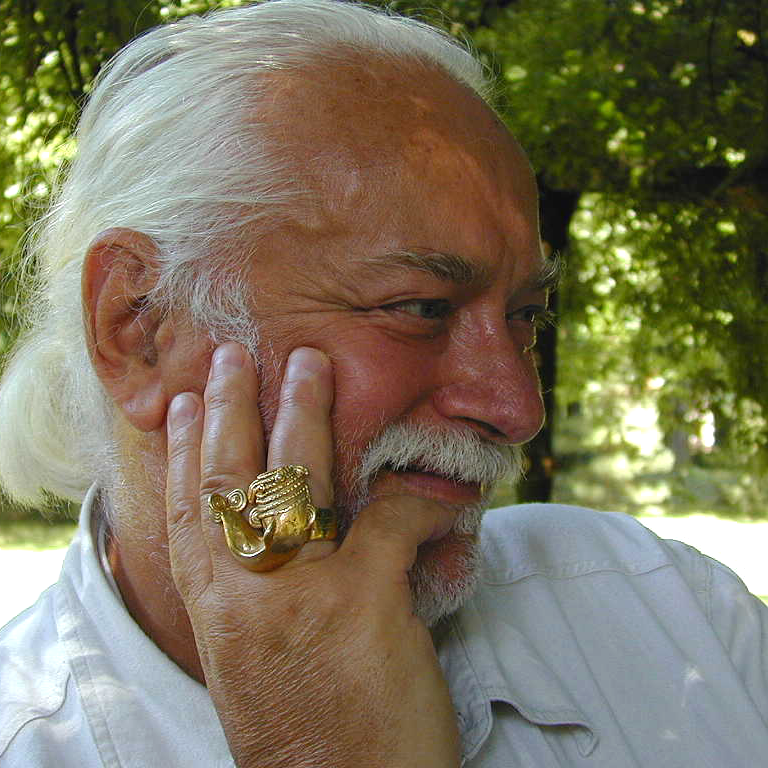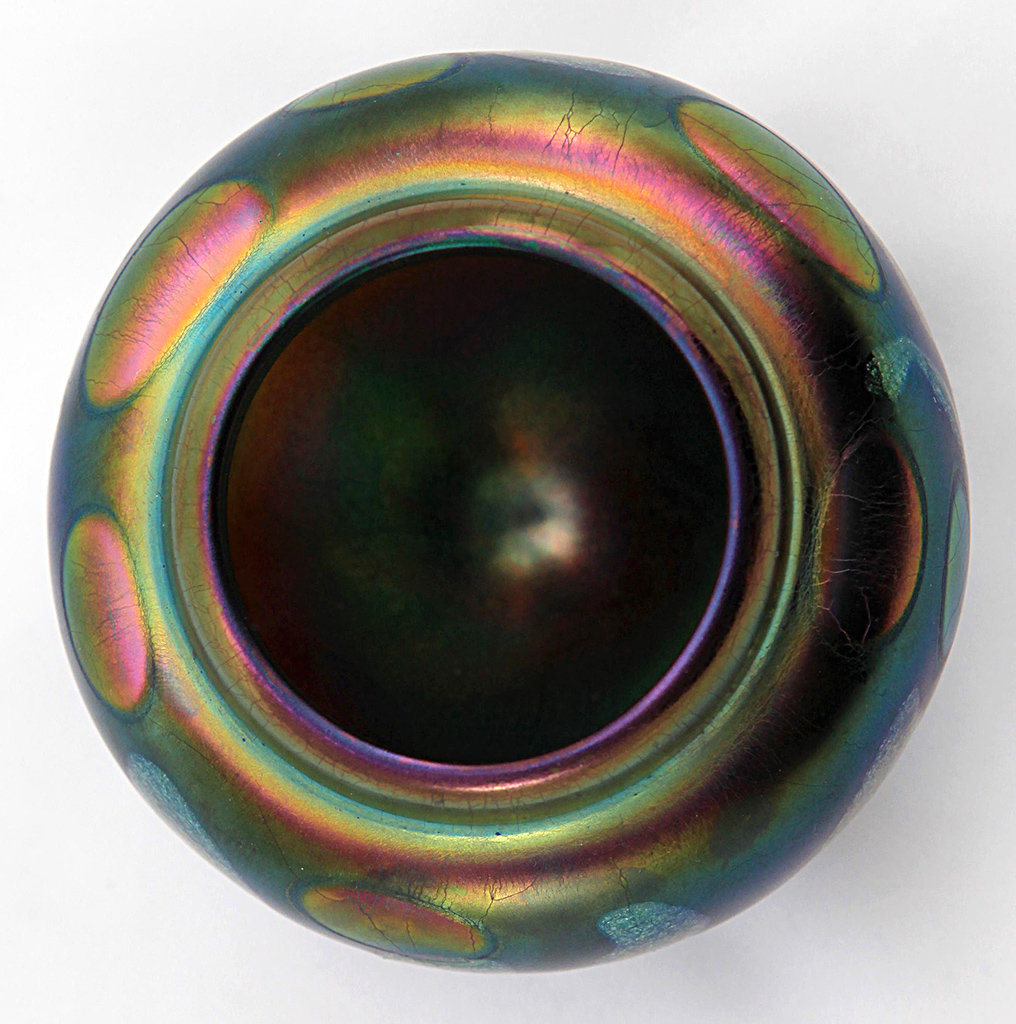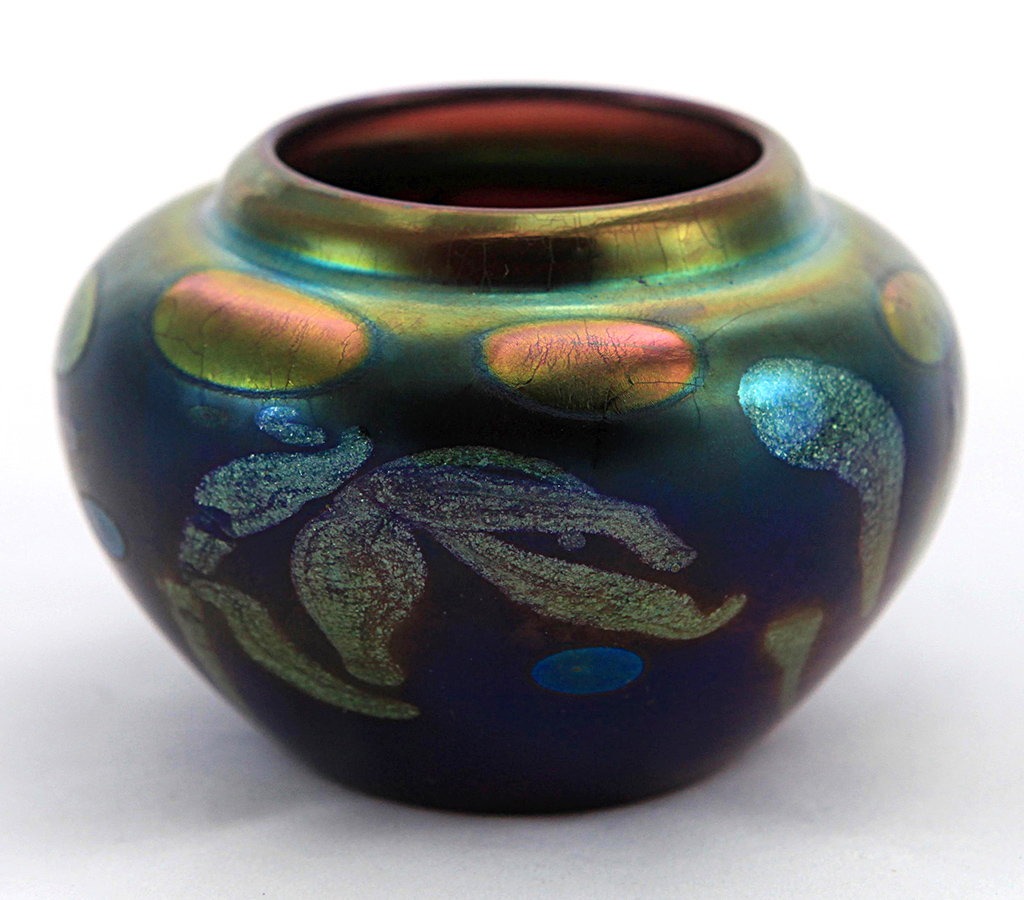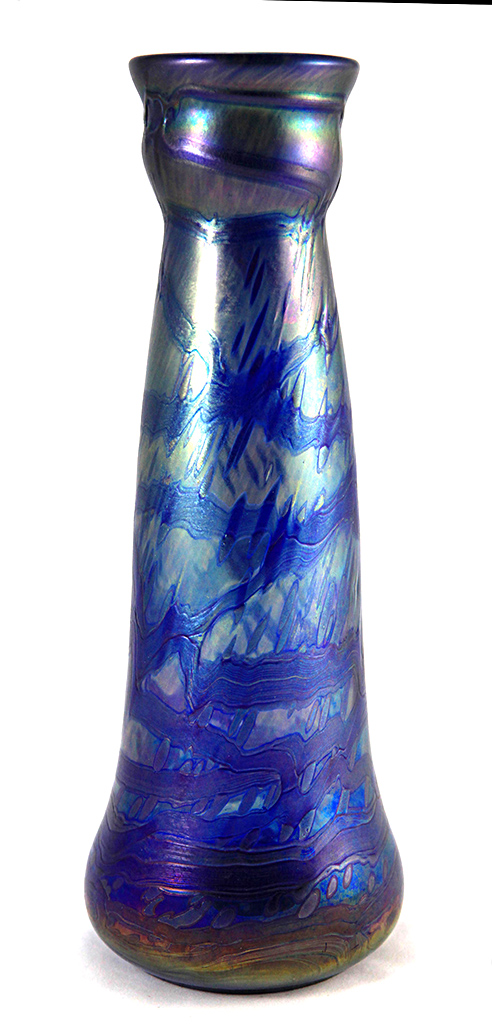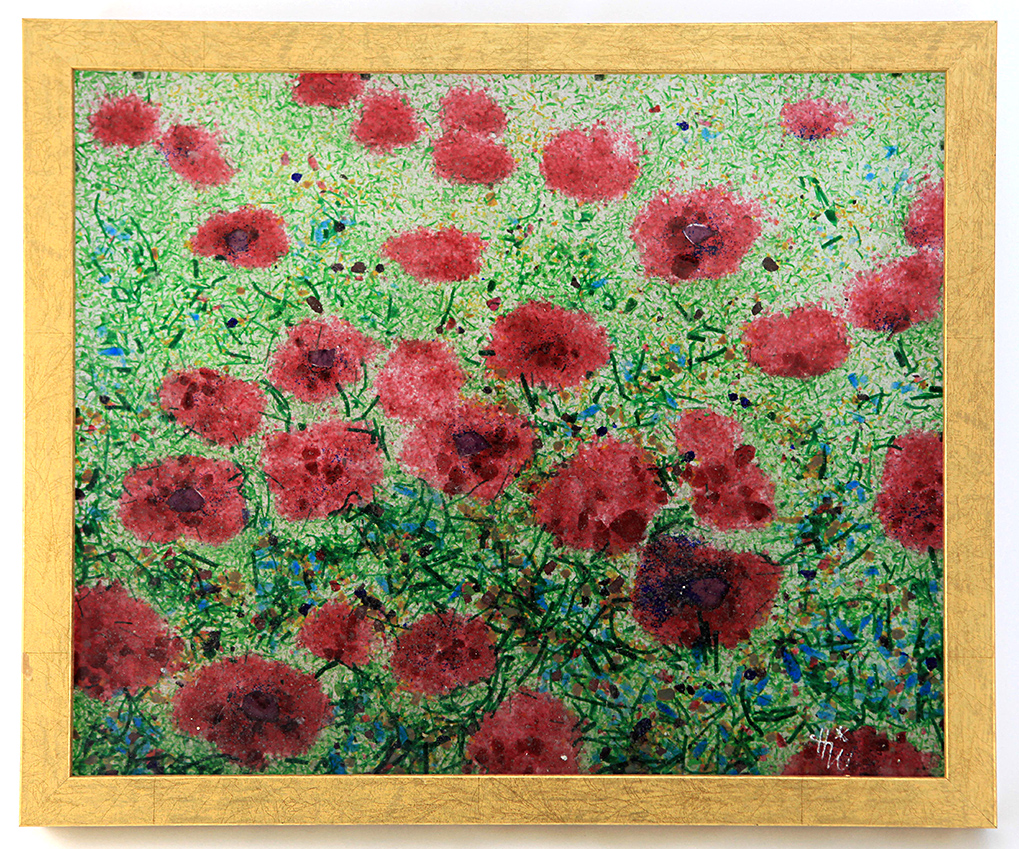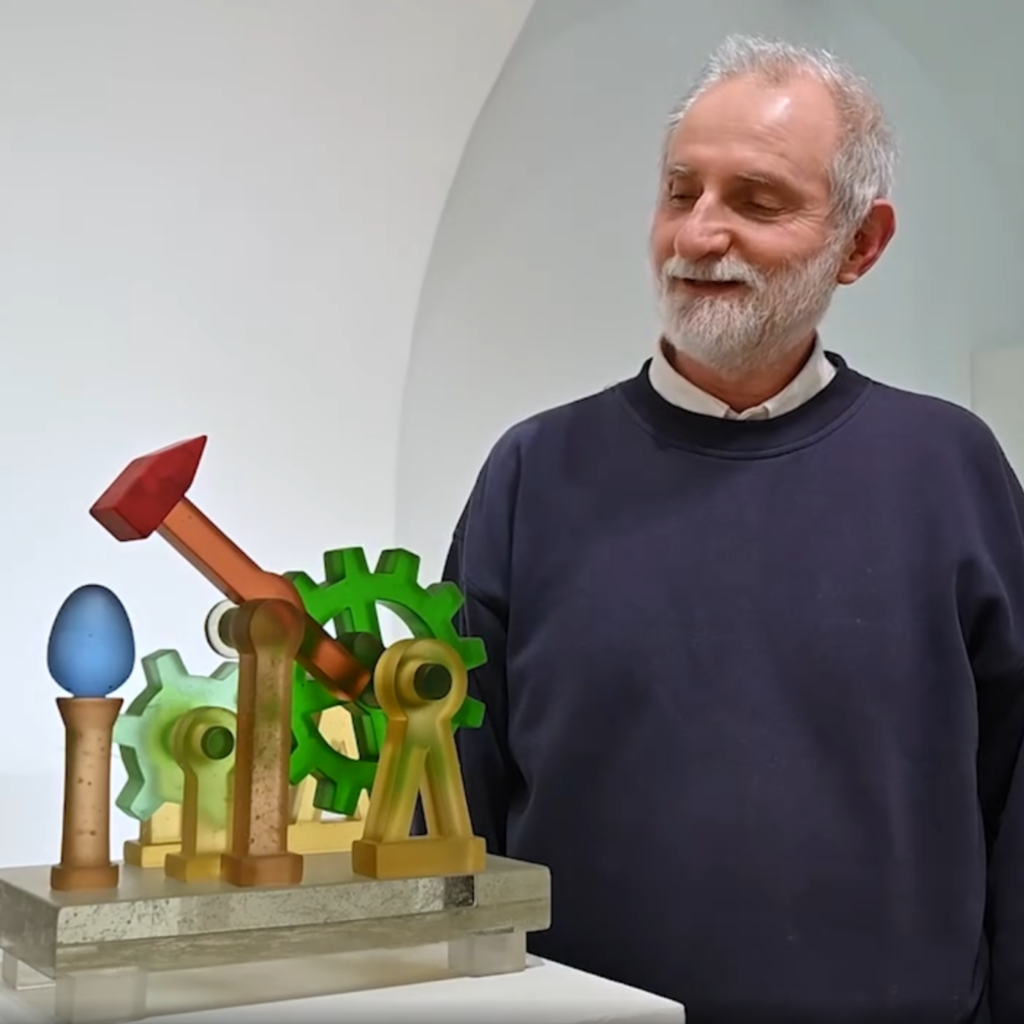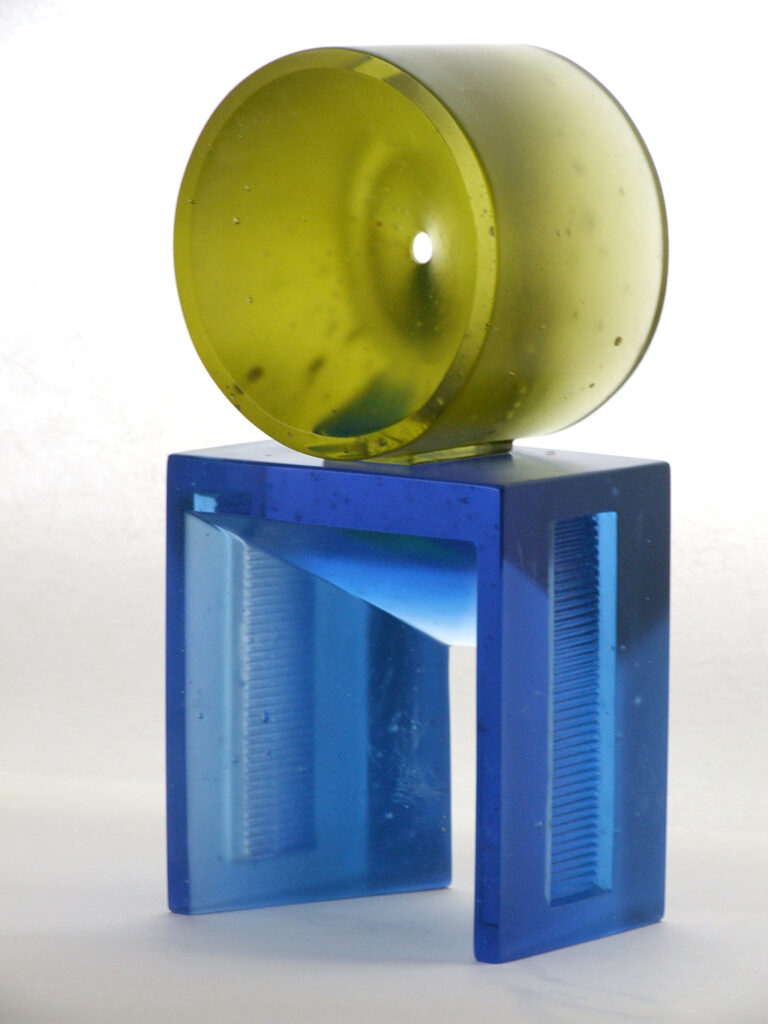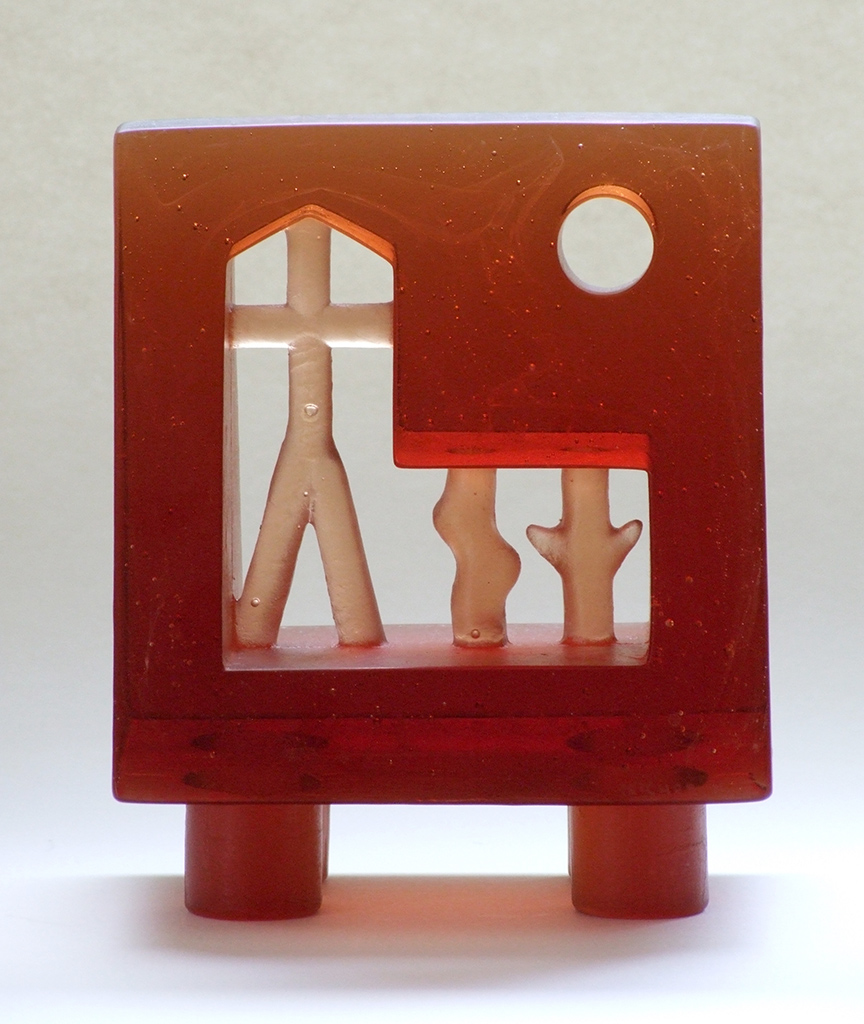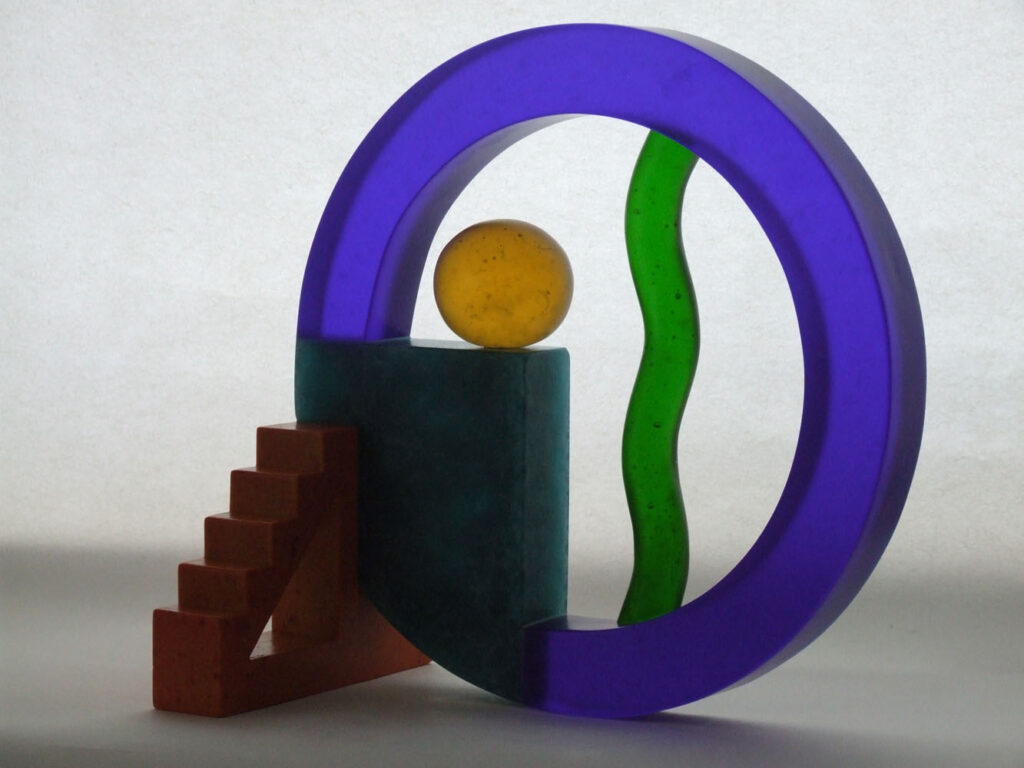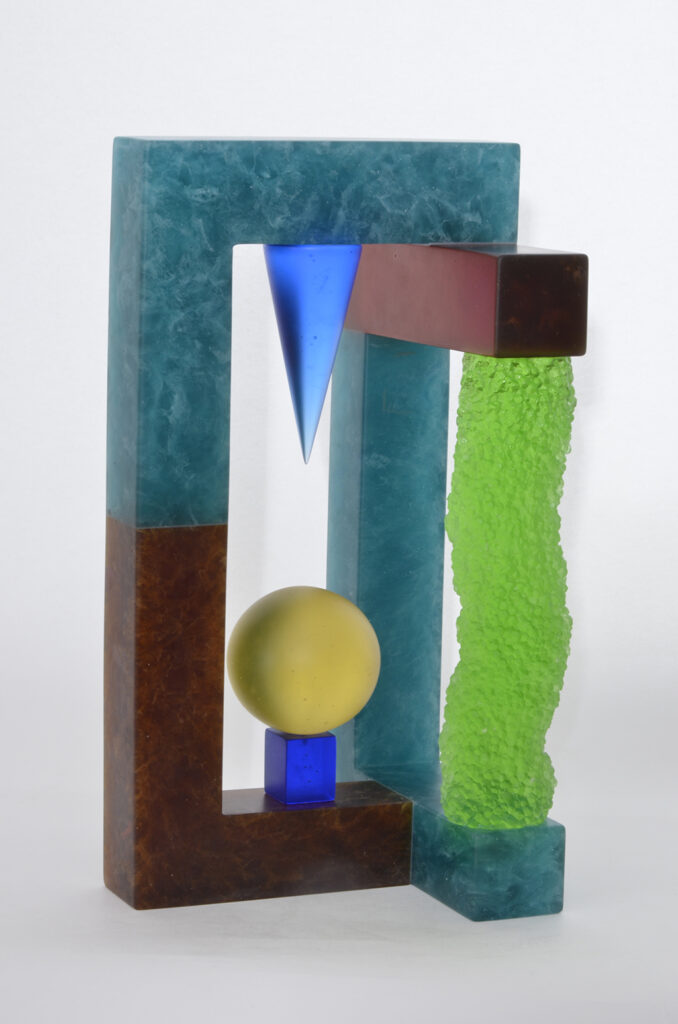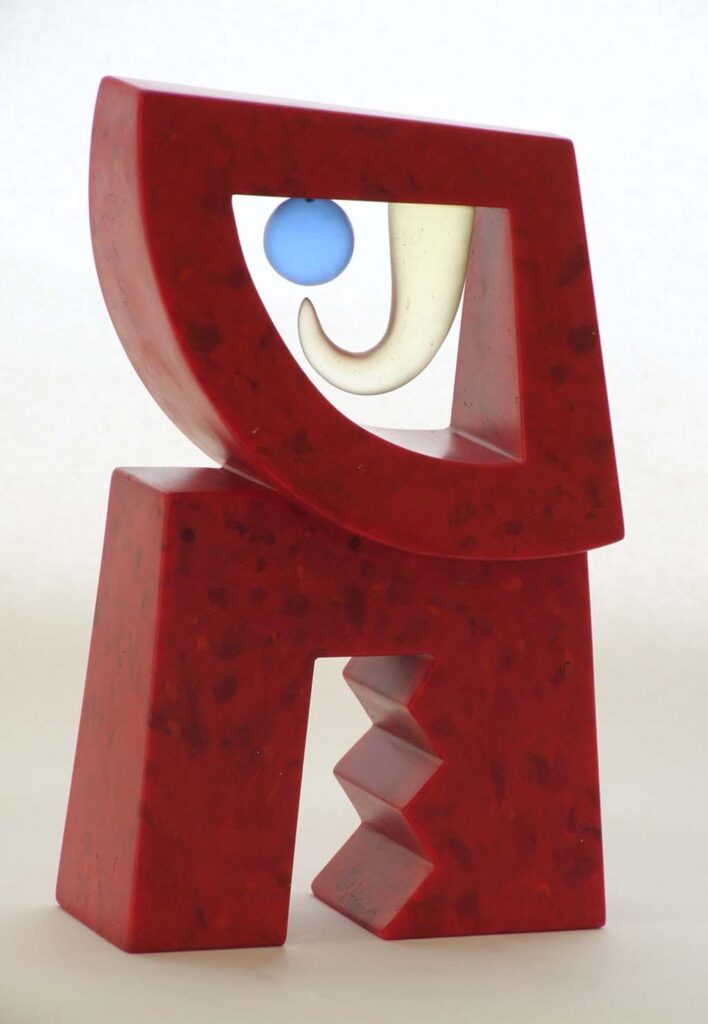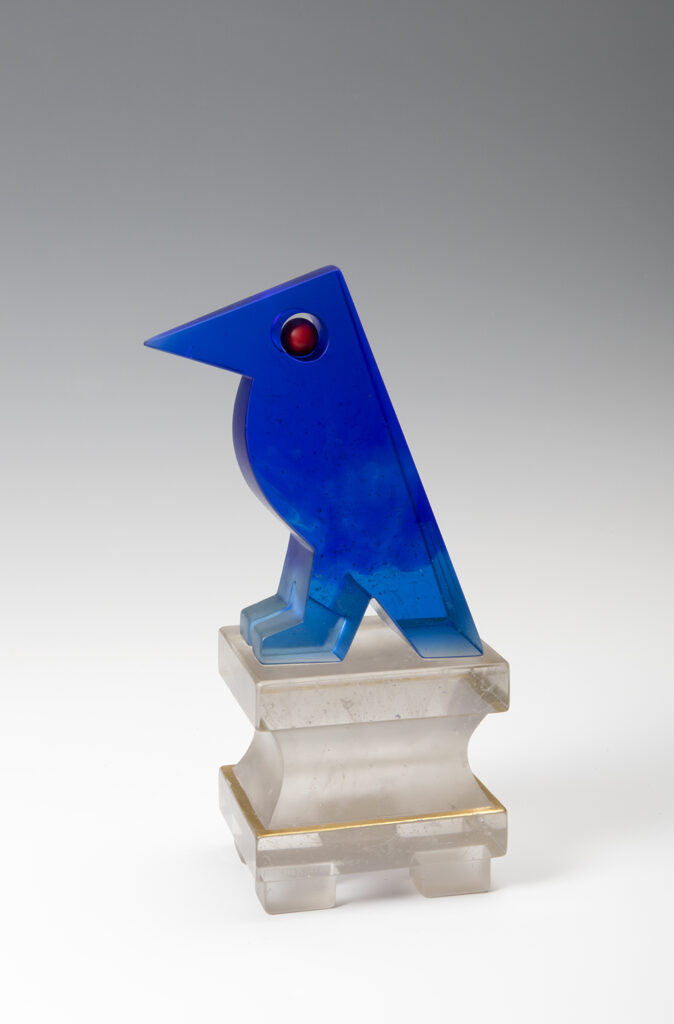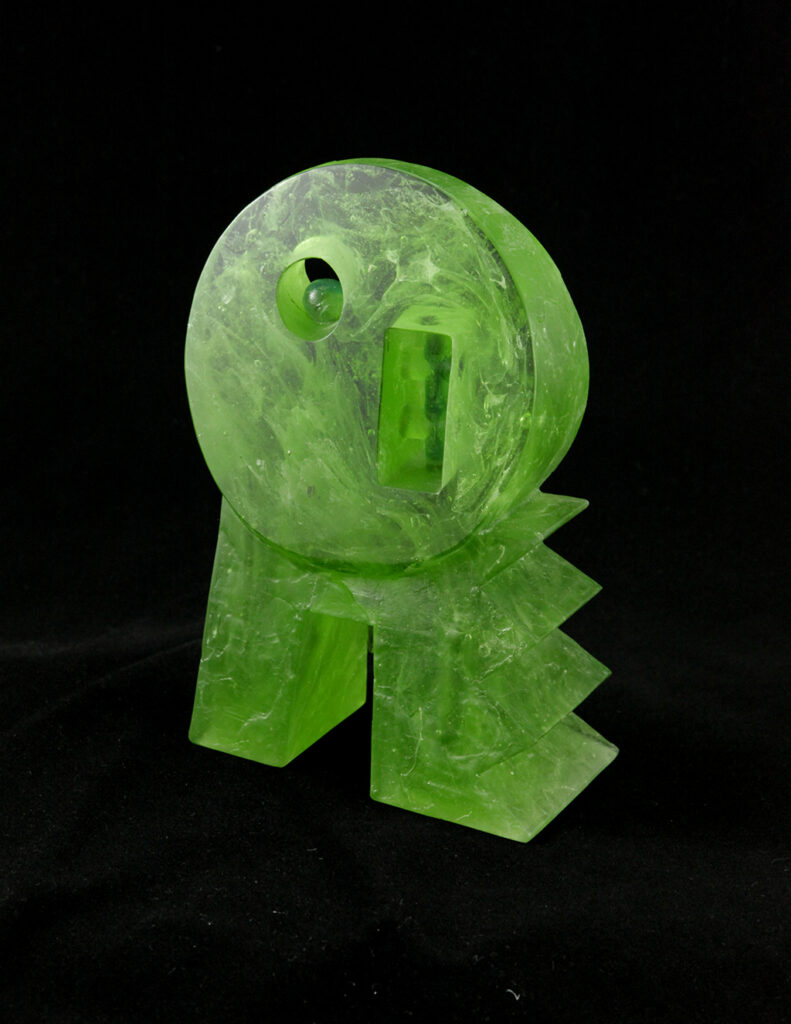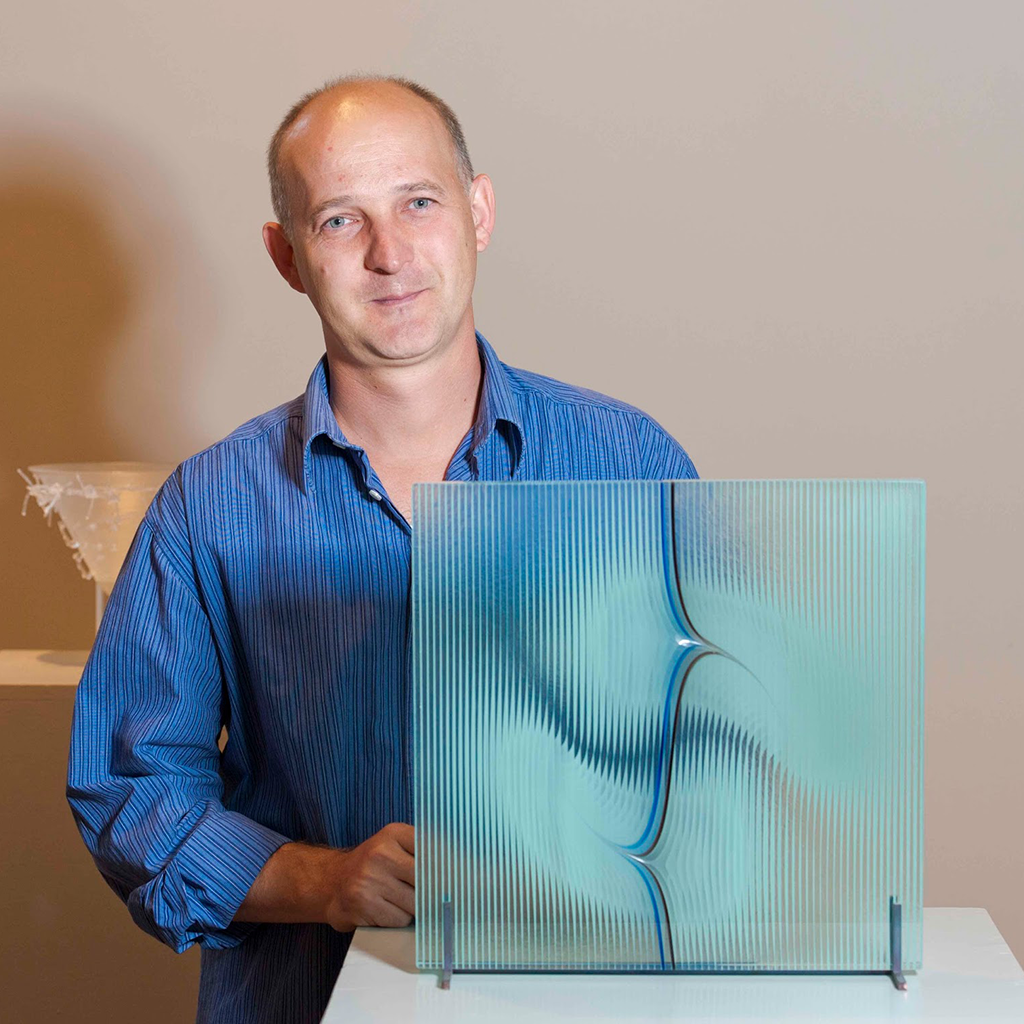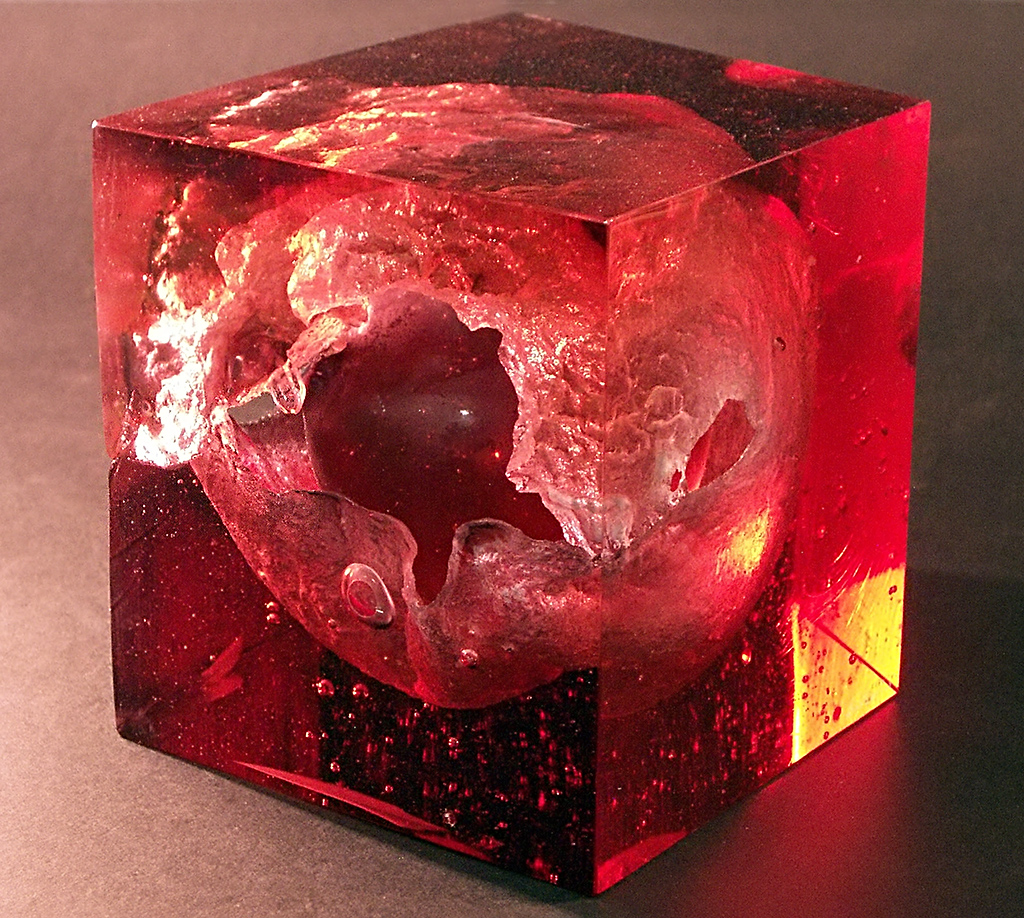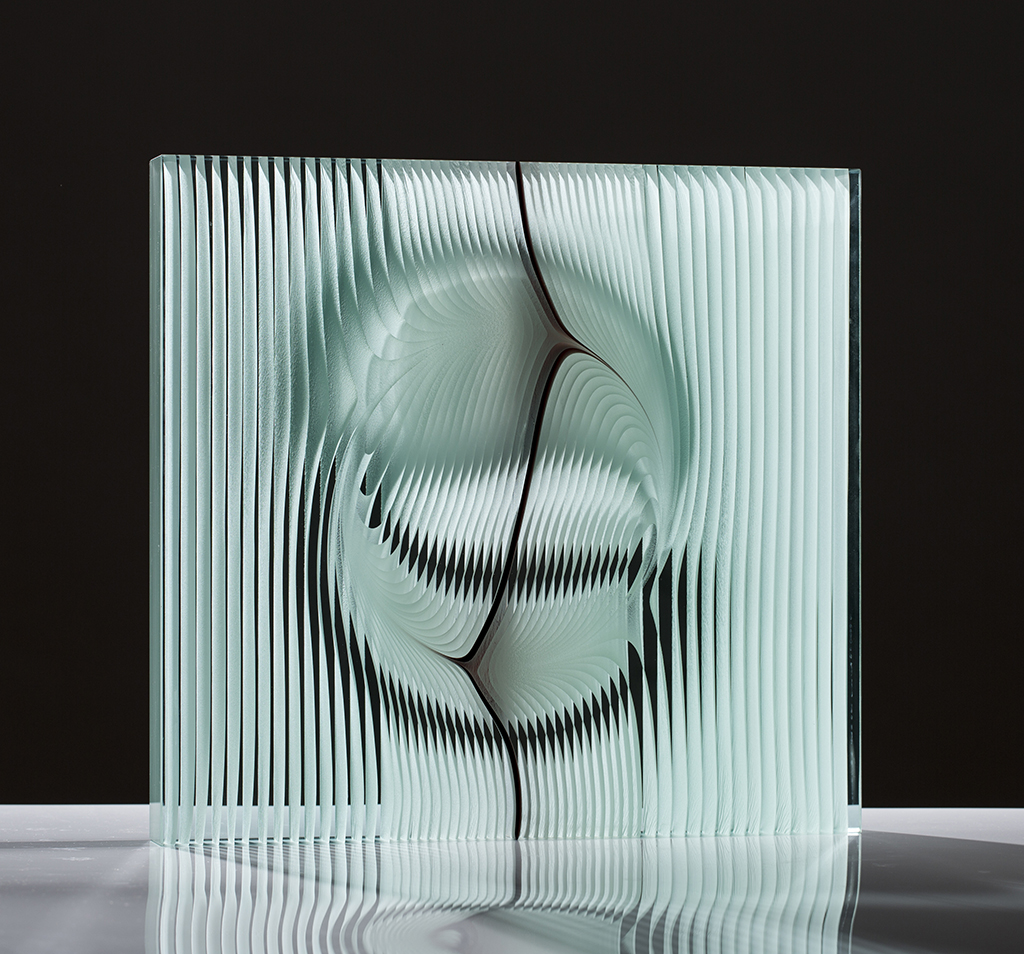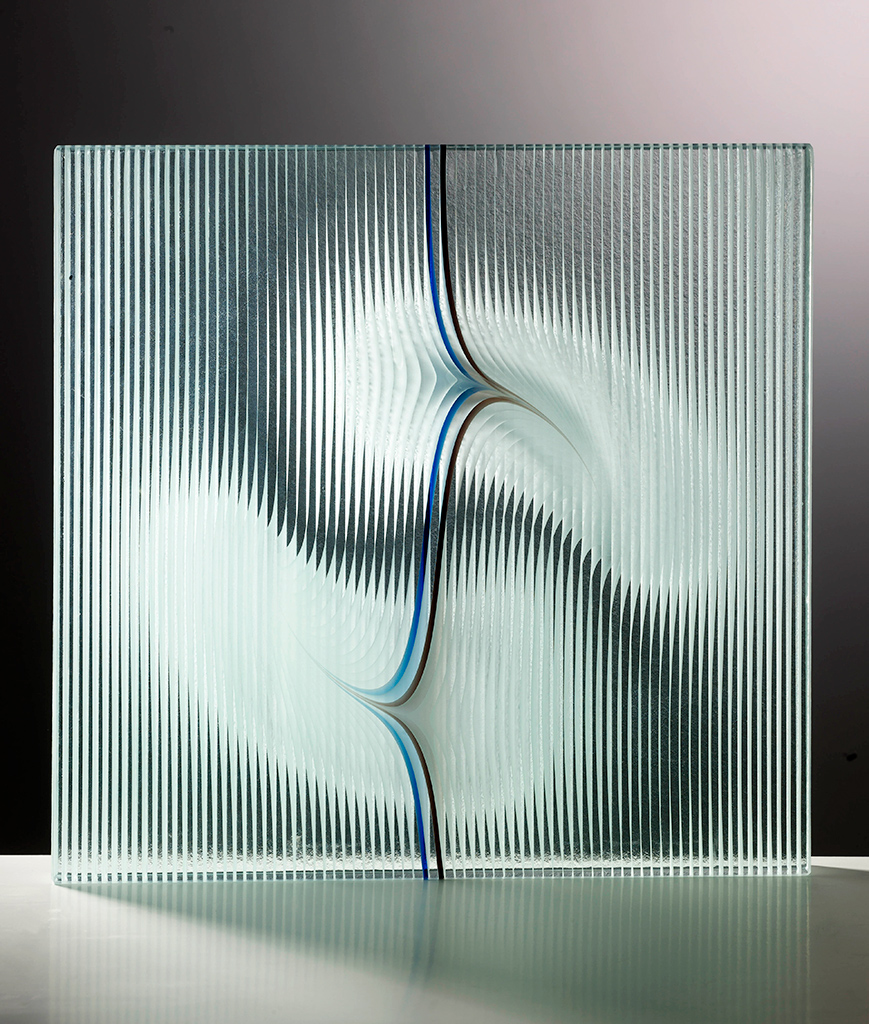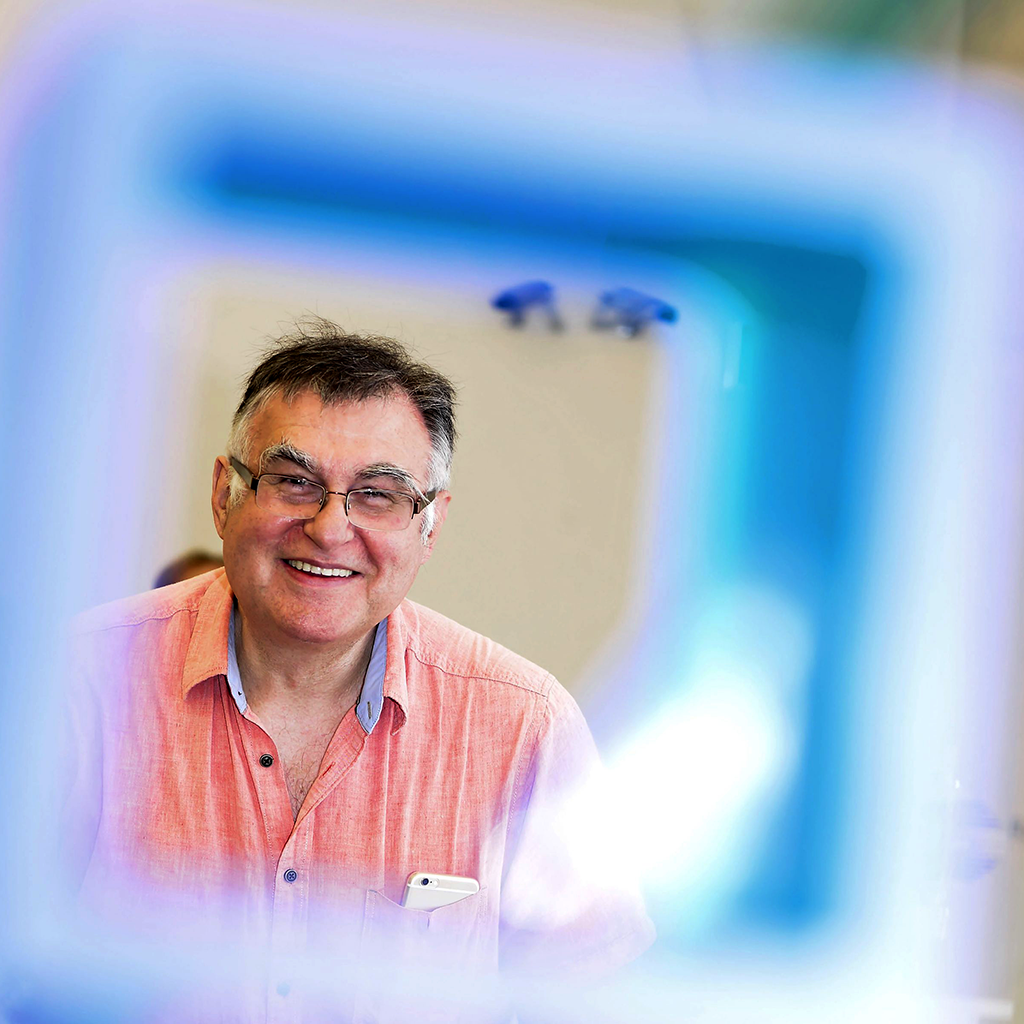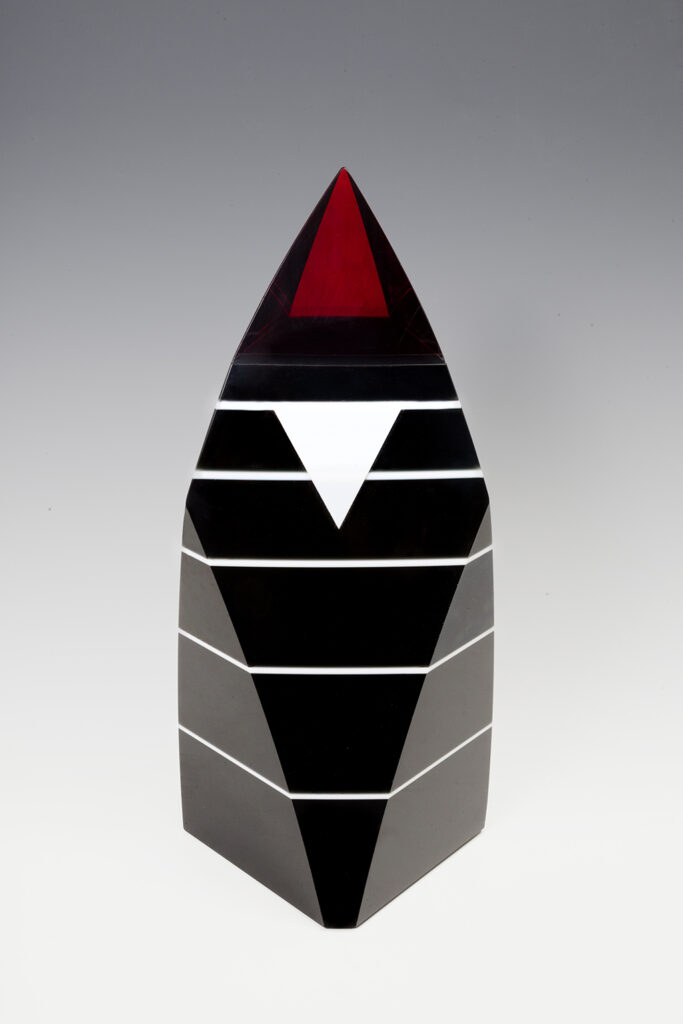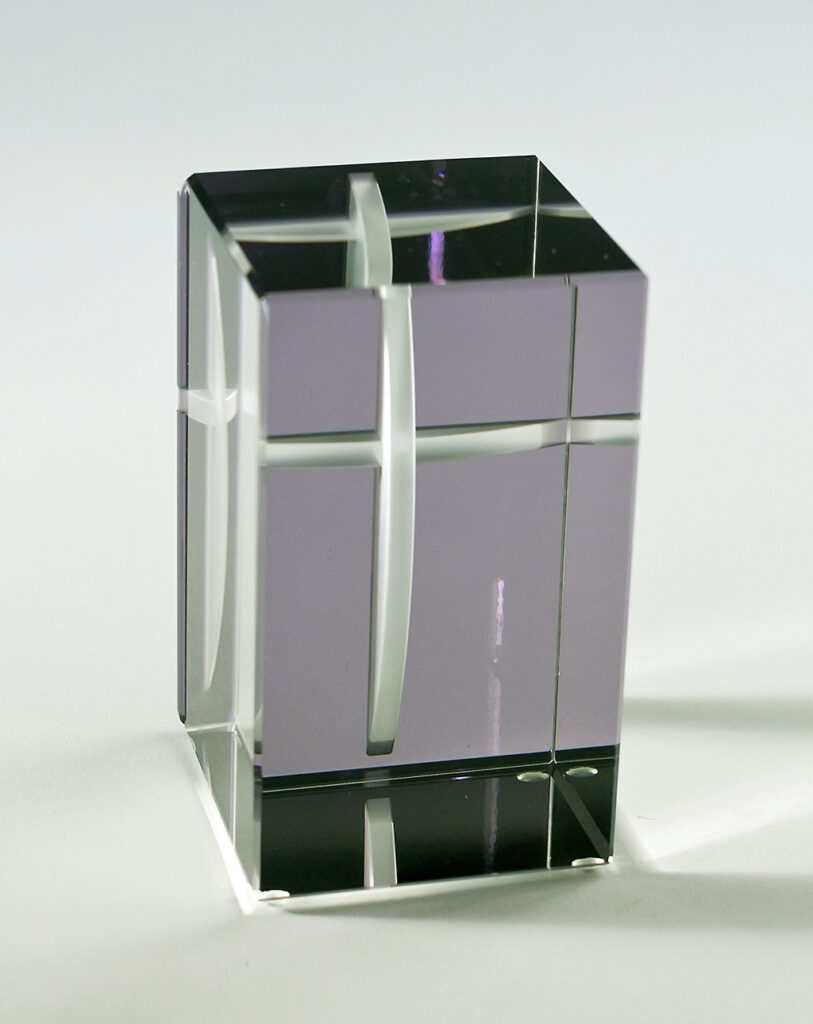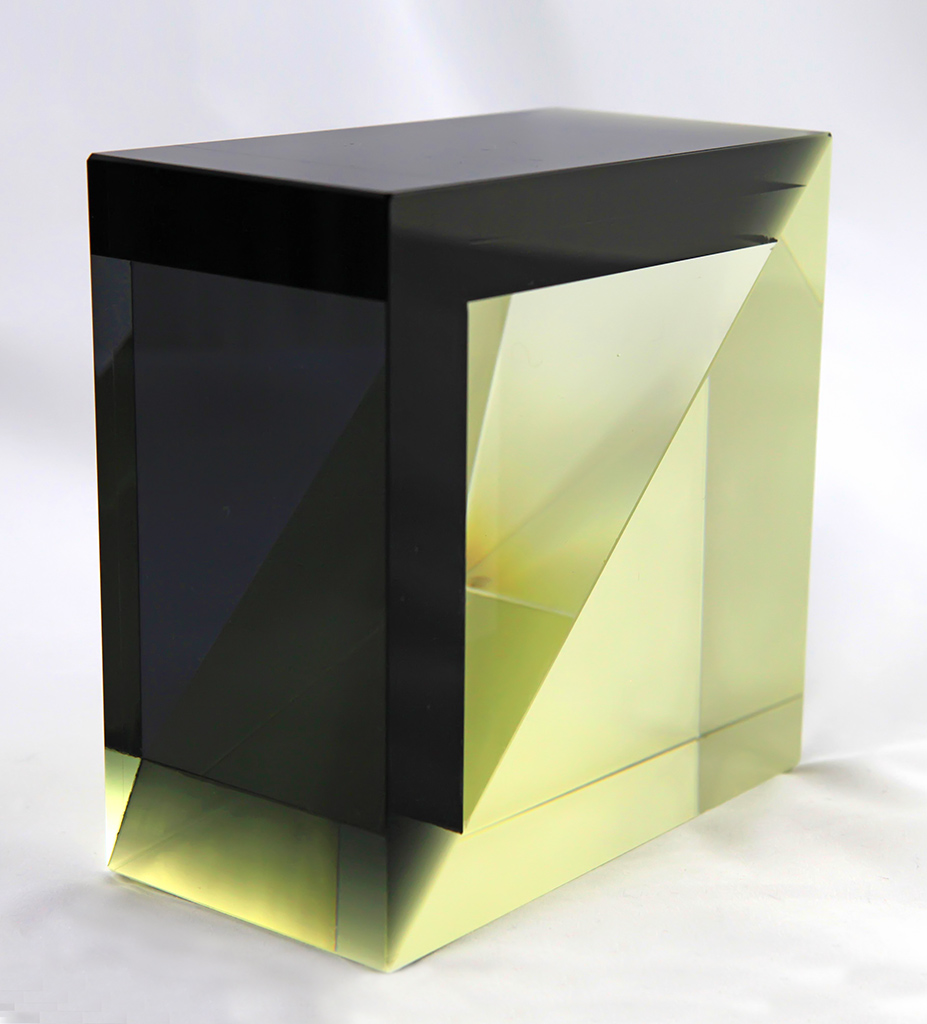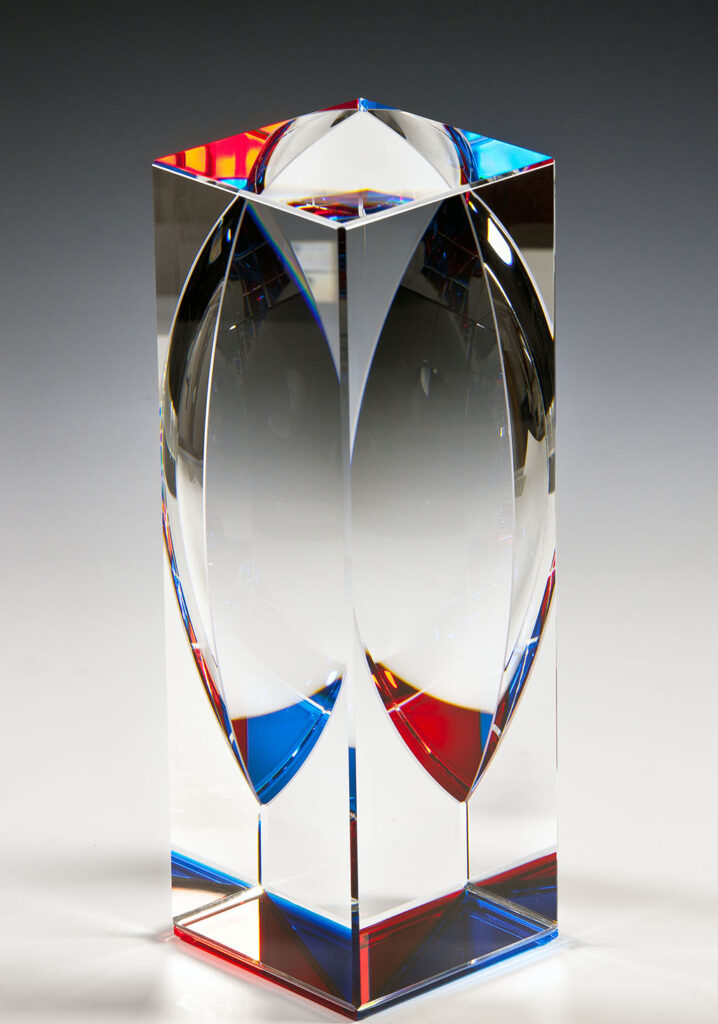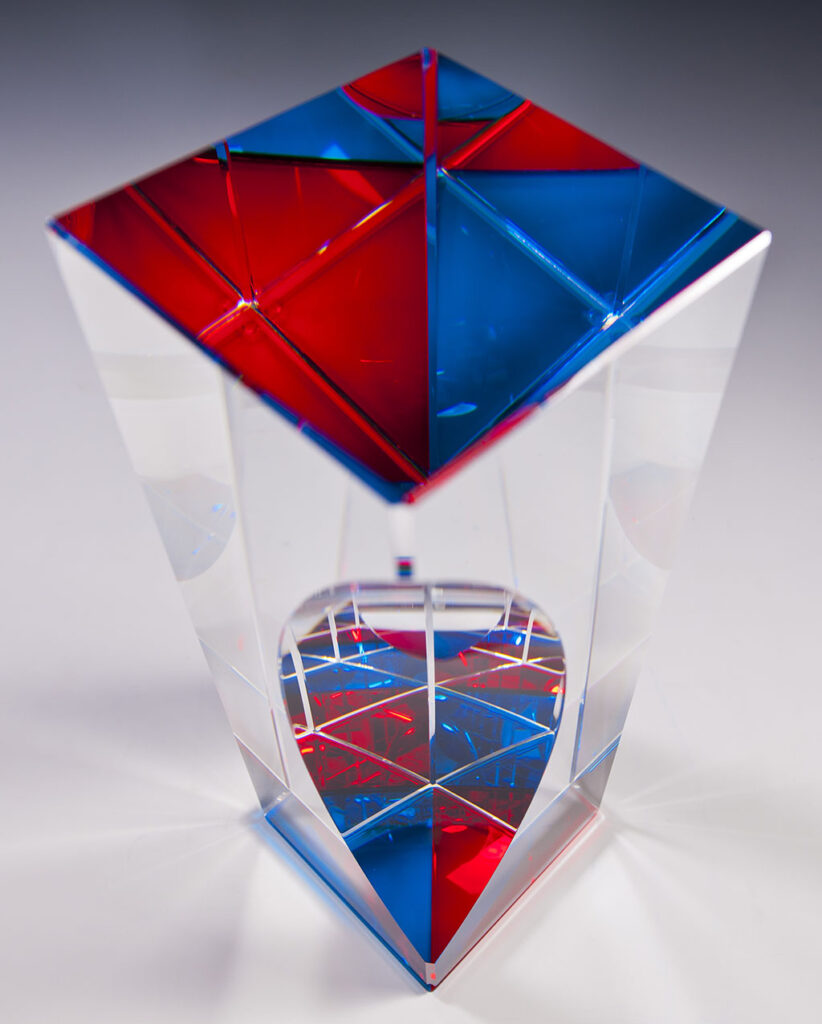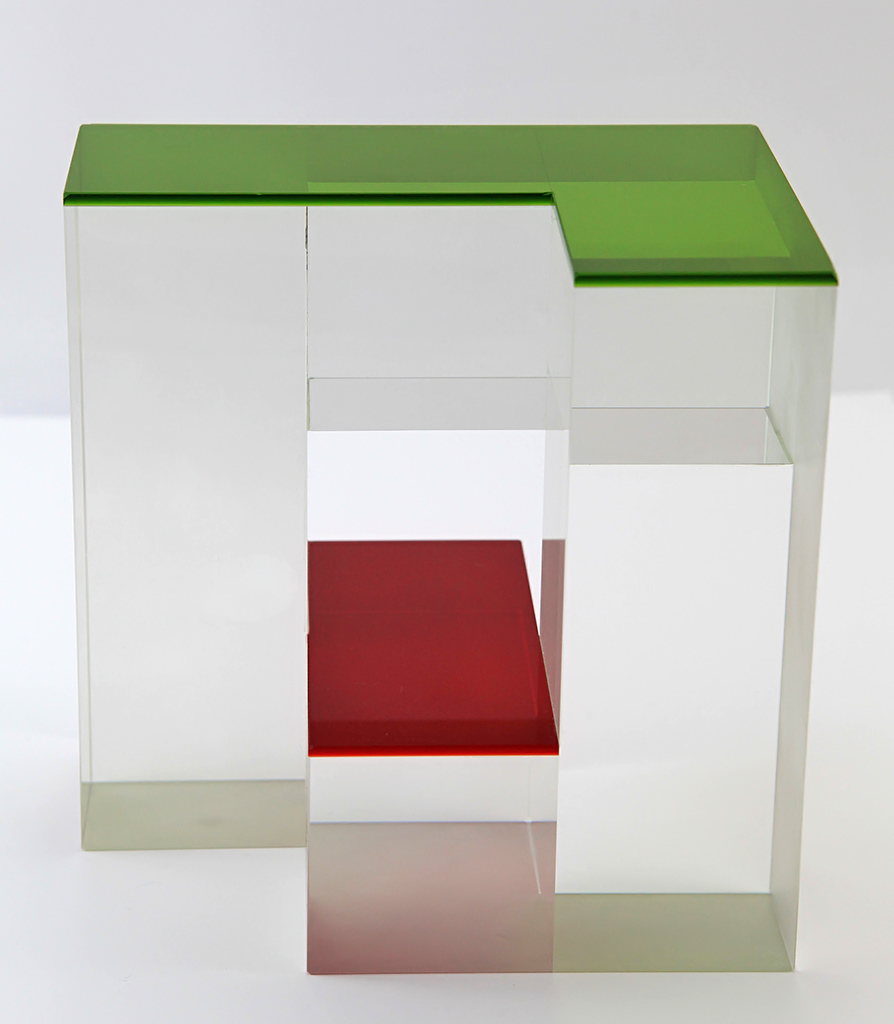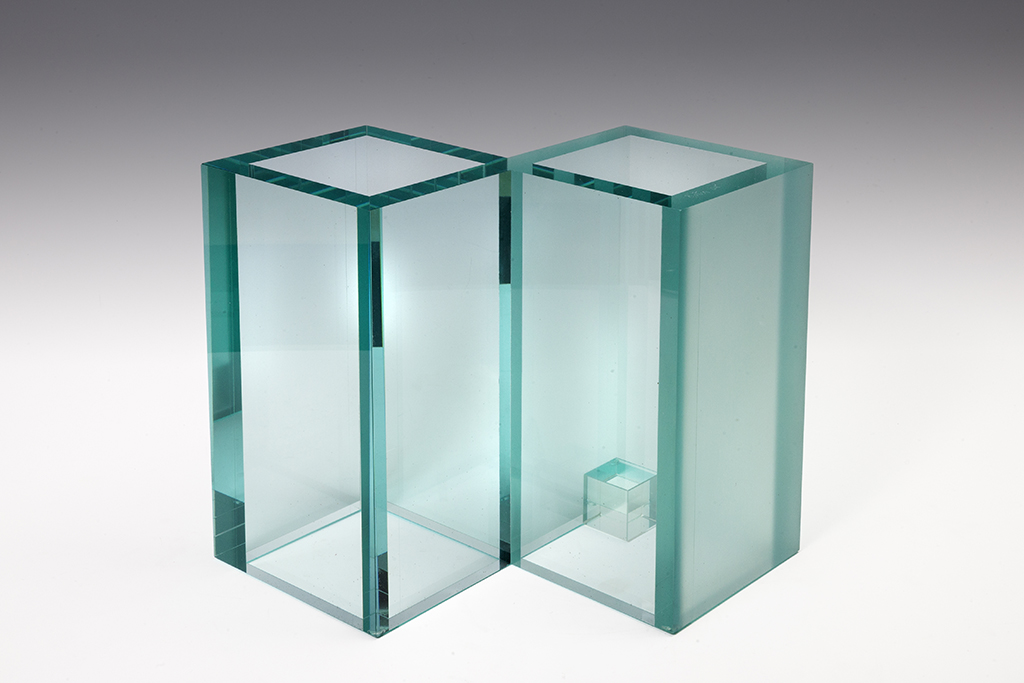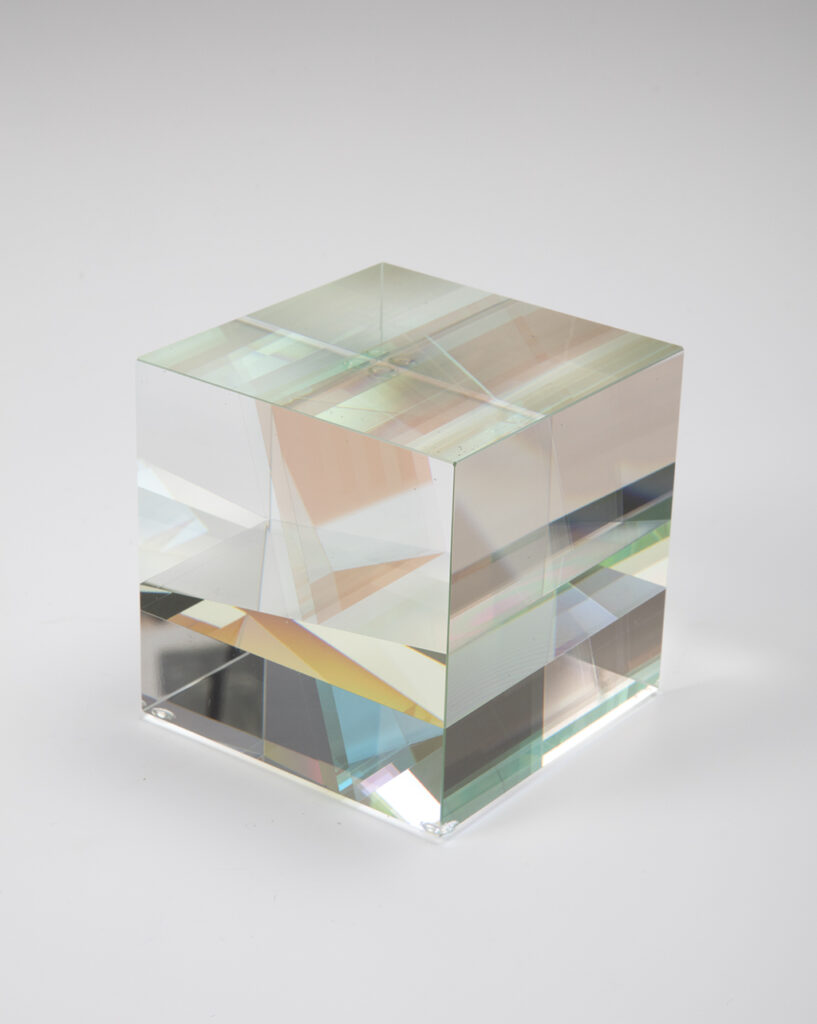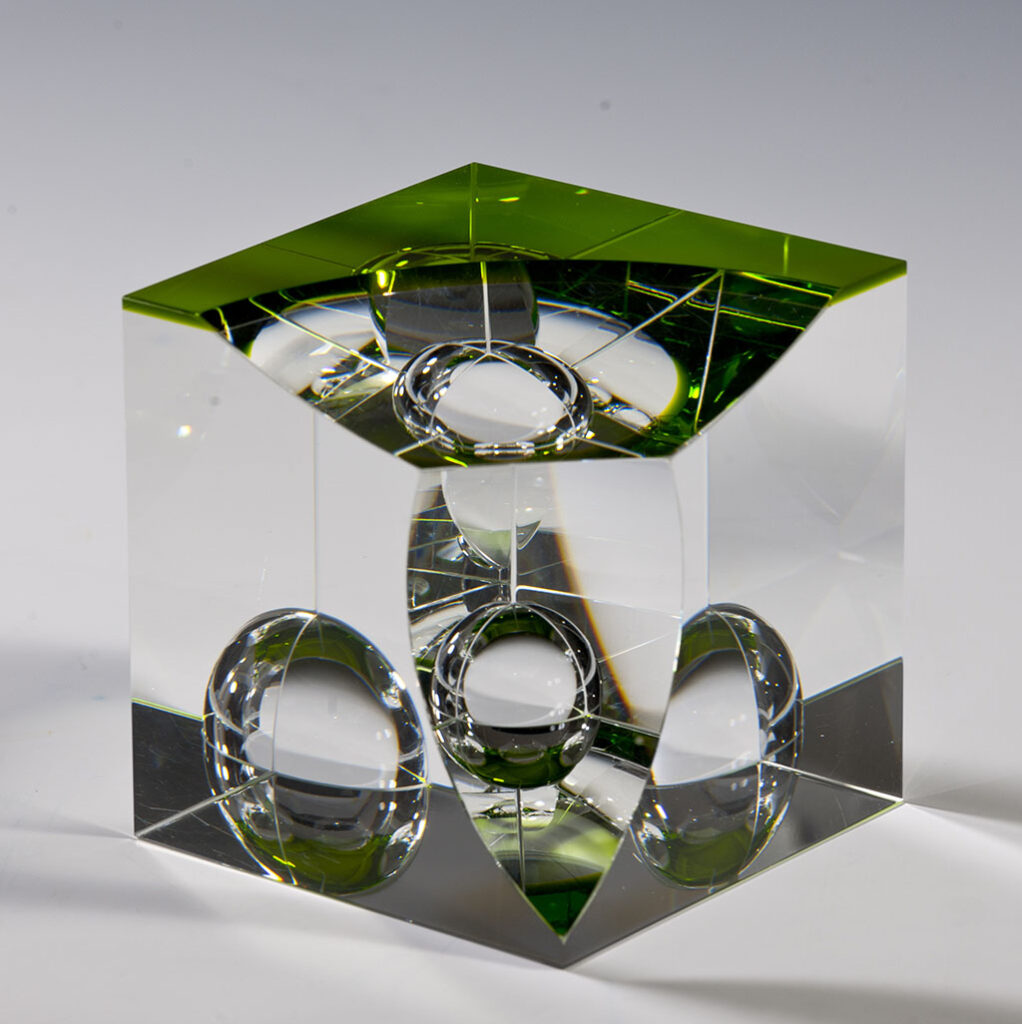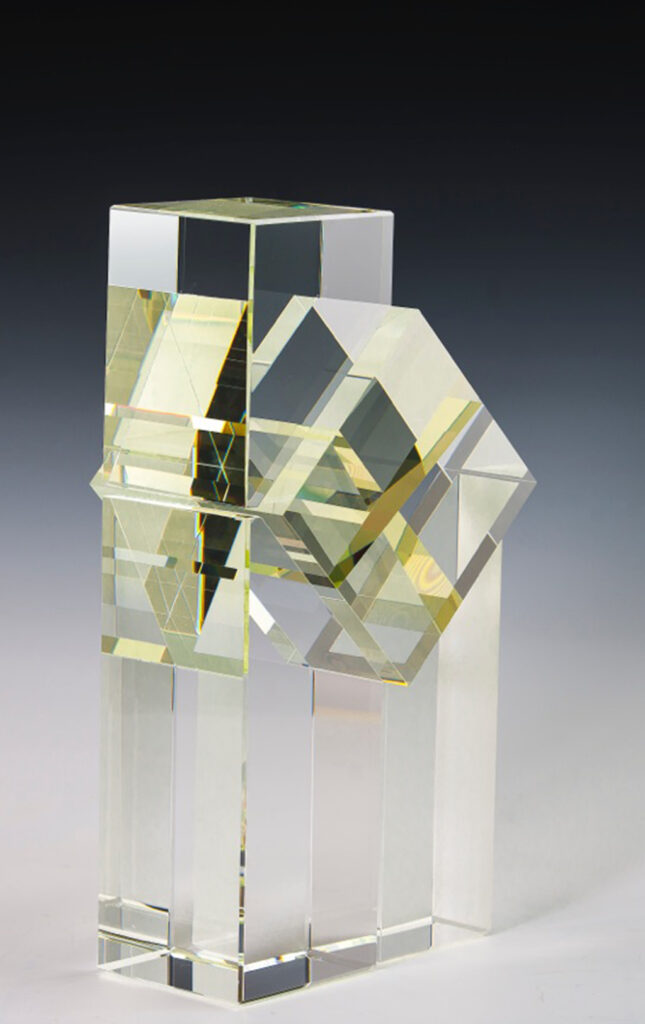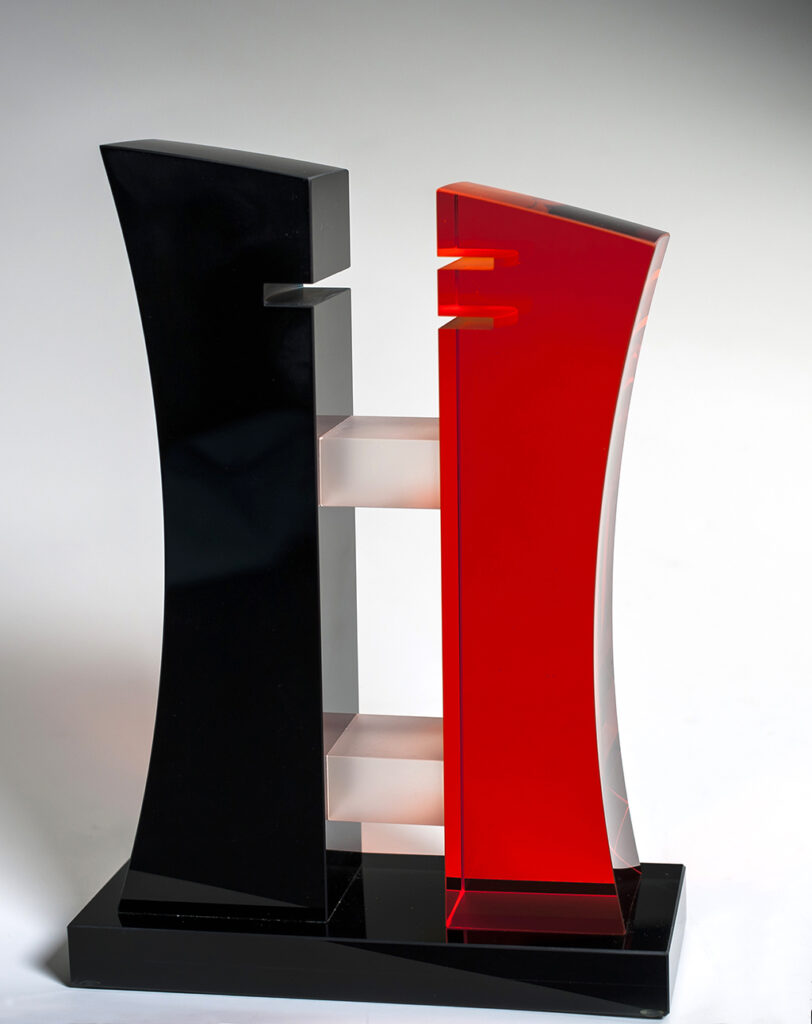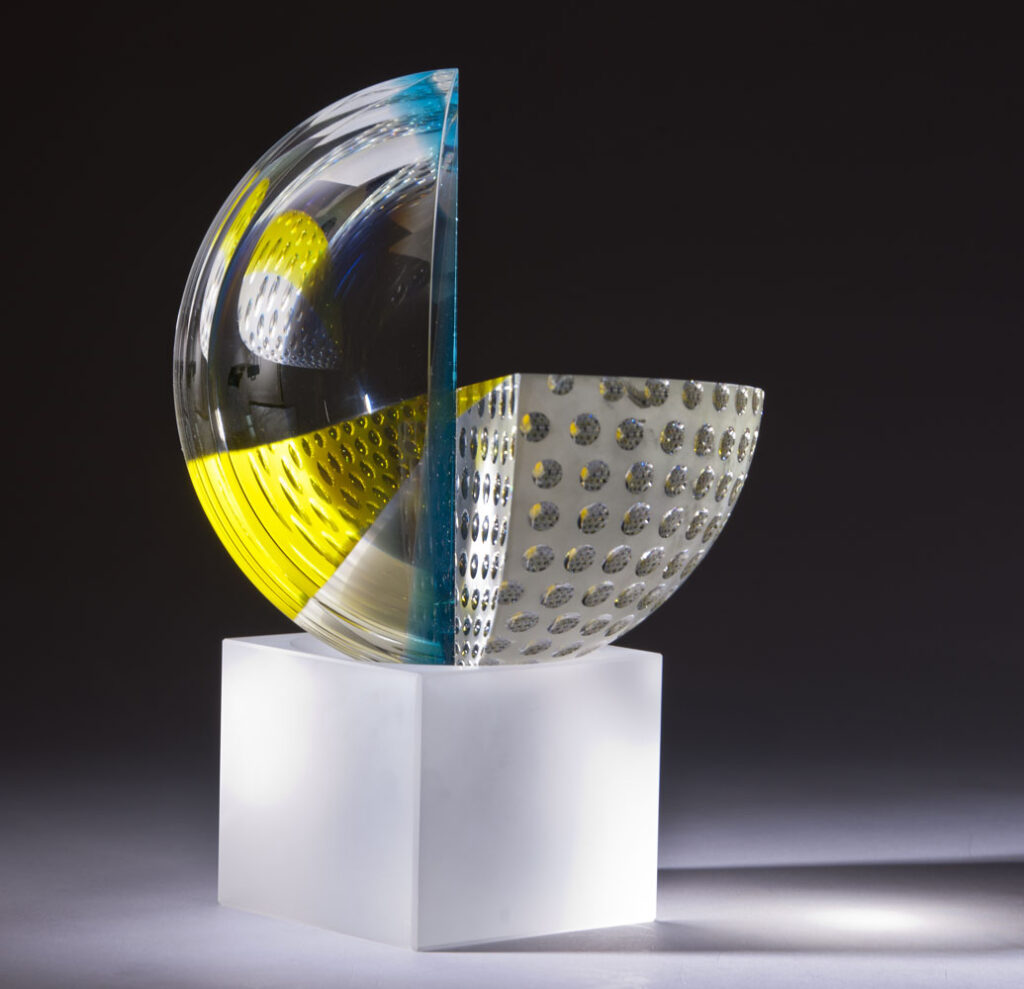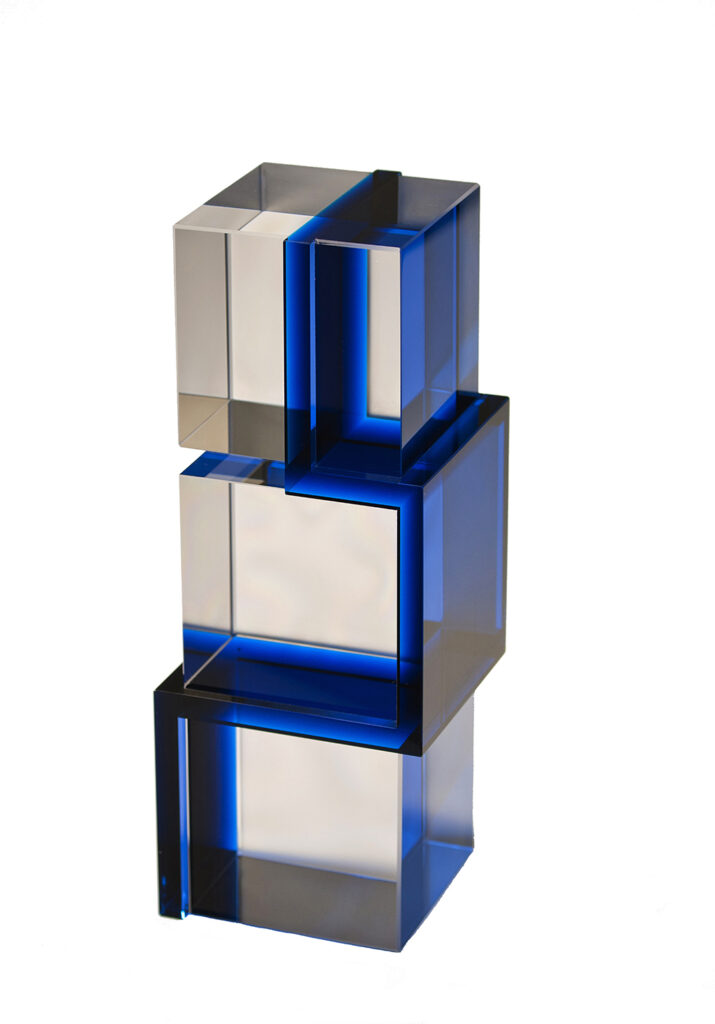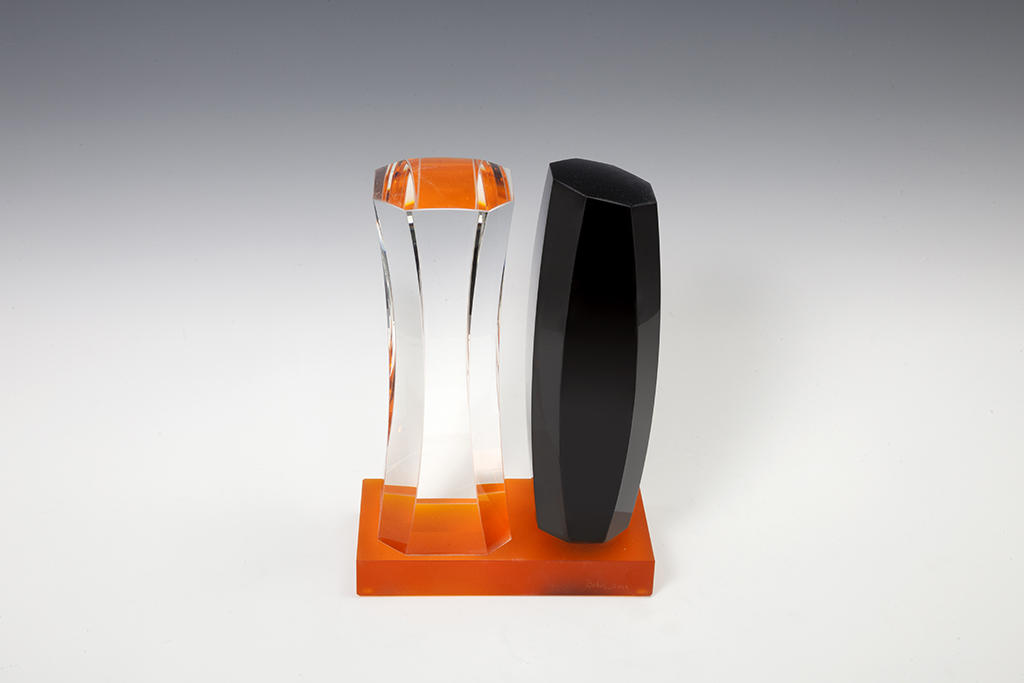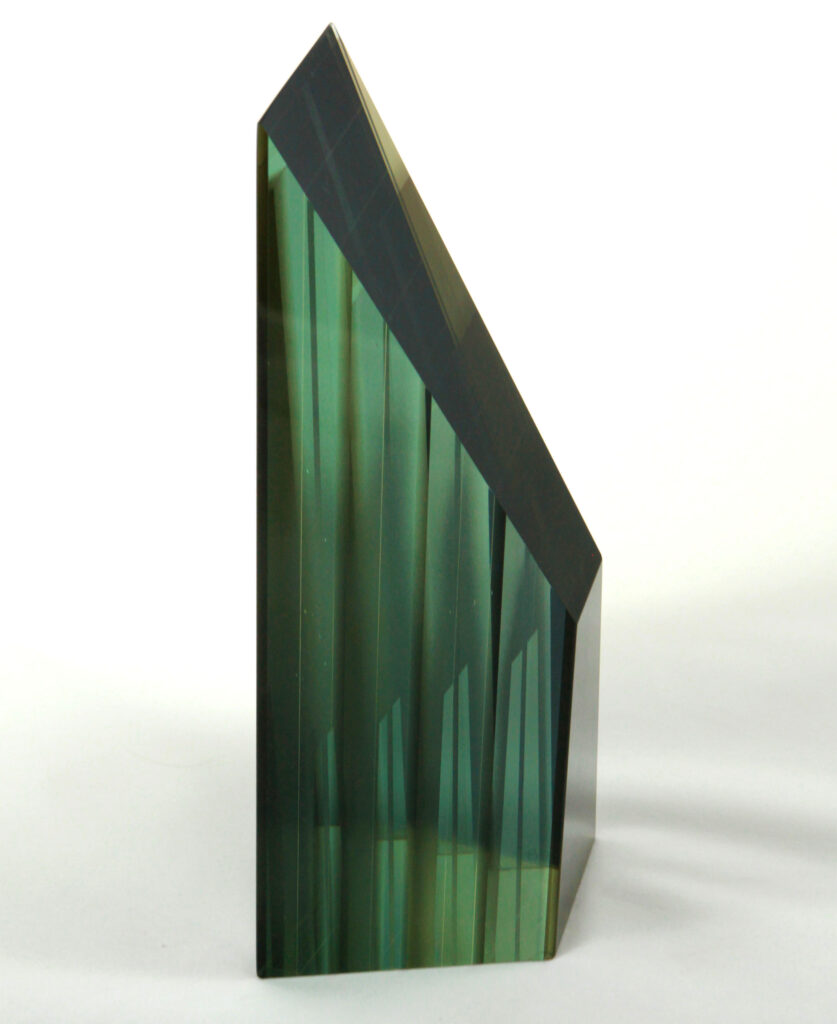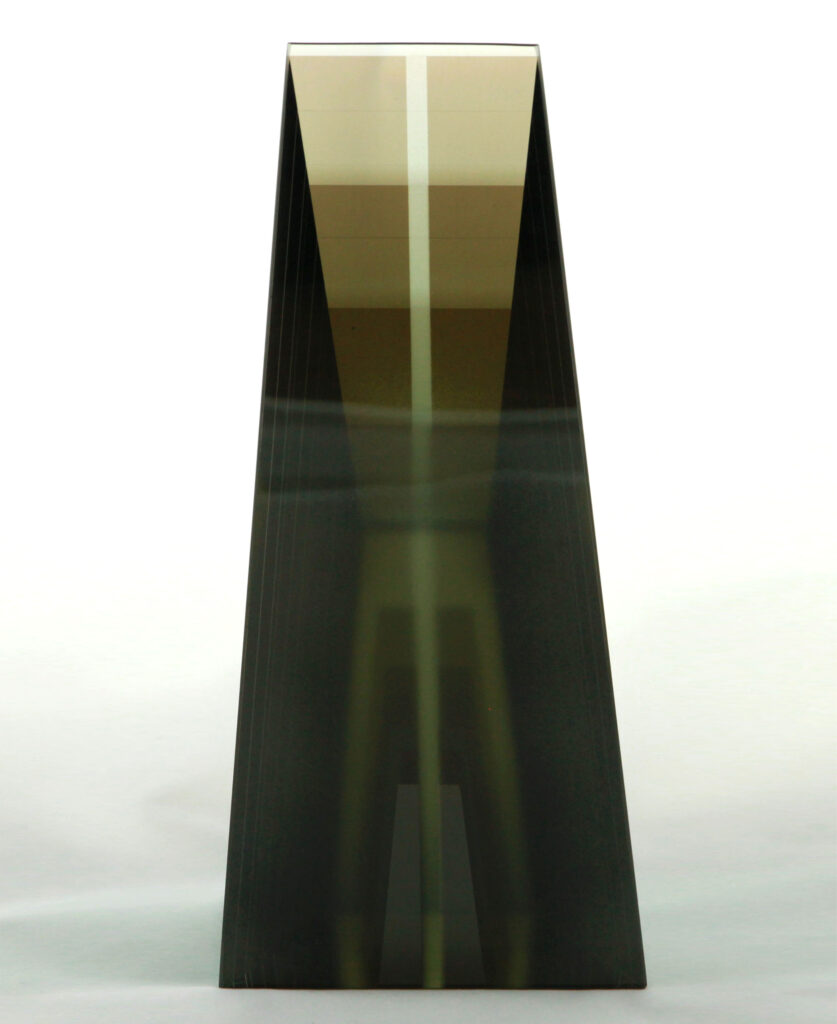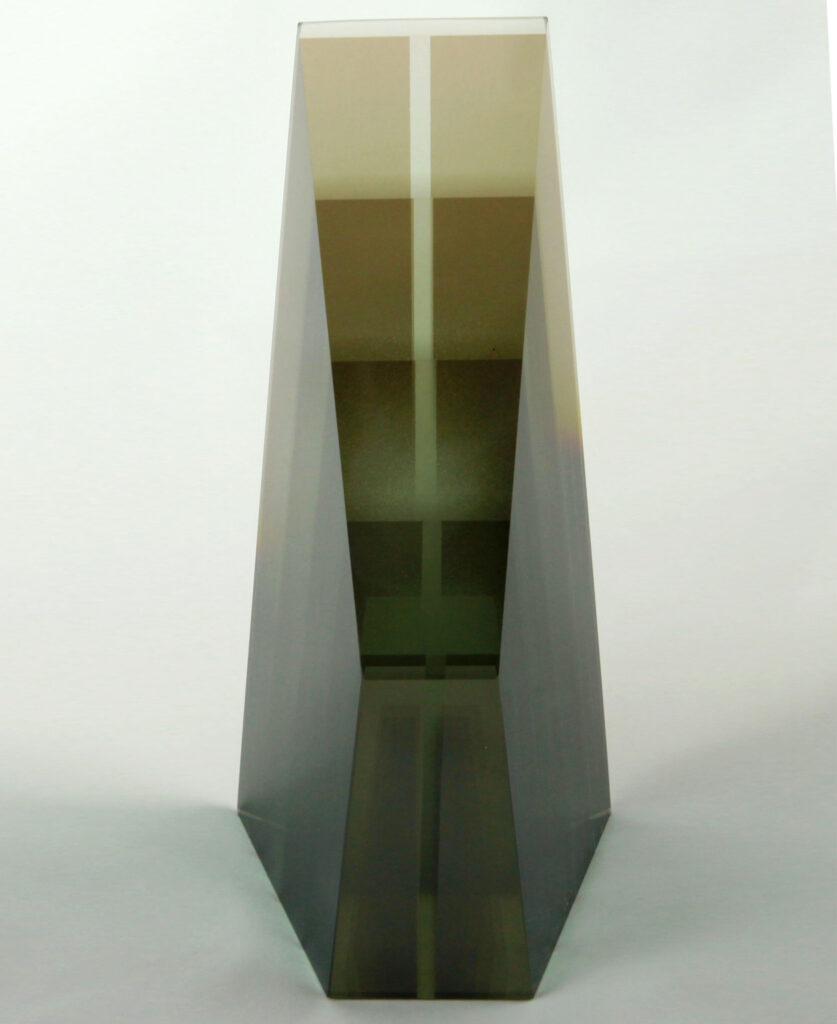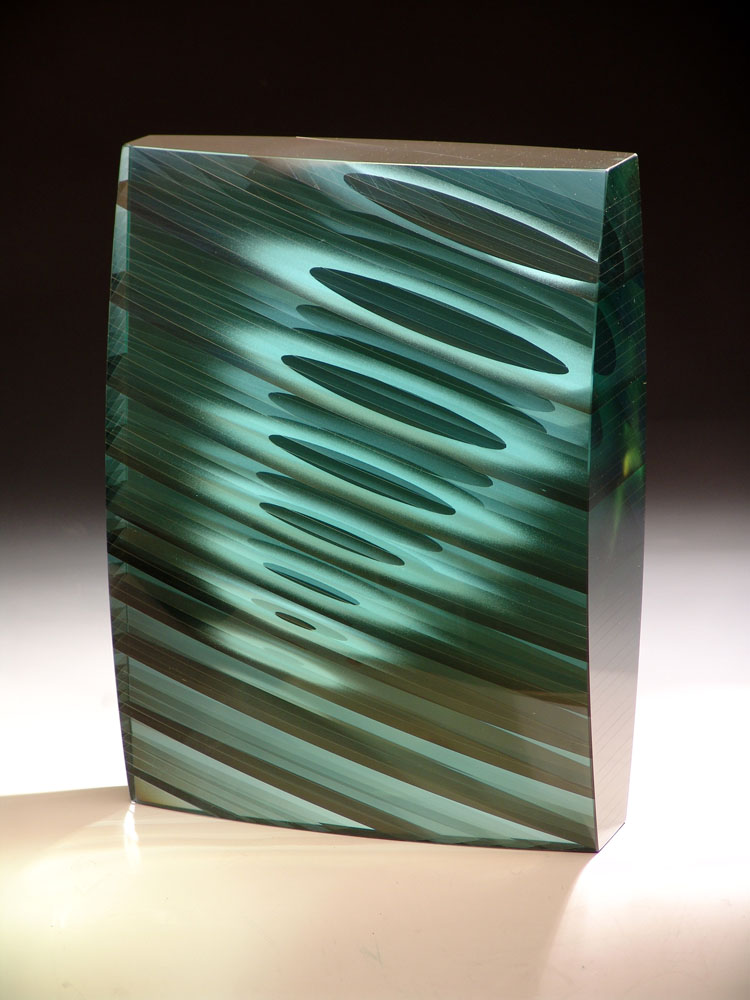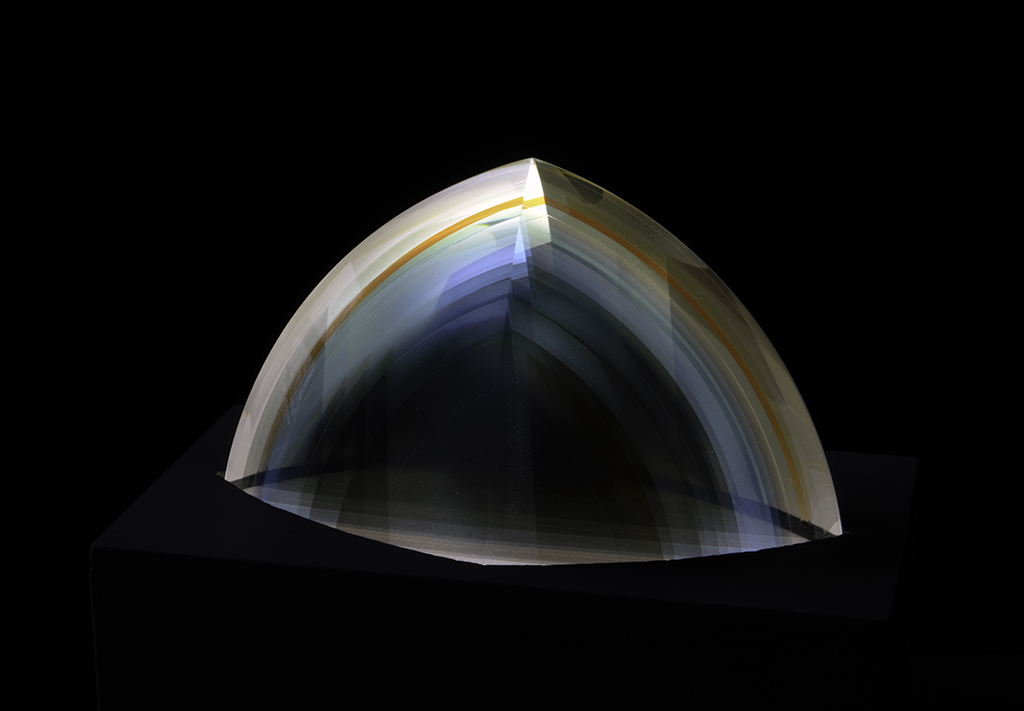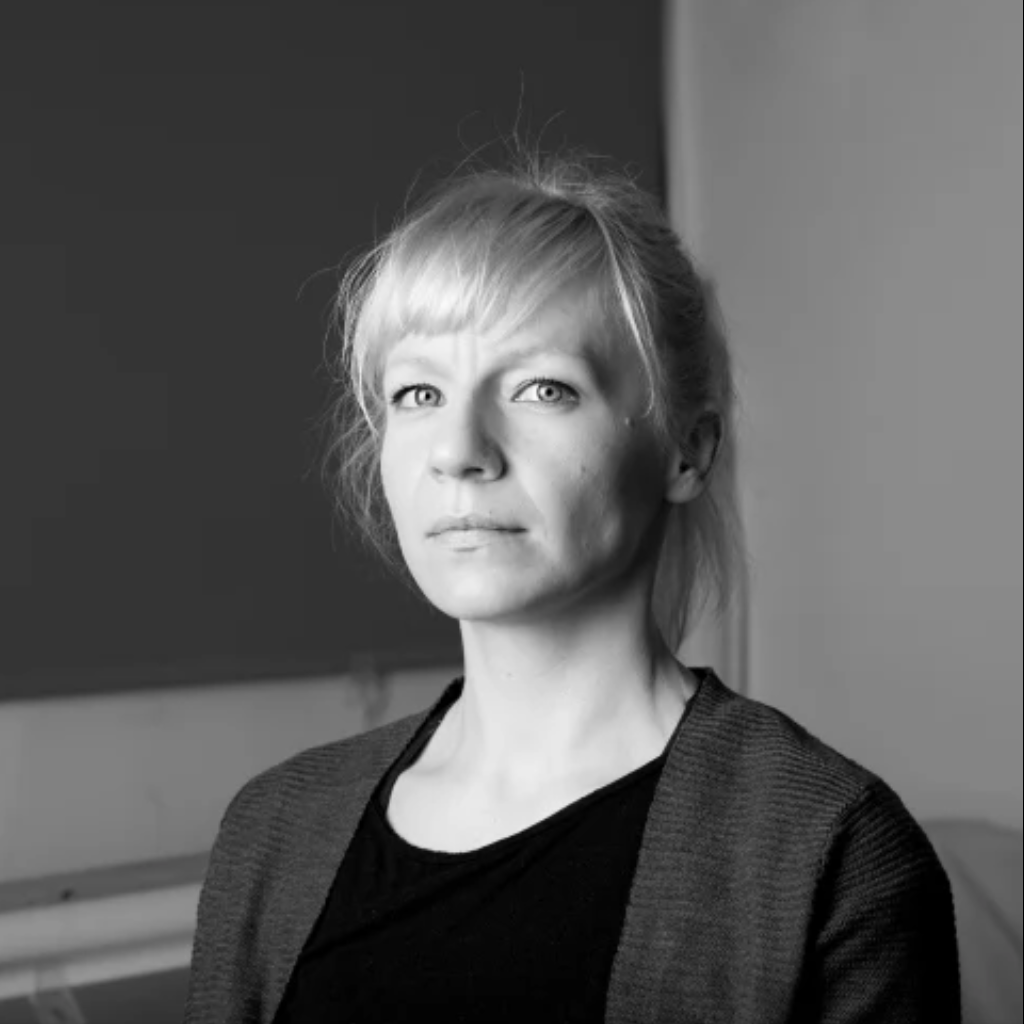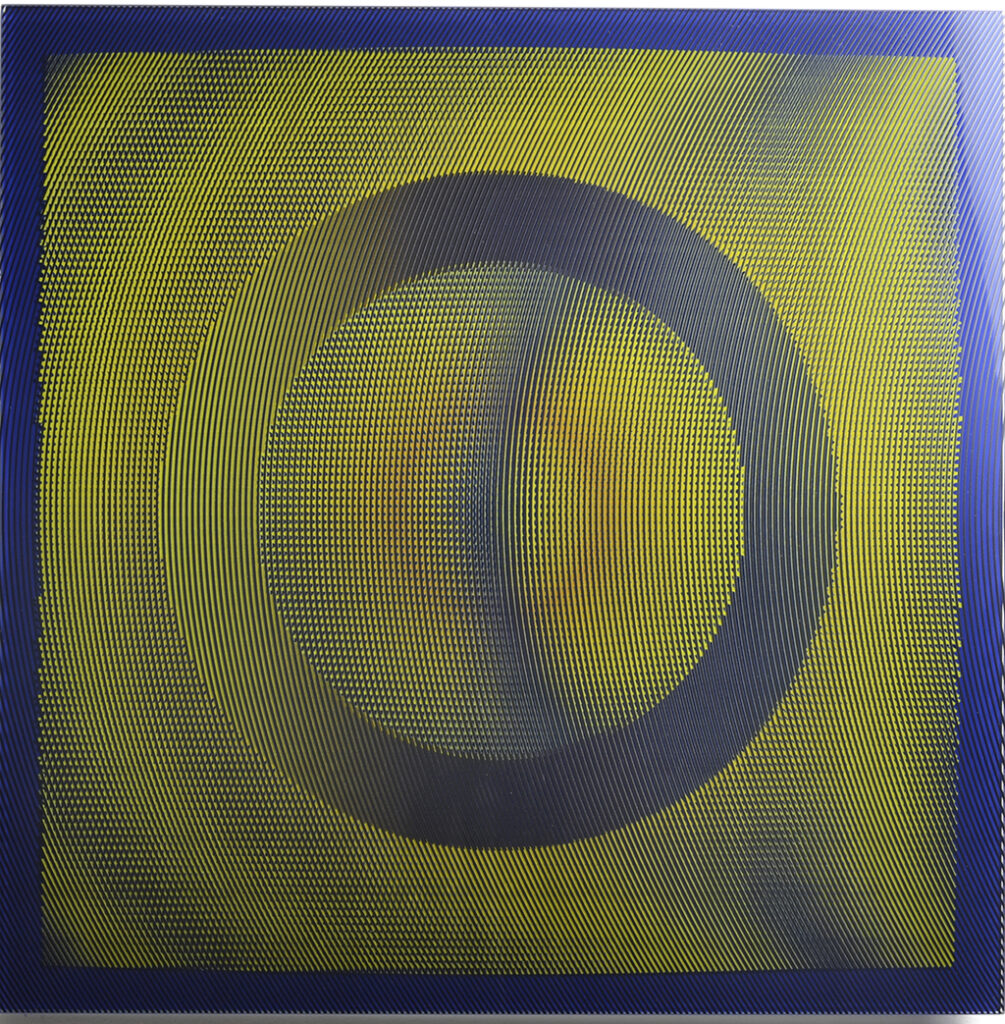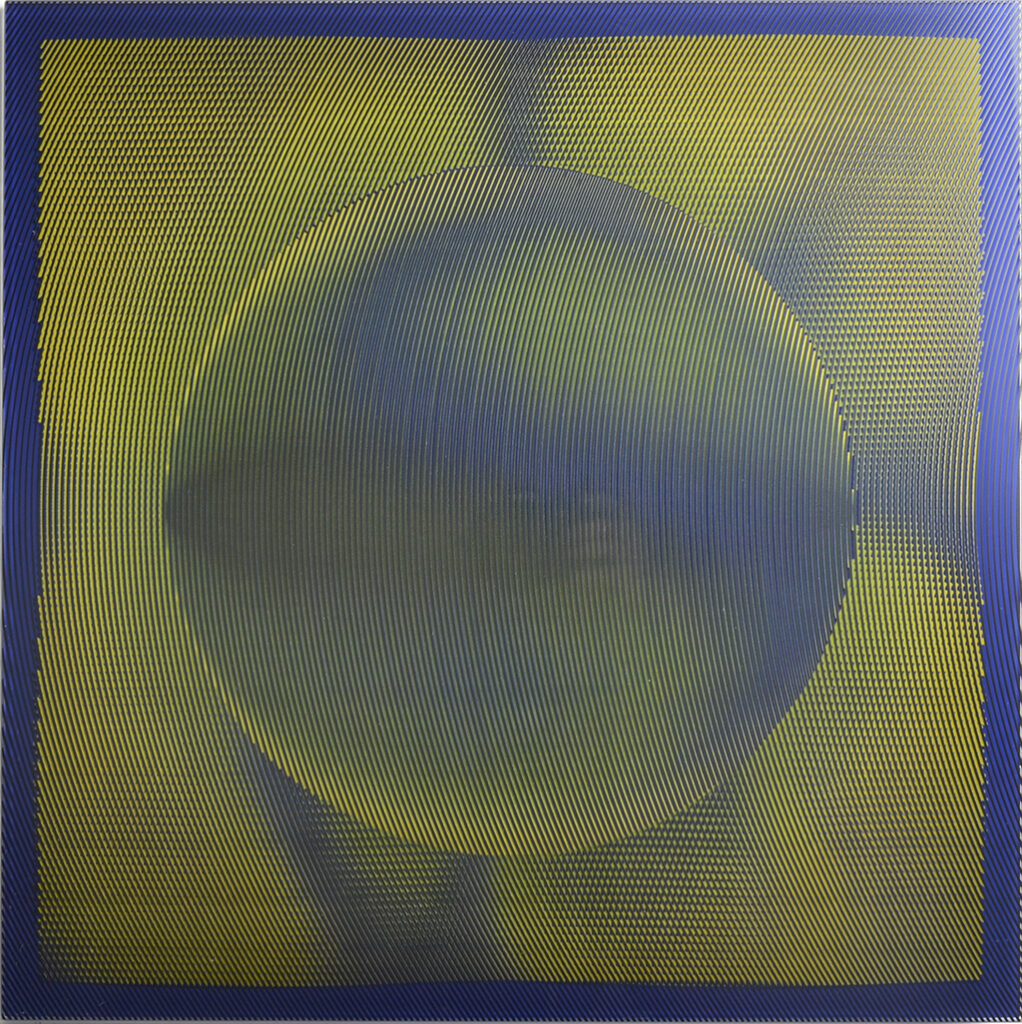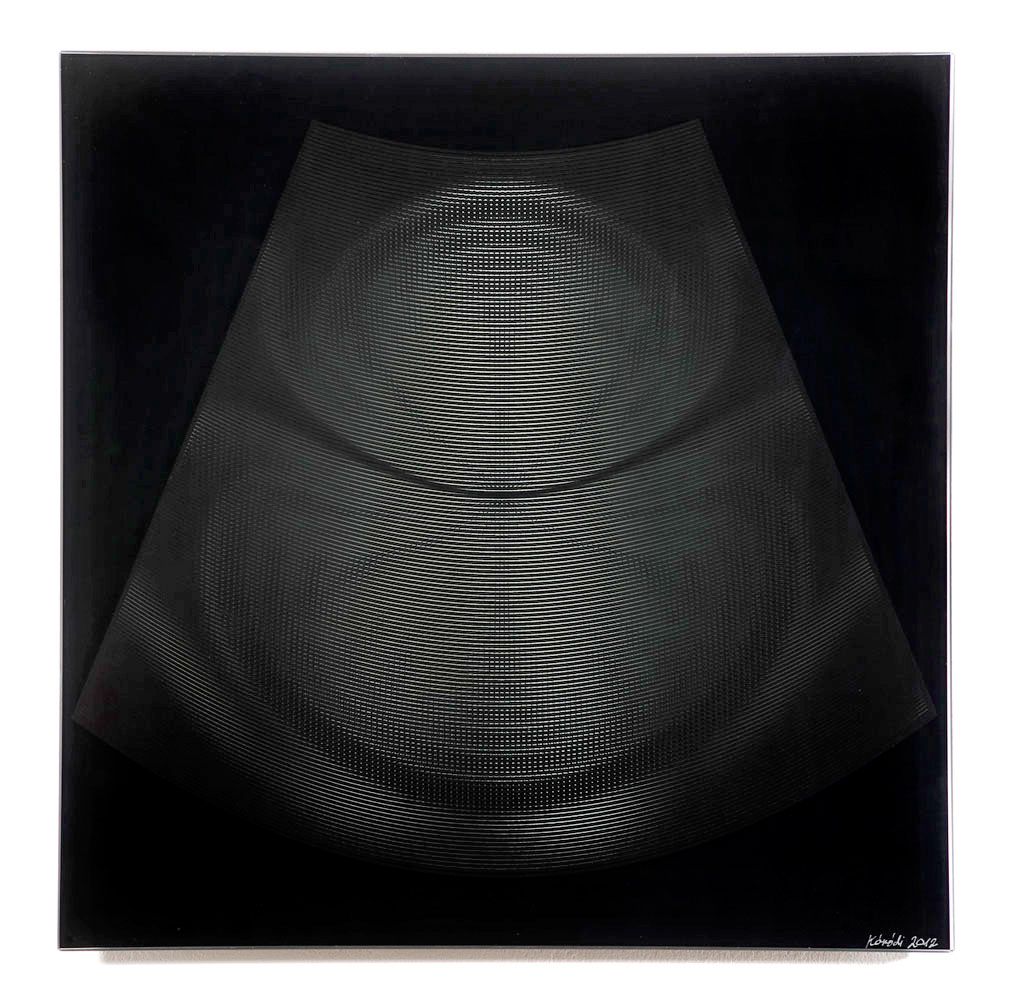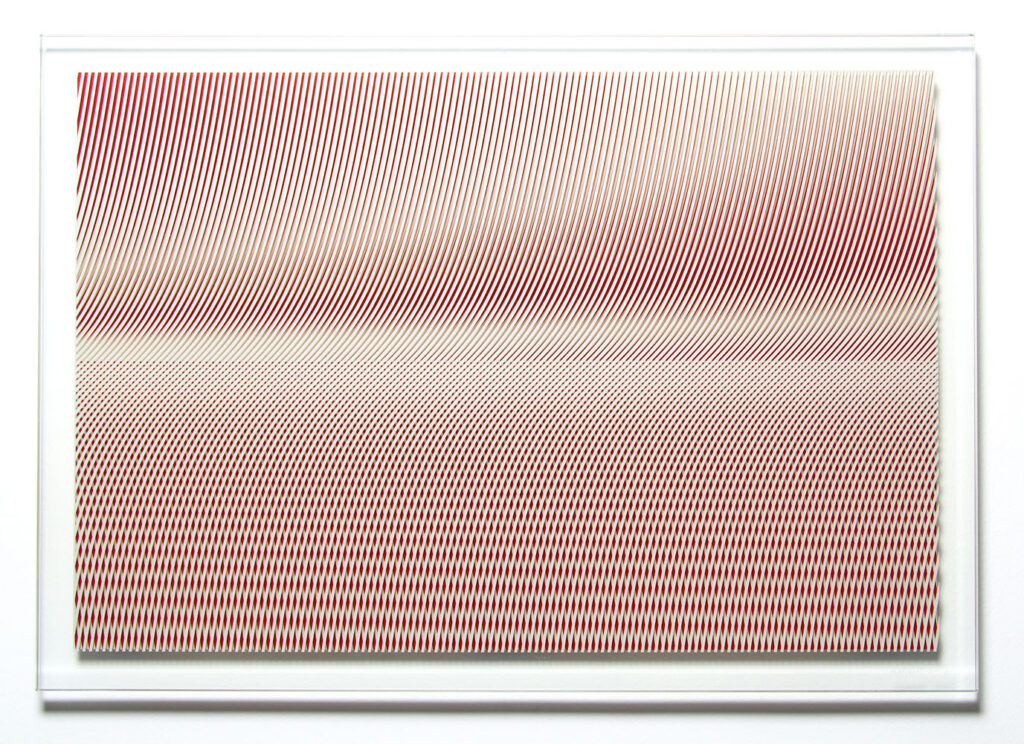Tamás Ábel (1991-) He studied at the Moholy-Nagy University of Art and Design, Budapest in 2010-2015. His colourful and polished works are inspired by the environment, the city of Budapest and the people in it.
Category: Artists
Ágnes Smetana
(1961-) She studied porcelain and glass at the Hungarian Academy of Craft and Design in 1980-85. She designs and executes ornamental glasses, sculptural vessels in accordance with the formal order and colour of art nouveau. The dominant motifs of her studio glasses inspired by nature display subtle stylization and extremely sensitive colouring. Her compositions of a reserved formal idiom are permeated by lyricism.
Balázs Sipos
(1979-) He studied glass design at the Hungarian Academy of Craft and Design in 1998-2002. As a designer of Ajka Crystal, he was involved in introducing casting, the glass technology using mould. As an artist he makes freely shaped glass sculpture and coloured pate de verre figures.
Dóra Varga
(1984-) She studied at the Moholy-Nagy University of Art and Design in 2006-2011. She experiments with pate de verre technique by combining colours and structures to create new sensory experience for the observer. Her creations reflect the dualistic nature of glass: transparency and colours combined with geometric but also fluid structures.
Gábor Gonzales
(1950-) Mr Gonzales is a self-taught artist, he has been a lecturer at the Academy of Craft and Design since 1970 and the leader of the glass workshop at the Silicate Design department since 1985. He makes glass sculptures from ground, glues sheets reduced to abstract forms. His latest works are composed by a single kiln-formed elegantly designed monochrome matt-finished forms.
György Buczkó
(1950-) He studied glass at the Hungarian Academy of Craft and Design in 1968-74. Between 1993-97 he was involved in organizing the international glass symposium in Bardudvarnok. He patented the glass slumping technique together with Eva Farkas in 1977. He worked as glass designer at the Salgotarjan Plate Glass Factory, he taught at the Secondary School of Fine and Applied Arts. and employed by the Tokod Glass Factory as a professional adviser.
György Gáspár
(1976-) At the Hungarian Academy of Craft and Design he pursued glass studies in 1998-2003. During his academic years he experimented with pate de verre and cast glass techniques while during a Danish scholarship he studied new grinding procedures. His style is characterised by deconstructive thinking, clever use of contrasting colours and mirrors to enhance and expand the space inside a glass-delineated space.
Hajnalka Virág
(1985-) She studied at the Moholy-Nagy University of Art and Design in 2006-2011 and with the Erasmus scholarship in Copenhagen in the Danish Design School in 2011. Her geometric works are inspired by the elements of modern life: computer, UFO and traffic.
István Czebe
(1967-) He graduated as a glass designer from the Hungarian Academy of Craft and Design in 1992 where he also obtained his Master’s diploma in 1996. He works echo organic, abstract forms. He is concerned with the free moulding of hot-glass, and with kiln-forming. One of his main interests is to combine the mixed glass techniques with other materials.
László Hefter
(1943-) As a metal sculpture he created steel works before turning towards glass. He studied glass at the Hungarian Academy of Craft and Design in 1970-75. The glass windows he made display a harmony of the constituents: colours, lines and lights. Figurative and abstract motifs, regular and irregular formations appear in counterpoint his works.
László Lukácsi
(1961-) He studied glass design at the Hungarian Academy of Craft and Design in 1980-85. At first he went in for modelling hot glass, switching over to cold glass sculpture later. He creates his works by gluing coloured plate glass and mirrors, grinding, polishing and lustering with acid. His spatial compositions combine constructivist, geometrical and organic forms. His works won prestigious international prizes (i.e.: Kanazawa and Fujita prizes in Japan) and part of museum collections including the Victoria and Albert Museum in London.
Margit Tóth
(1963-) She studied glass at the Hungarian Academy of Craft and Design in 1981-86. She uses mould melted technique to create her plastic world and satisfy her imagination. Her figures from the animal kingdom have human features and constructed classicizing statues sometime looking like fossils from a familiar but not exactly identifiable mythology.
Mária Lugossy
(1950-2012) She received both her undergraduate and graduate degrees from the Hungarian Academy of Applied Arts. Her work is fundamentally sculptural, governed by an ambition to create form and organise space. She created her glass compositions mainly from glued, sand-blast plate glass which unfold their message and xenolithic effect through the included materials. Her work can be found in museums worldwide, including the Musee du Louvre in Paris, Corning Museum of Art in New York, Rijksmuseum in the Netherlands, and the British Museum in London.
Márton Horváth
(1941-2013) He studied glass at the Hungarian Academy of Craft and Design in 1968-73. Since 1976 he had taught at the Hungarian Academy, later university of Craft and Design as senior lecturer, then university professor. The overriding feature of his art is the adaptation of the handicraft traditions as proven by his glass pieces melted onto their surface and the iridescent pieces also favoured by art nouveau.
Mihály Melcher
(1953-) He studied glass design at the Hungarian Academy of Craft and Design in 1981-86. His aim is to produce works that help man’s elevation from the material world into the extrasensory invisible sphere. To this end he uses the technological achievements of Egyptian glass art. His glass sculptures are characterised by solidity and sometimes by a duality of translucent geometrical and organic forms.
Péter Borkovics
(1971-) He pursued studies at the glass-porcelain section of the Hungarian Academy of Craft and Design in 1990 to 1994. He learned computer design in Milan’s Polytechnico Atteneo in 2002-03. Since 1997 he has been a lecturer in the glass section of Budapest Secondary School of Applied Arts. His objects, sculptures and ornaments emphasize the peculiarities of hot glass and the fluidity of petrifying glass.
Péter Botos
(1945-) After studies in sociology at ELTE Faculty of Arts h worked at the Fine Mechanical Works as marketing manager until 1989. Since 1990 he has been the glass designer for Baccarat. He has been involved in glass since the 1970s. At first he made functional ware, gradually shifting to glass sculpture. He is intrigued by the light effects of optical glass, by the exploitation of effects caused by the encounter and interplay of various glass material. His works are characterised by formal clarity and meticulous execution.
Zoltán Bohus
(1941-2017) Studied ornamental painting in the Hungarian Academy of Crafts and Design under the guidance of Gyorgy Z. Gacs who established the higher education of glass design at the same institute. Mr Bohus is considered as one of the founding members of the modern Hungarian glassmaking movement. He was a university professor since 1993 and head of the department from 1993 to 1996.
Both during and after the academic years, his works displayed his experimental nature with materials and technology, and fascination with basic forms as a representative of neo-constructivist, minimalist sculpture. He won numerous international prizes, many major glass museums have his works in their collections including the Corning Museum of Glass (USA), Kunstmuseum Dusseldorf (Germany), and Musee des arts Decoratifs, Lausanne (Switzerland).
Zsuzsanna Kóródi
(1984-) She studied at the National College of Arts and Design in Dublin in 2009 and at the Moholy-Nagy University of Art and Design in 2005-2010. She utilizes the limitless optical properties of glass. Regardless of the theme she always tries to organize these properties in systems to express what she wants to show. Kinetics is not only a consequence of the systems she builds, but one of the most important part of it. The other important part is the observer who can always change what to see just by moving around the object.

